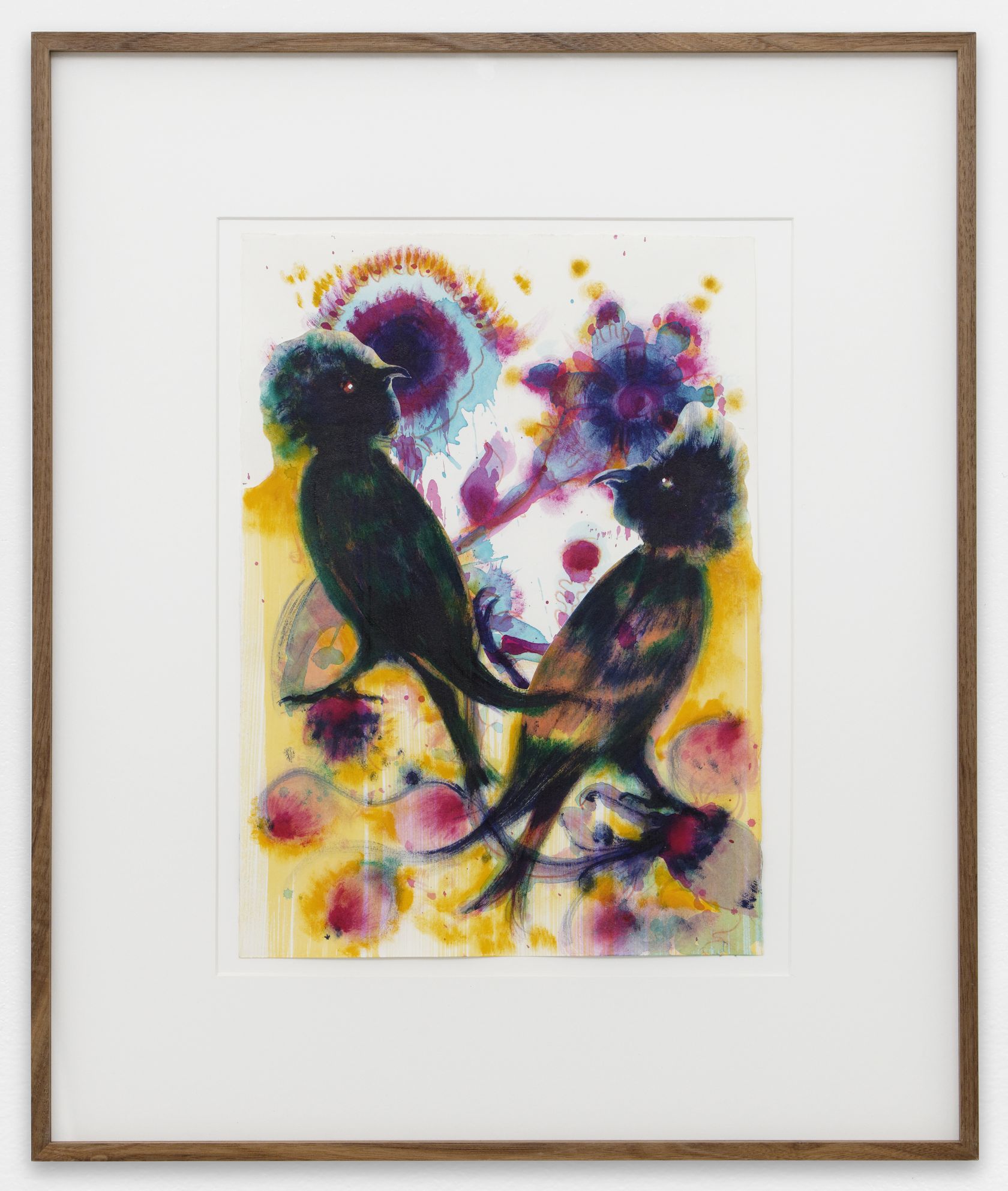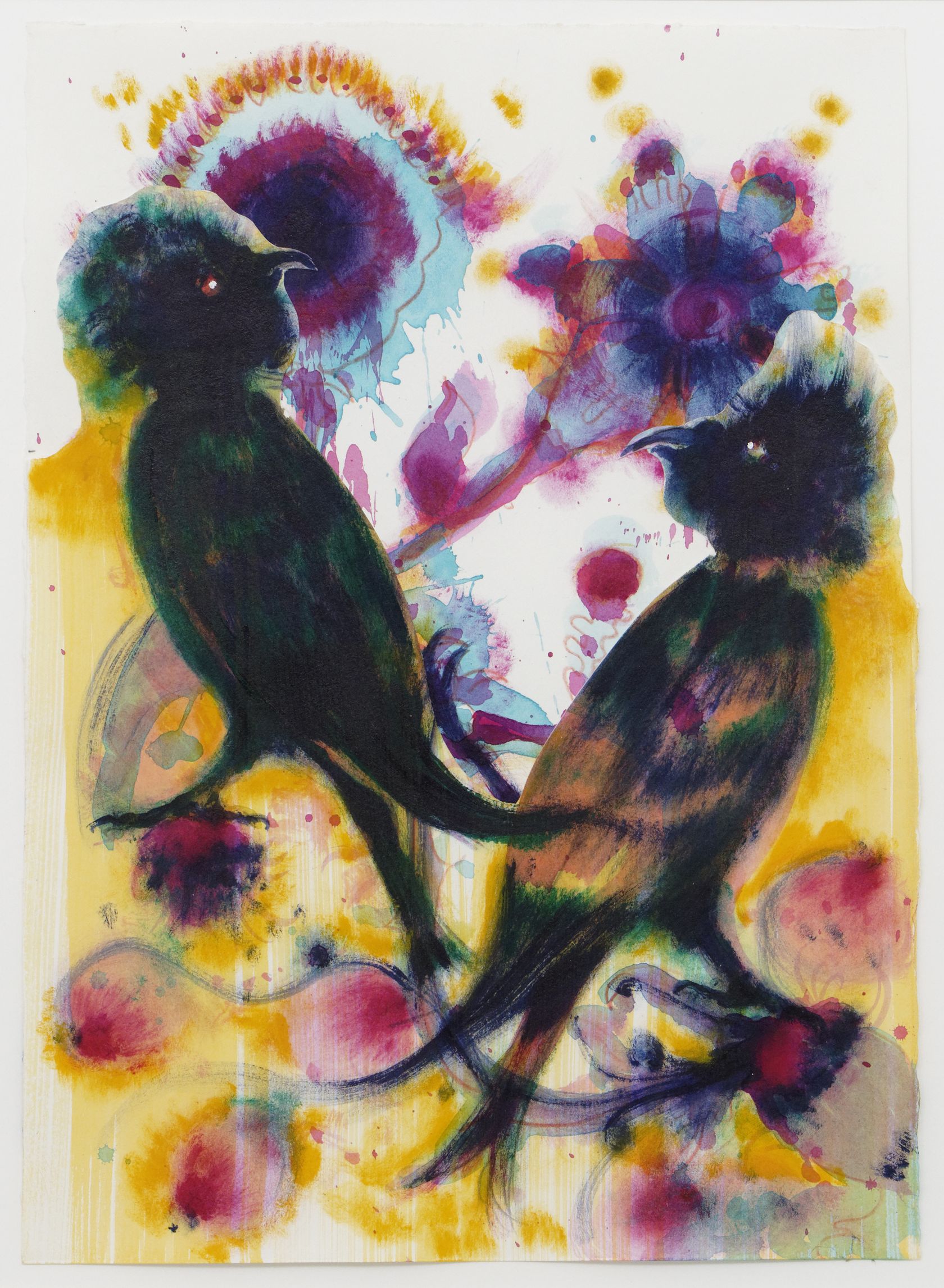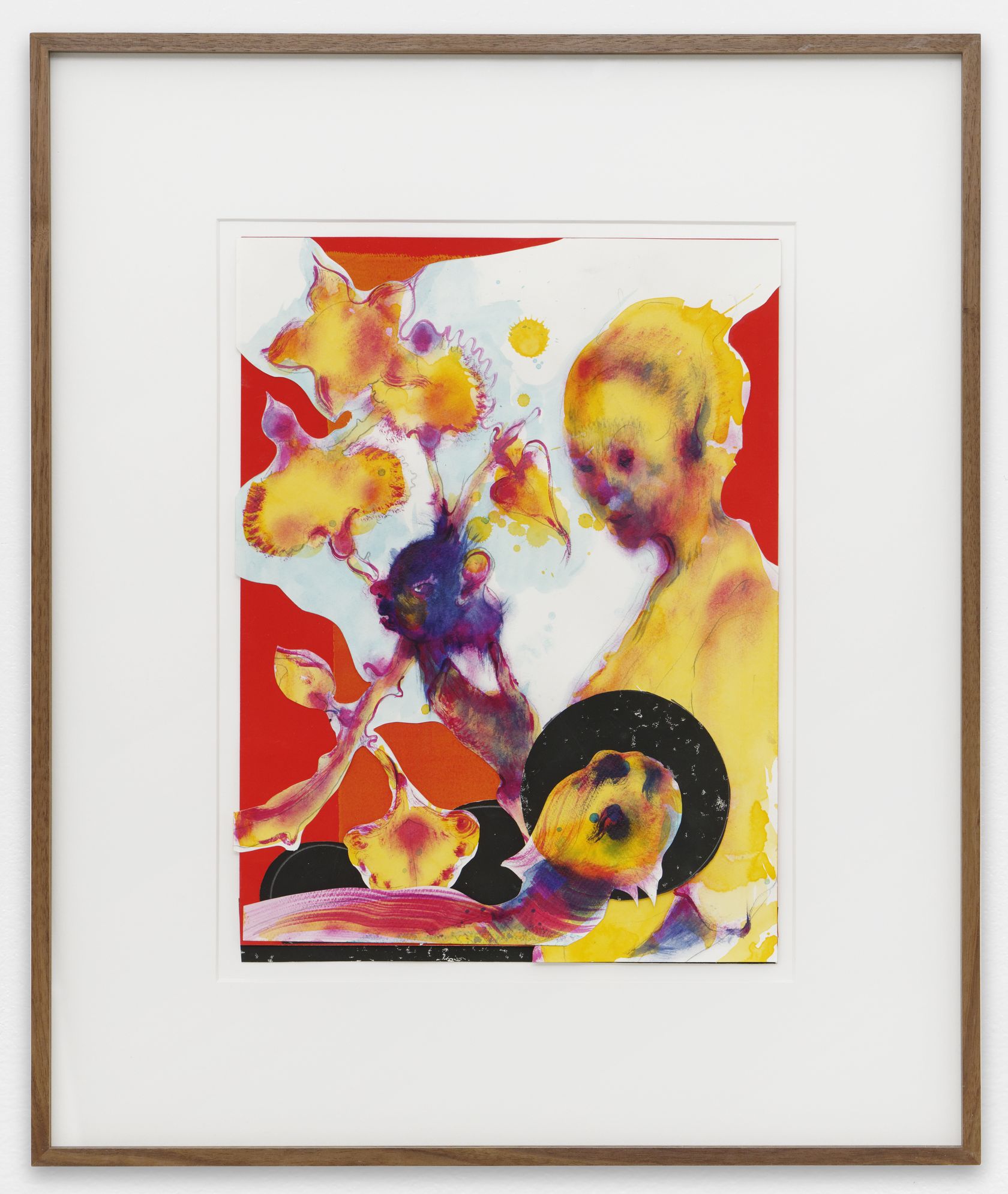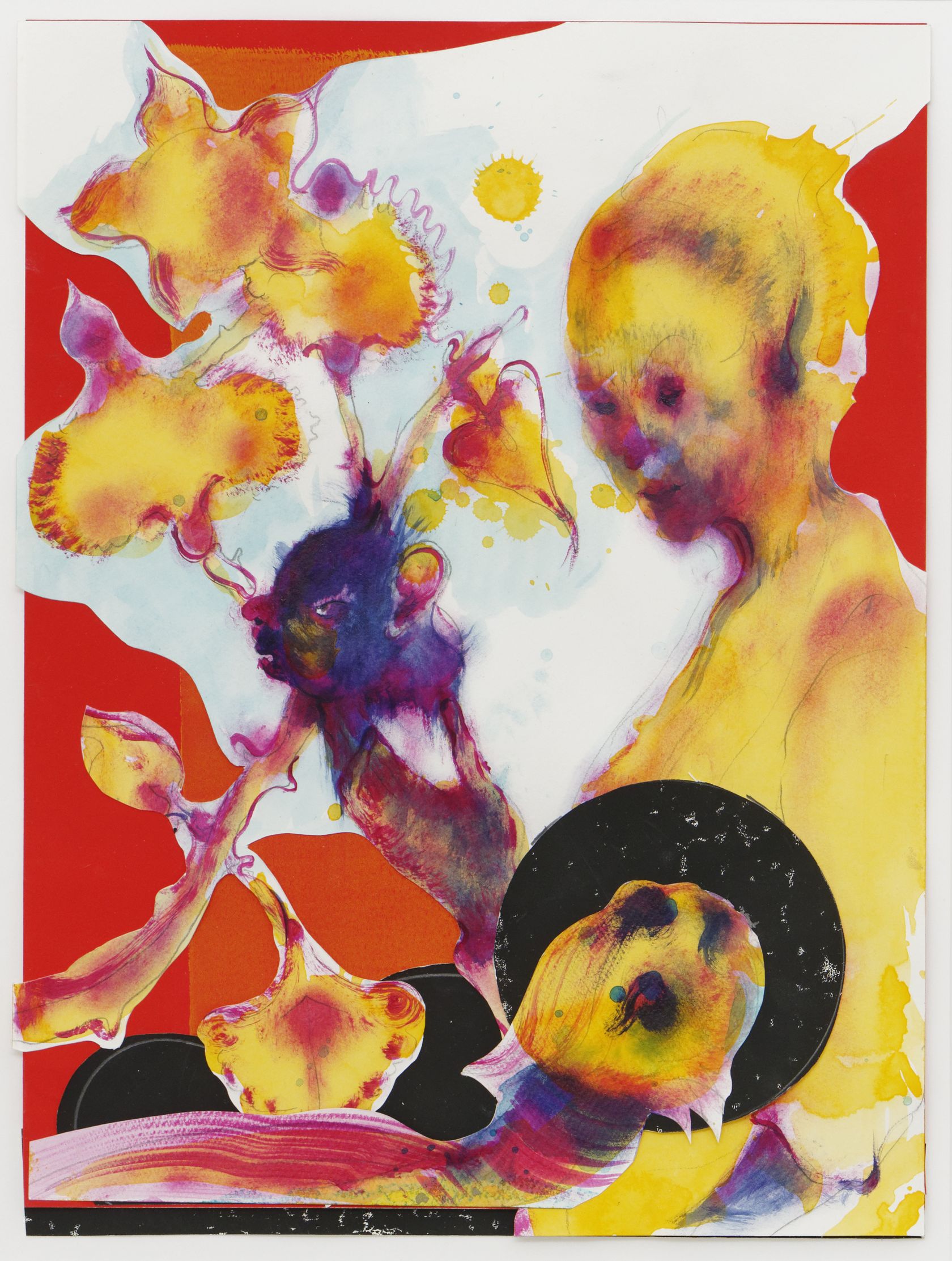To learn more about available works, please provide your contact information
Within their practice, Gert and Uwe Tobias have revived a wide range of traditional image-making techniques—woodcut printing, low-relief sculpture, drawing using typewriters, watercolor, gouache, ceramics and lacemaking—into which they breathe new life using contemporary means. Their oeuvre is mainly influenced by the myths, costumes, crafts and commonplace motifs of their native Transylvania, subverted and fused with elements of popular culture, abstract art and contemporary graphic design. From this rich pictorial repertoire, they create a varied body of work in which legends and folk tales, carnivalesque figures and archaic elements are subject to constant metamorphoses.
Born in Romania in 1973, the twin brothers Gert and Uwe Tobias have been developing a collaborative practice since 2001. Their four-handed work bears witness to the perfect symbiosis of their individual gestures, striving towards a common goal. Today, they live and work in Cologne, Germany. The twin brothers have recently enjoyed exhibitions at the MoMA in New York, the Sprengel Museum in Hannover and the Pinakothek der Moderne, Munich, both in Germany, The Dhondt-Dhaenens Museum in Deurle, Belgium, the Whitechapel Gallery in London, the Kunstmuseum Ravensburg, Germany, the Kupferstichkabinett at the Staatliche Kunstsammelungen in Dresden, the Maramotti Collection in Reggio Emilia in Italy and the UCLA, Hammer Museum of Art in Los Angeles as well as many other venues. In 2022, they were awarded the Prix du Dessin (Drawing Prize) by the Fondation d’Art Contemporain Daniel et Florence Guerlain.
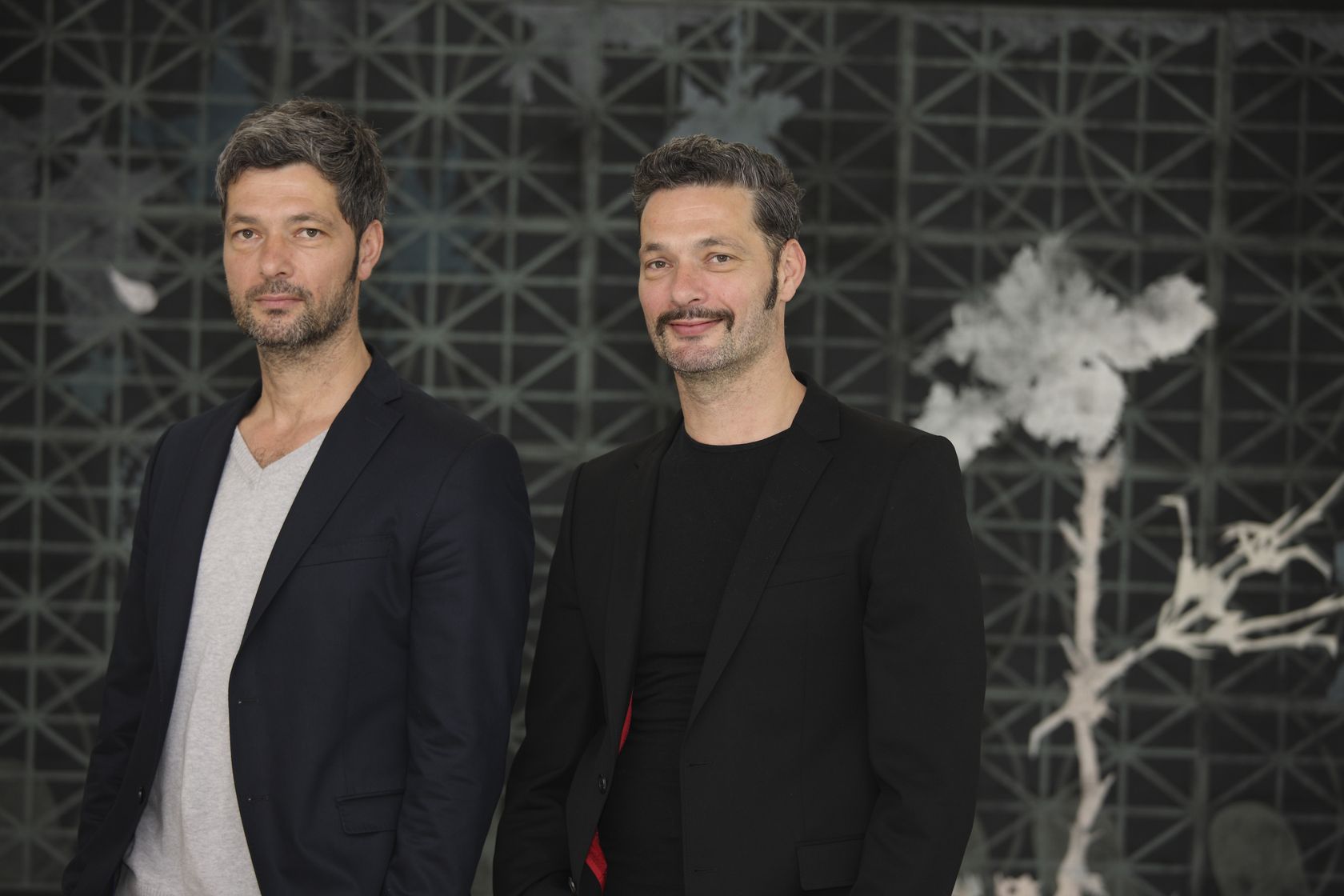
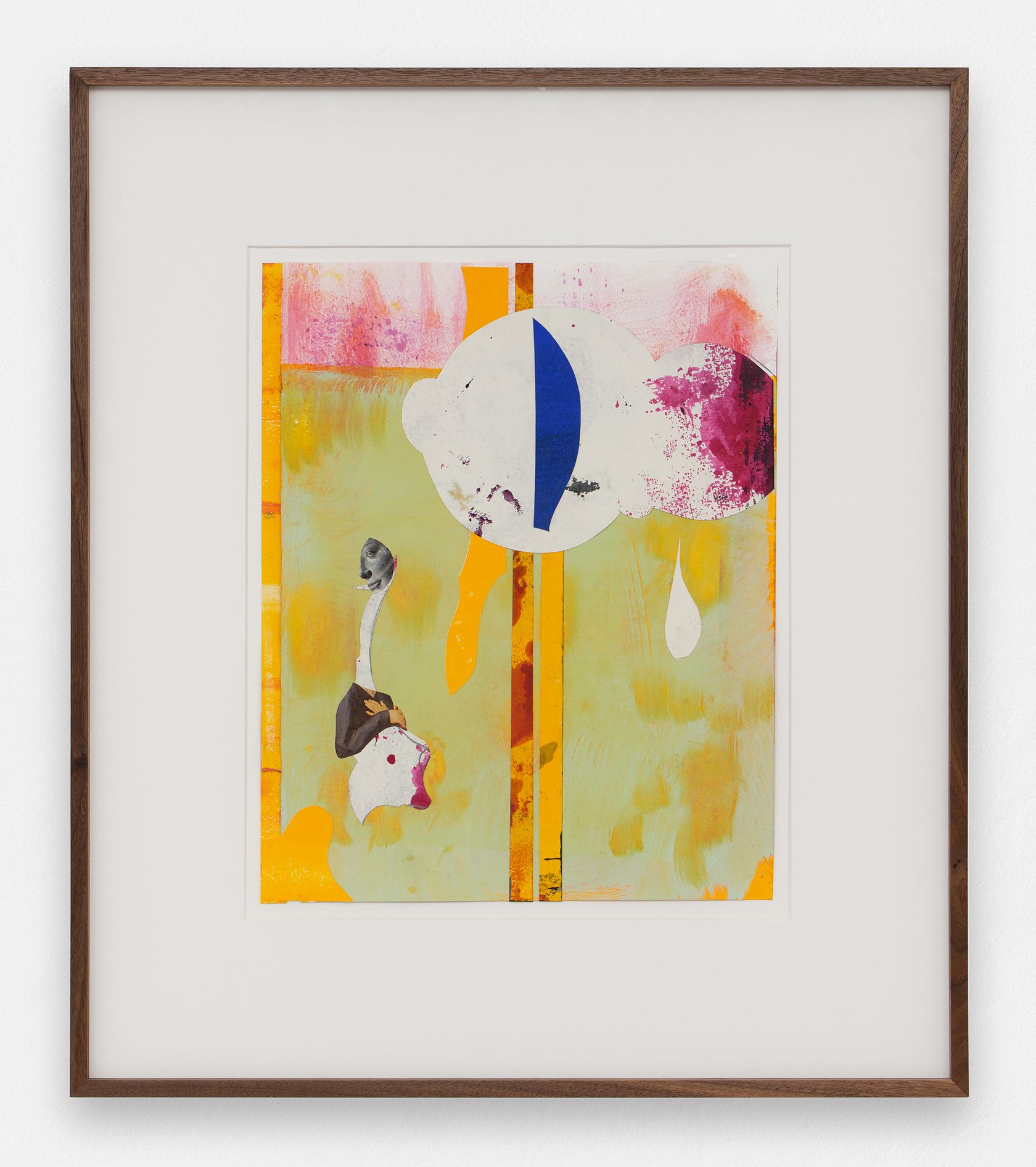
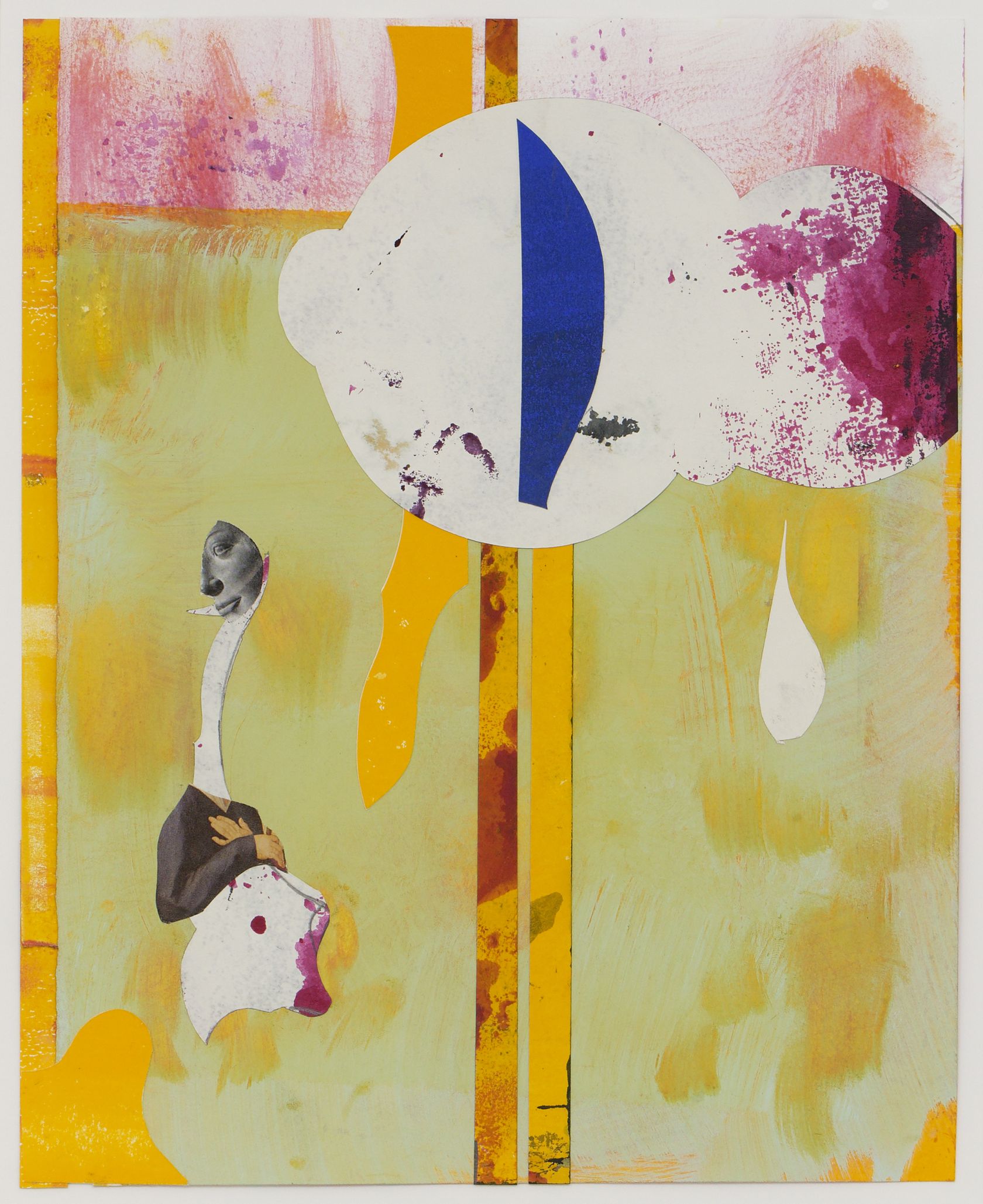
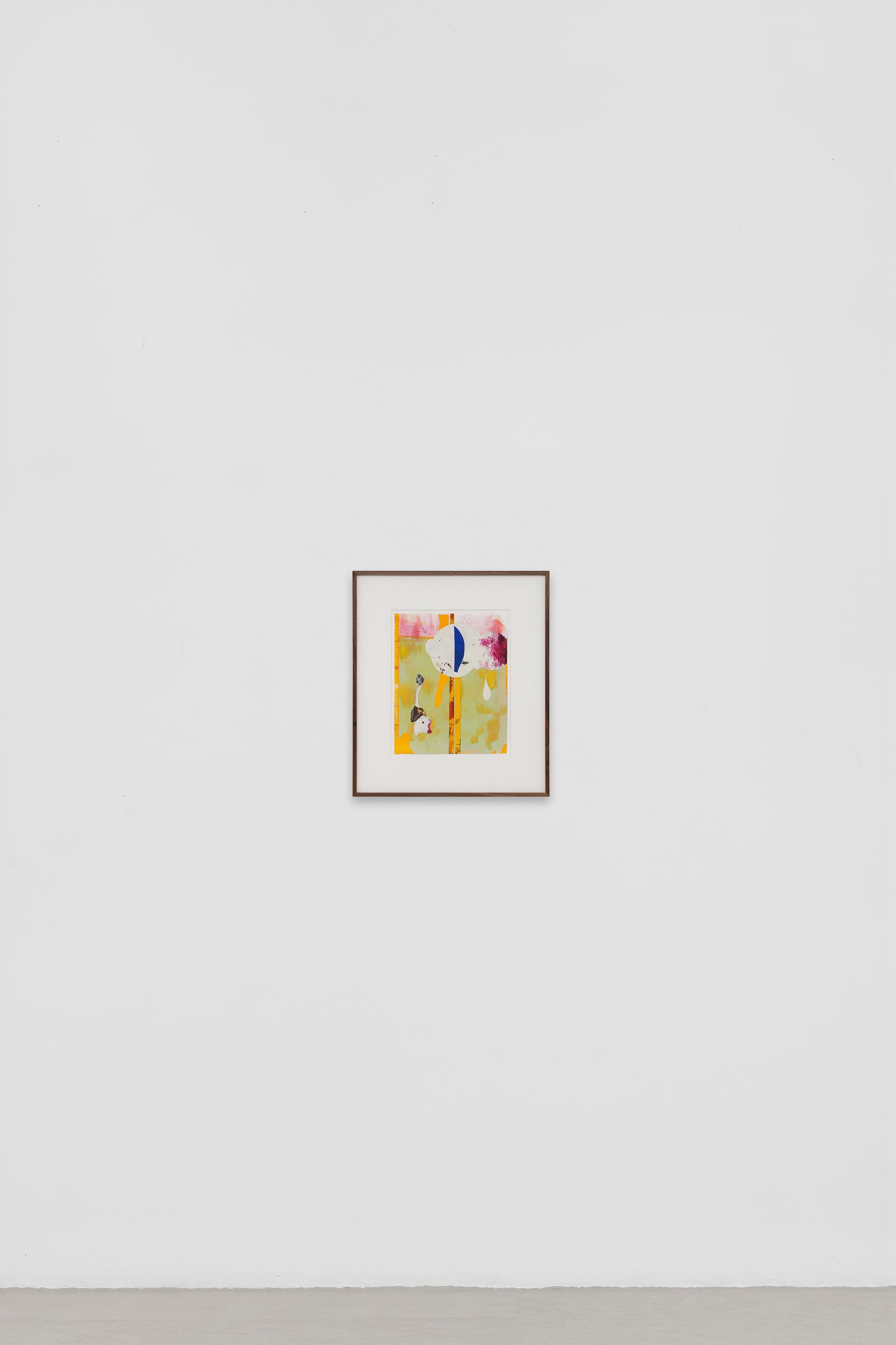
- Gert & Uwe Tobias
- Untitled (GUT/C 3189/00) , 2023
- Mixed media and collage on paper
-
- 37 ×
- 29.5 × cm
- 14 9/16 ×
- 11 5/8 × inches
- unframed
- 59 ×
- 51.5 ×
- 3 × cm
- 23 1/4 ×
- 20 1/4 ×
- 1 3/16 × in
- framed
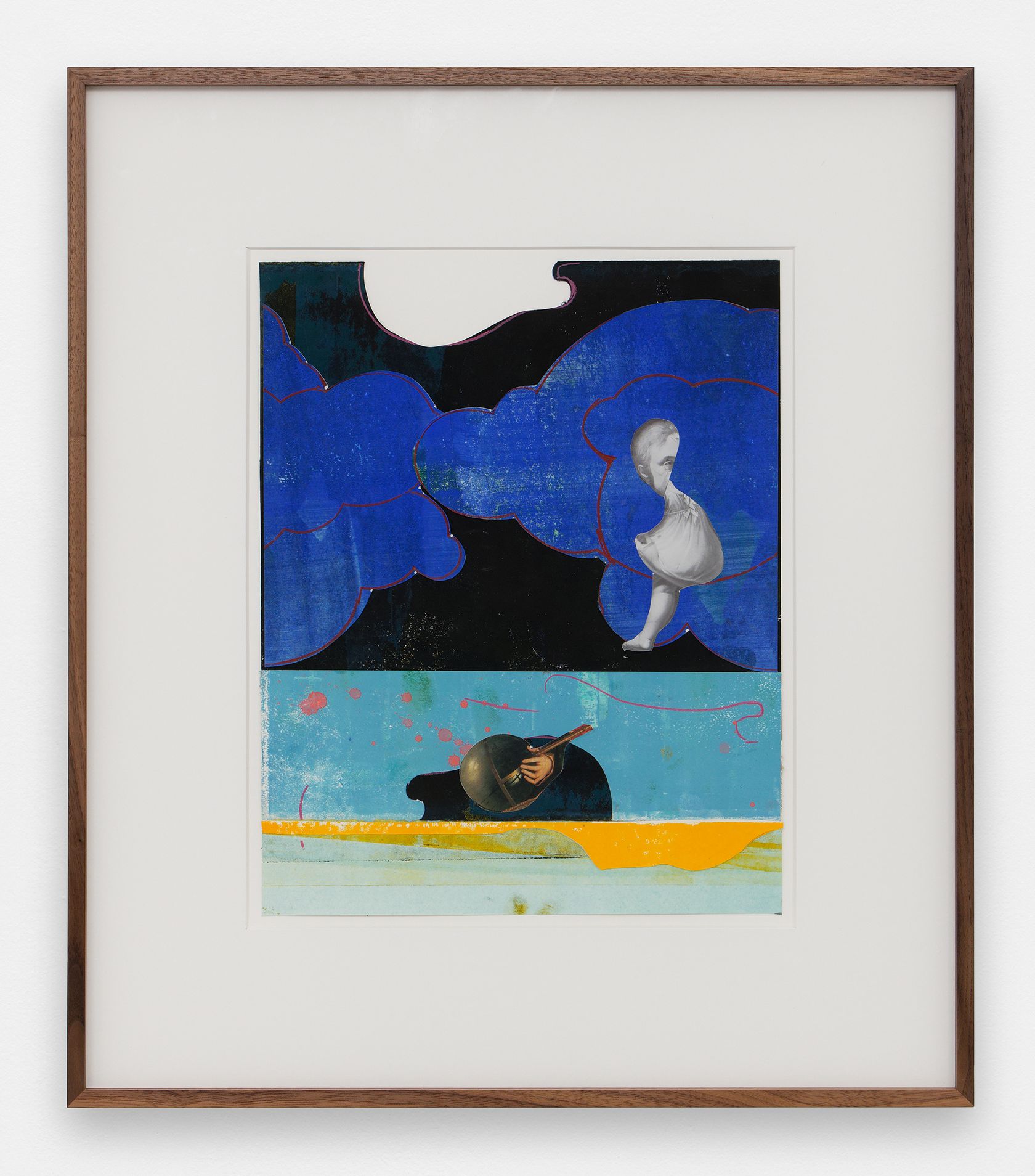
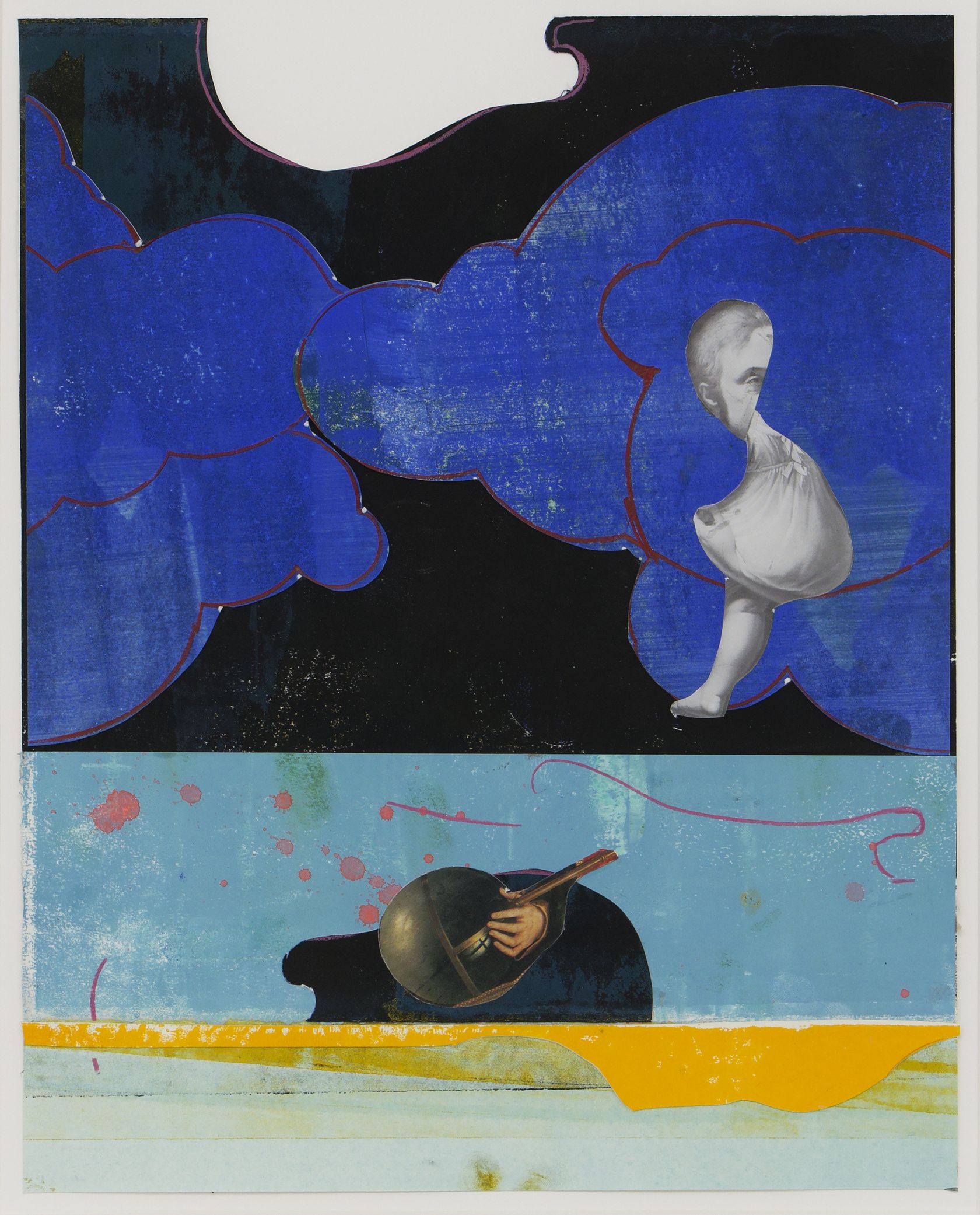
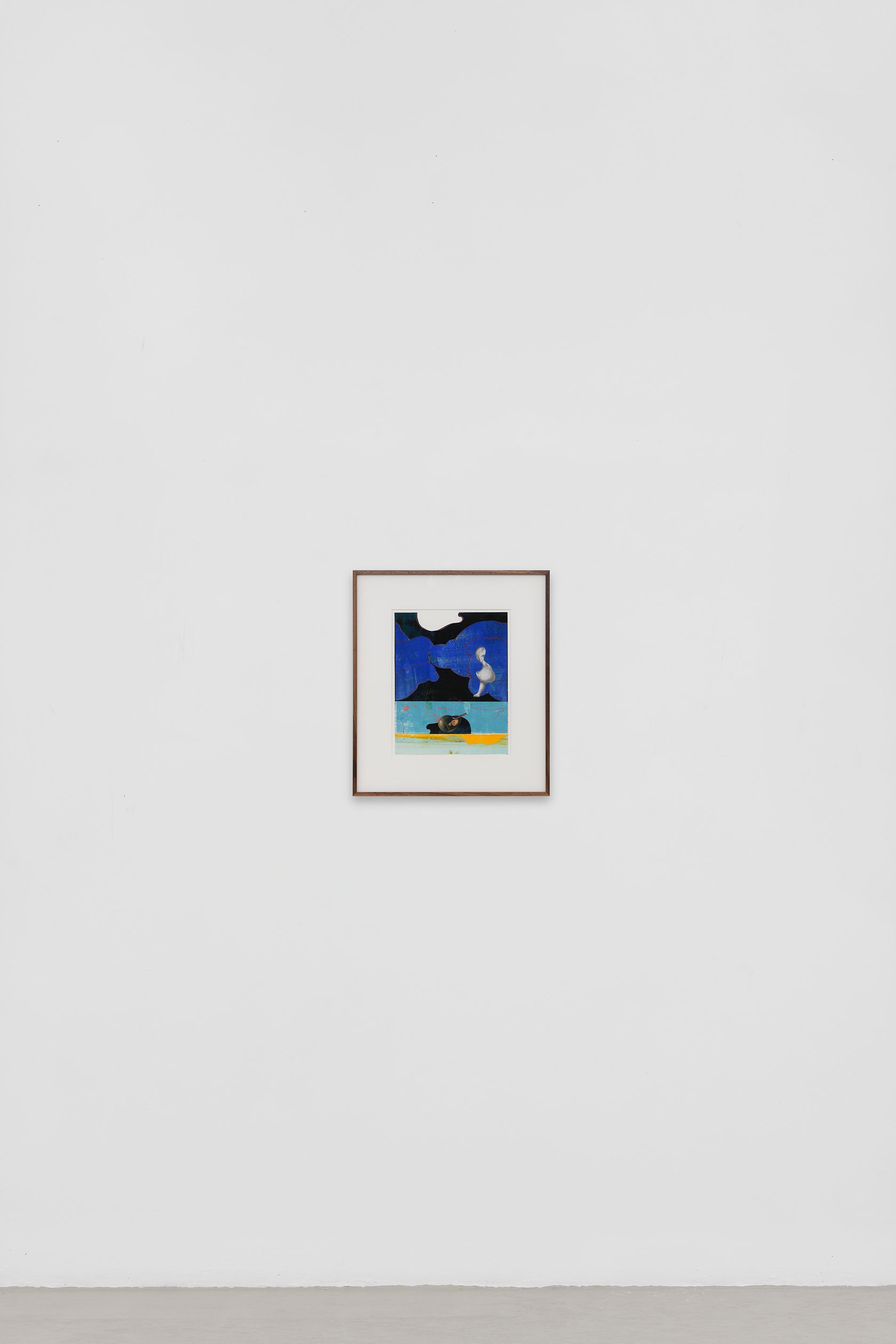
- Gert & Uwe Tobias
- Untitled (GUT/C 3187/00) , 2023
- Mixed media and collage on paper
-
- 37 ×
- 29.5 × cm
- 14 9/16 ×
- 11 5/8 × inches
- unframed
- 59 ×
- 51.5 ×
- 3 × cm
- 23 1/4 ×
- 20 1/4 ×
- 1 3/16 × in
- framed
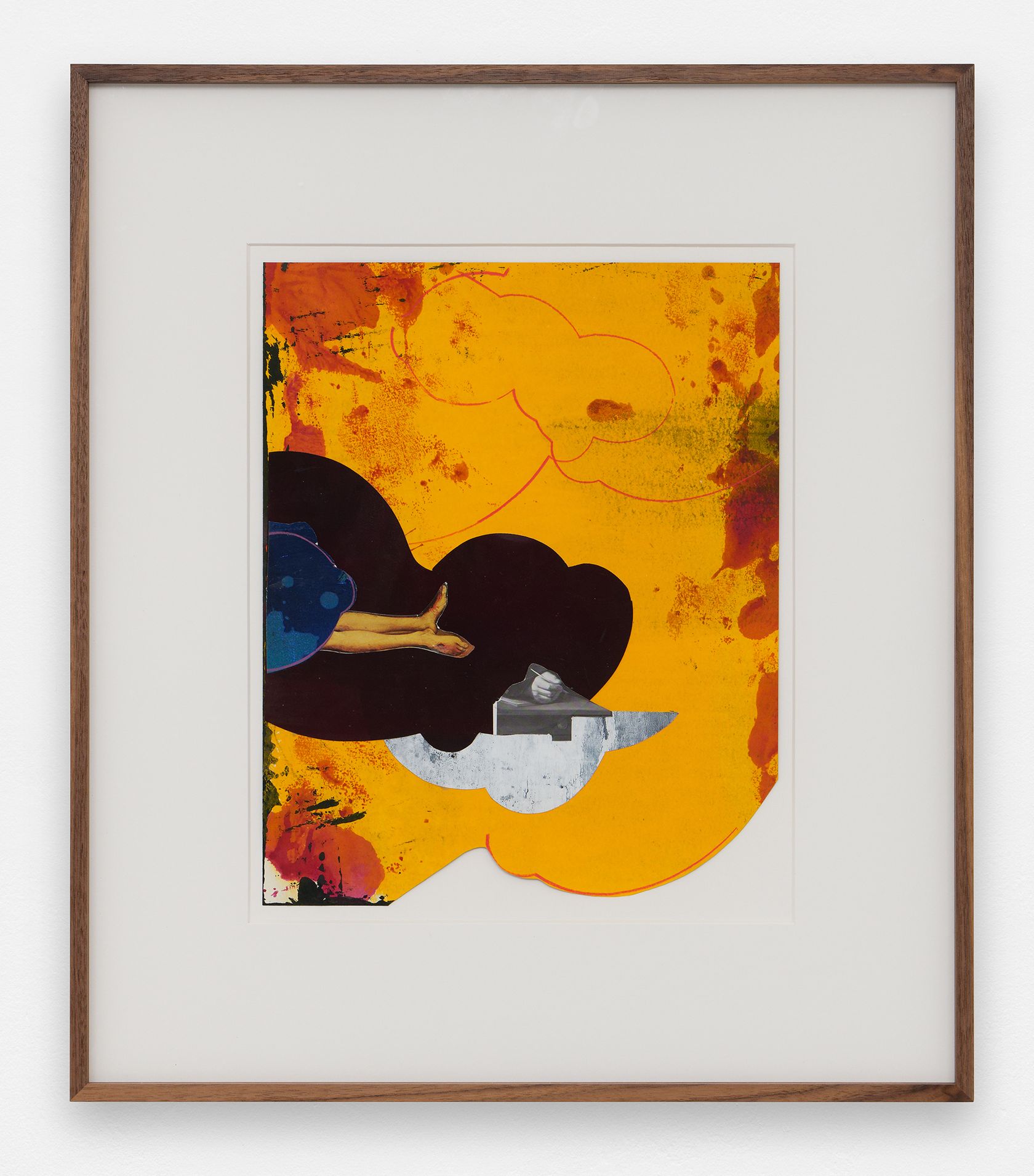
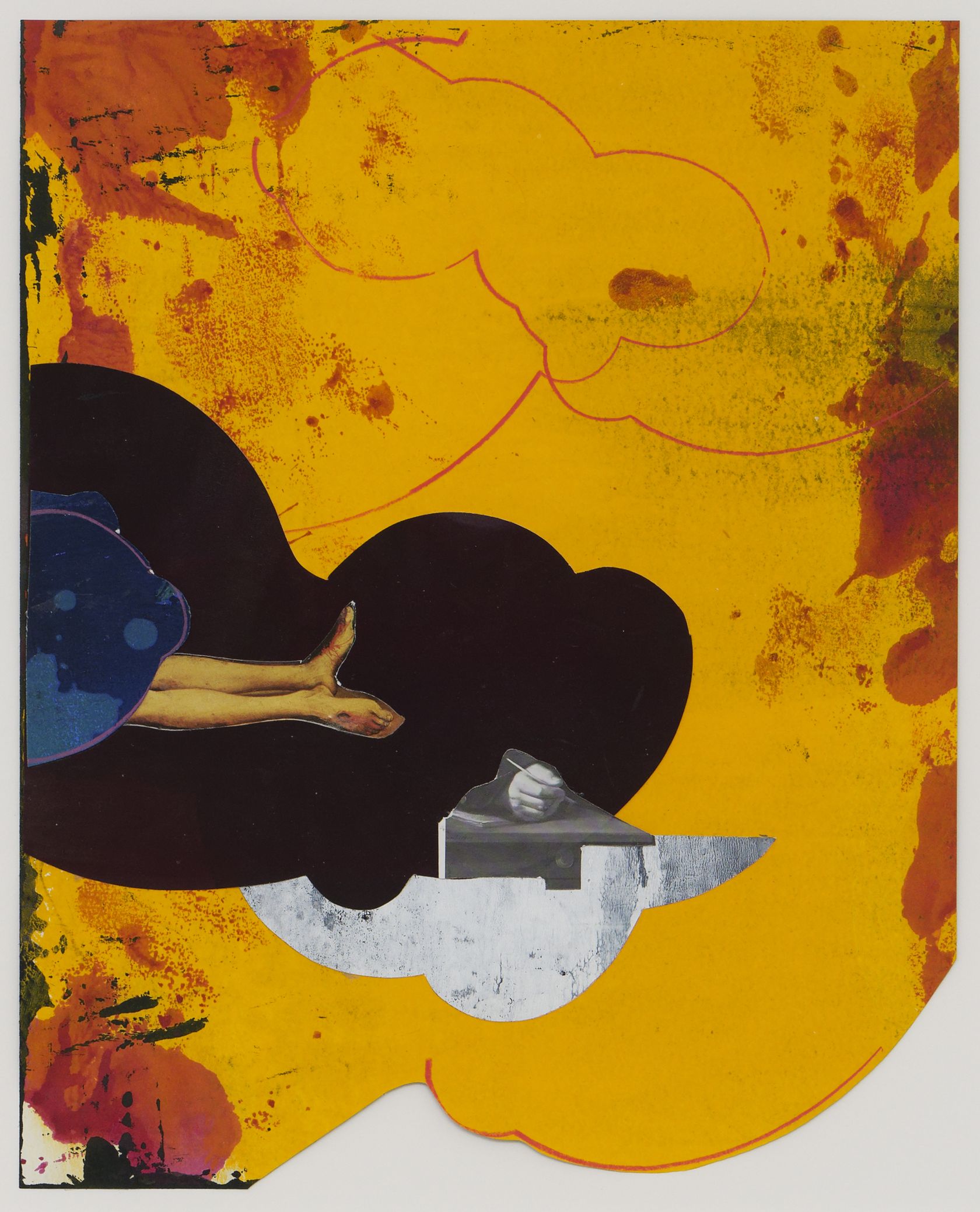
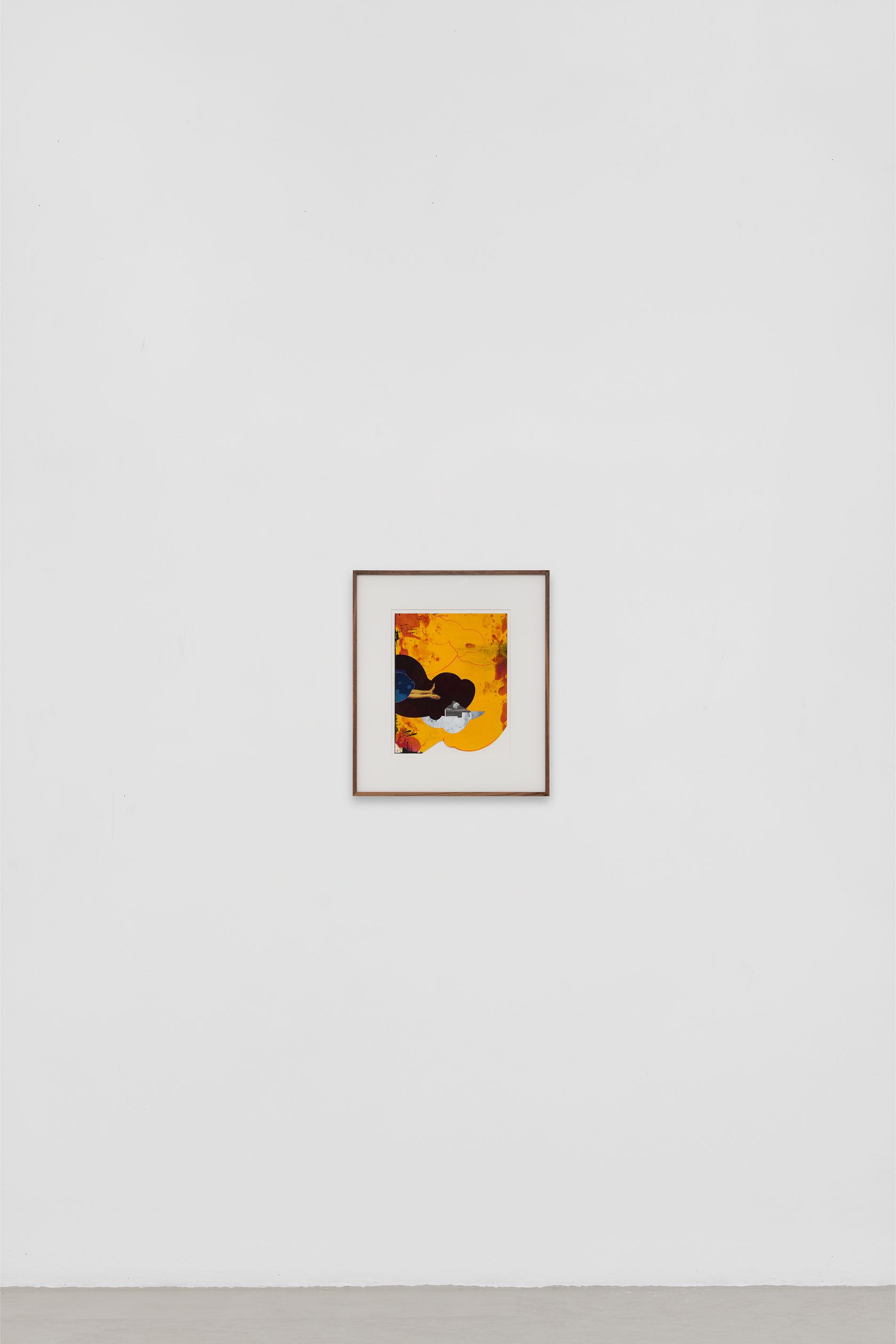
- Gert & Uwe Tobias
- Untitled (GUT/C 3186/00) , 2023
- Mixed media and collage on paper
-
- 37 ×
- 29.5 × cm
- 14 9/16 ×
- 11 5/8 × inches
- unframed
- 59 ×
- 51.5 ×
- 3 × cm
- 23 1/4 ×
- 20 1/4 ×
- 1 3/16 × in
- framed
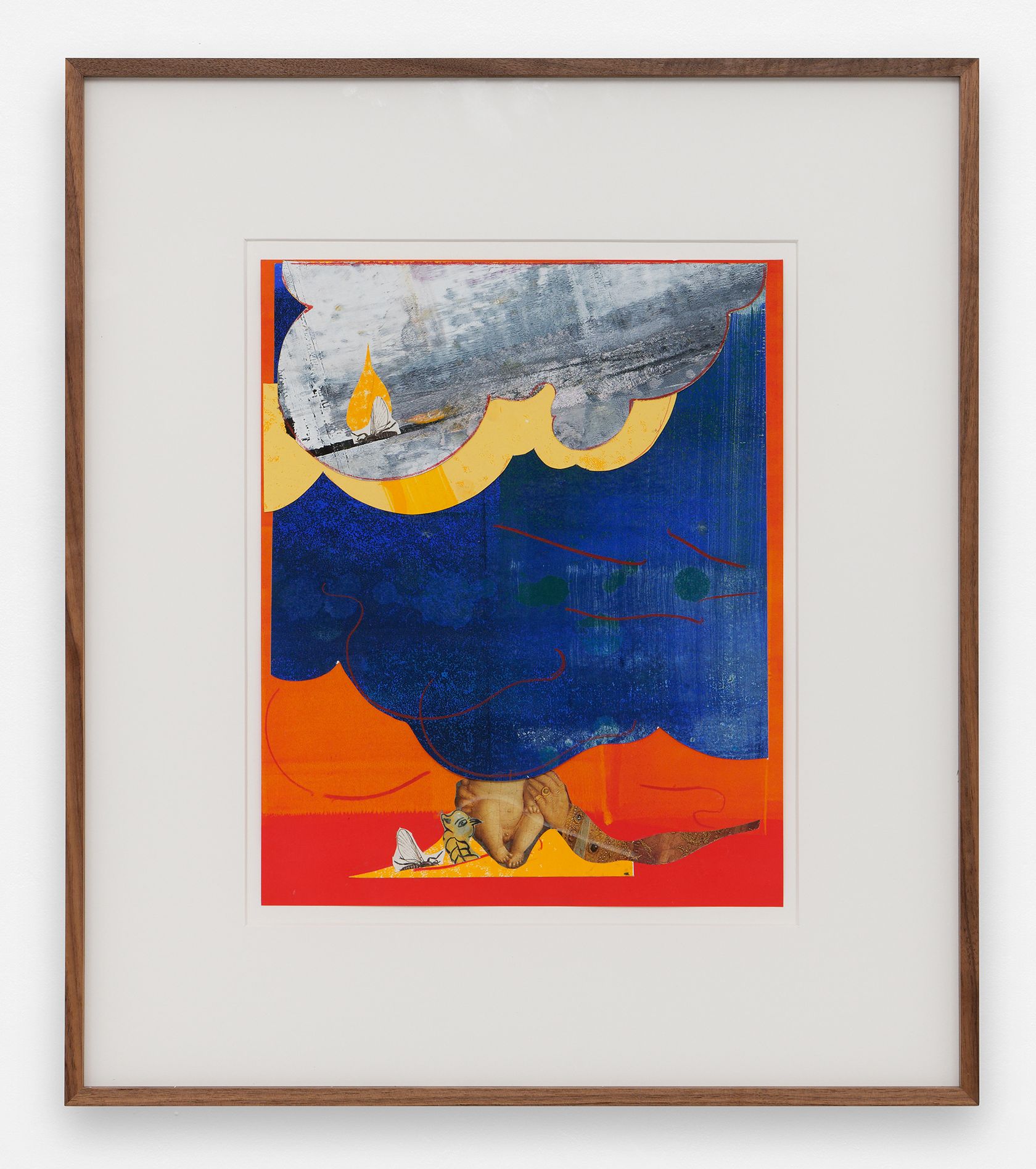
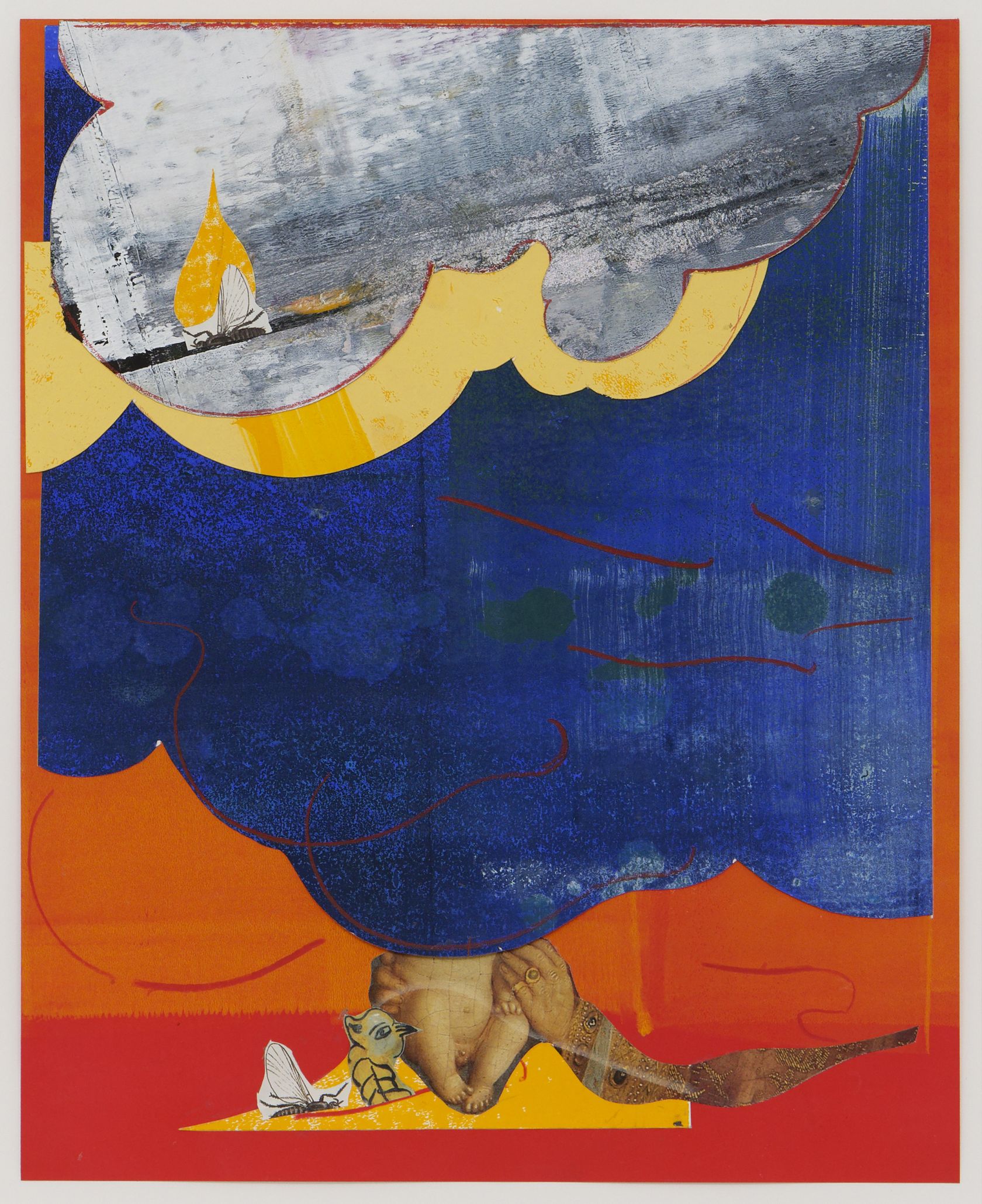
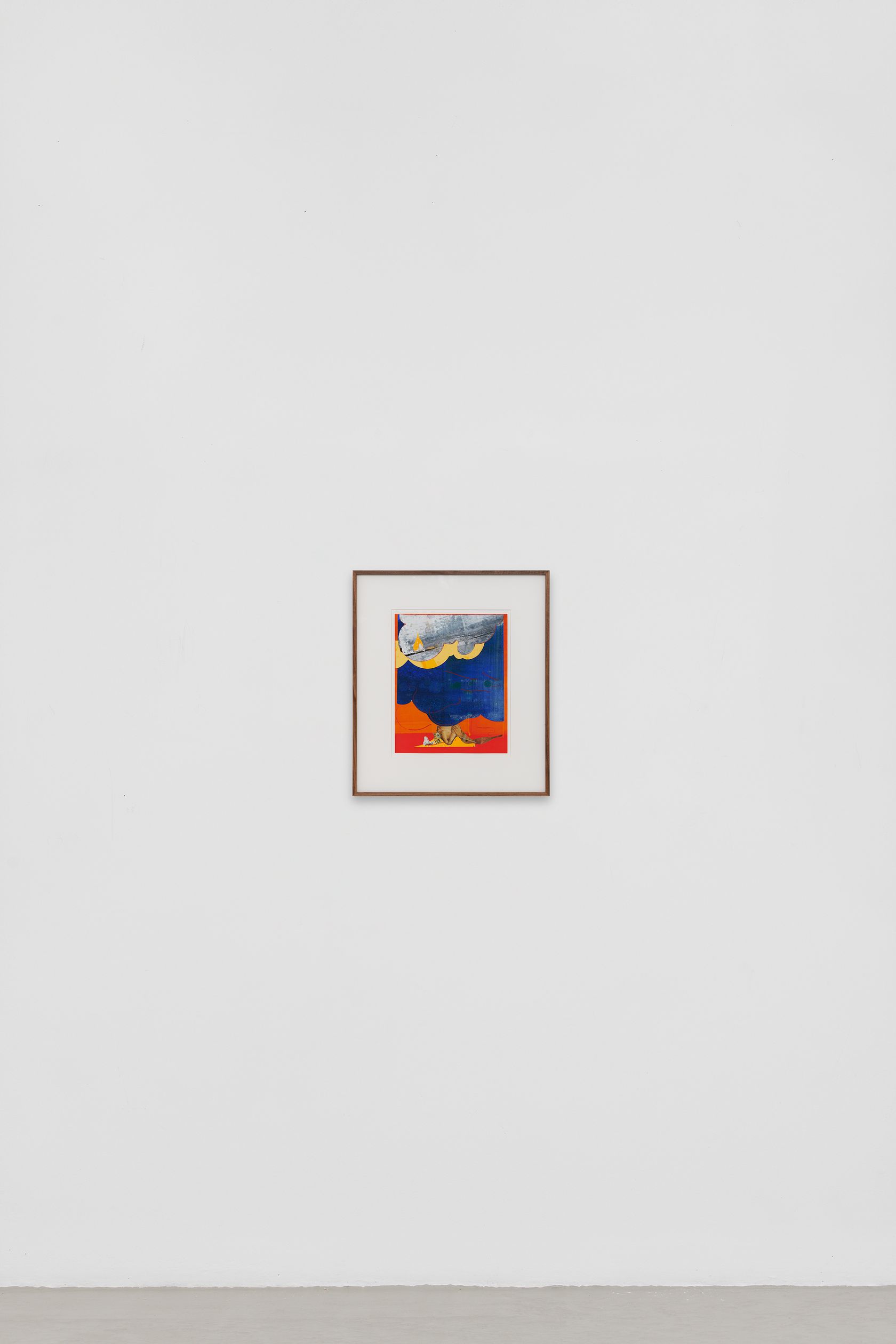
- Gert & Uwe Tobias
- Untitled (GUT/C 3181/00) , 2023
- Mixed media and collage on paper
-
- 37 ×
- 29.5 × cm
- 14 9/16 ×
- 11 5/8 × inches
- unframed
- 59 ×
- 51.5 ×
- 3 × cm
- 23 1/4 ×
- 20 1/4 ×
- 1 3/16 × in
- framed
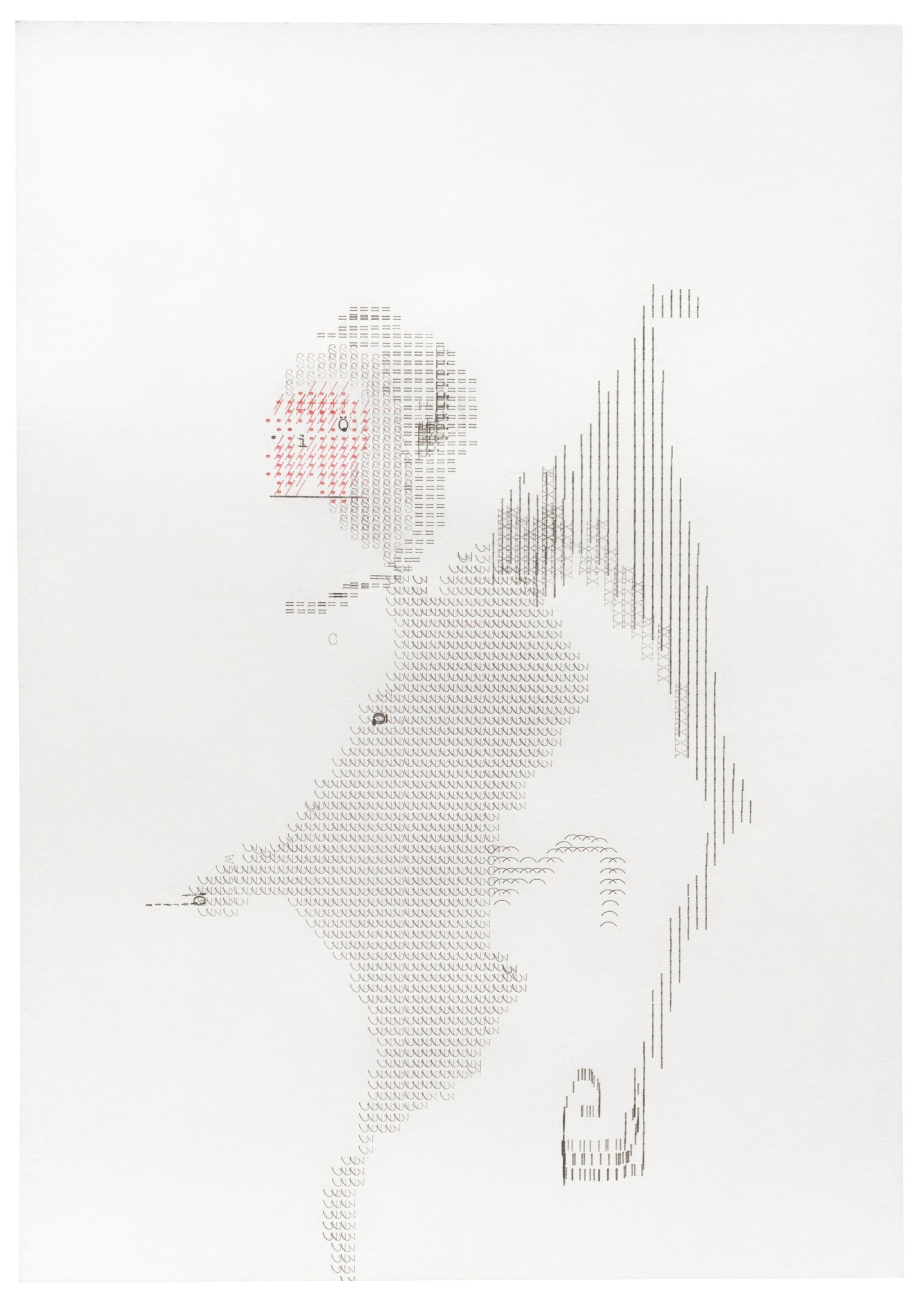
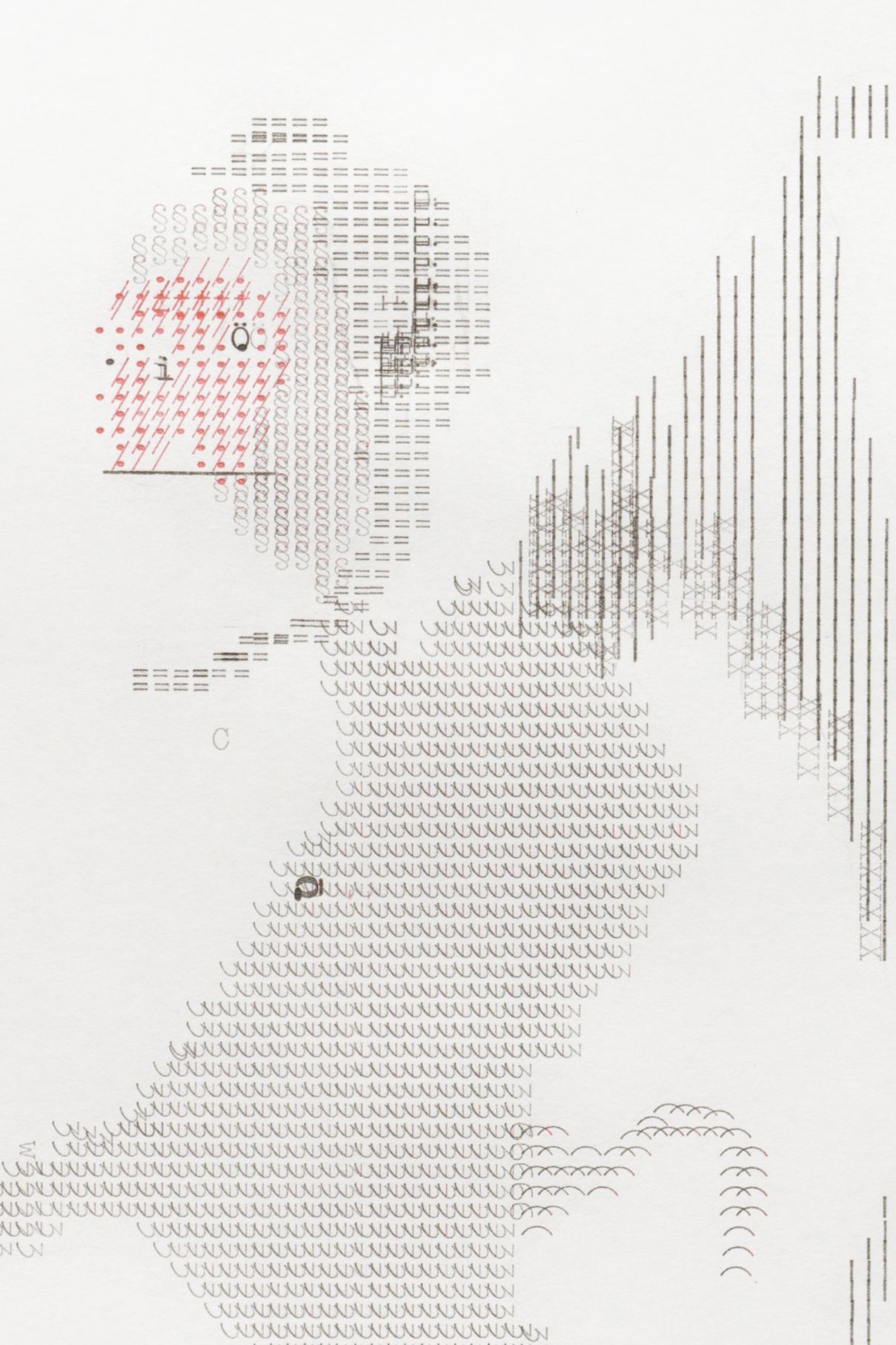
- Gert & Uwe Tobias
- Untitled , 2023
- Typewriter drawing on paper
-
- 29.7 ×
- 21 × cm
- 11 11/16 ×
- 8 1/4 × inches
- unframed
- 52.5 ×
- 44 ×
- 3.5 × cm
- 20 11/16 ×
- 17 5/16 ×
- 1 3/8 × in
- framed
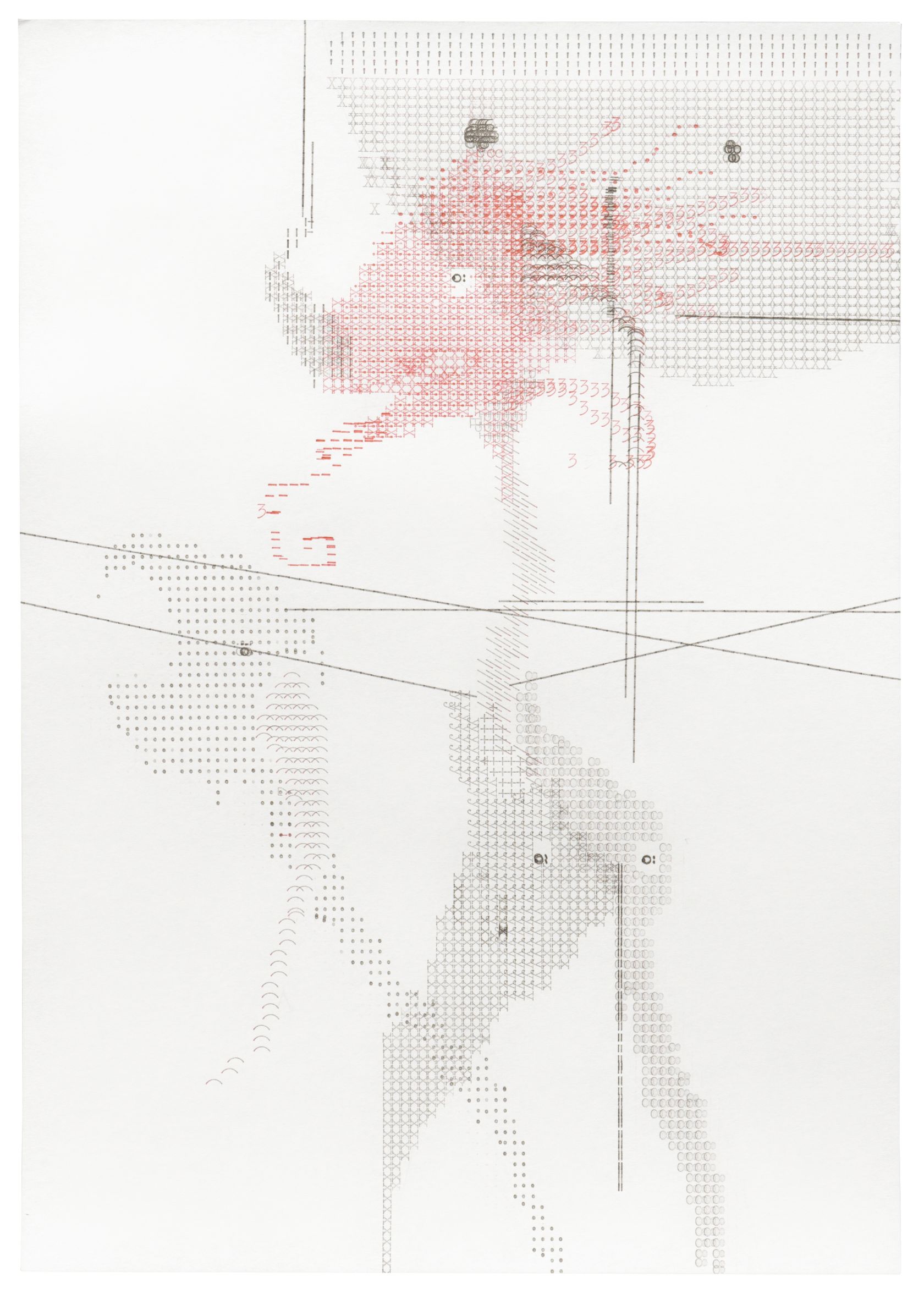
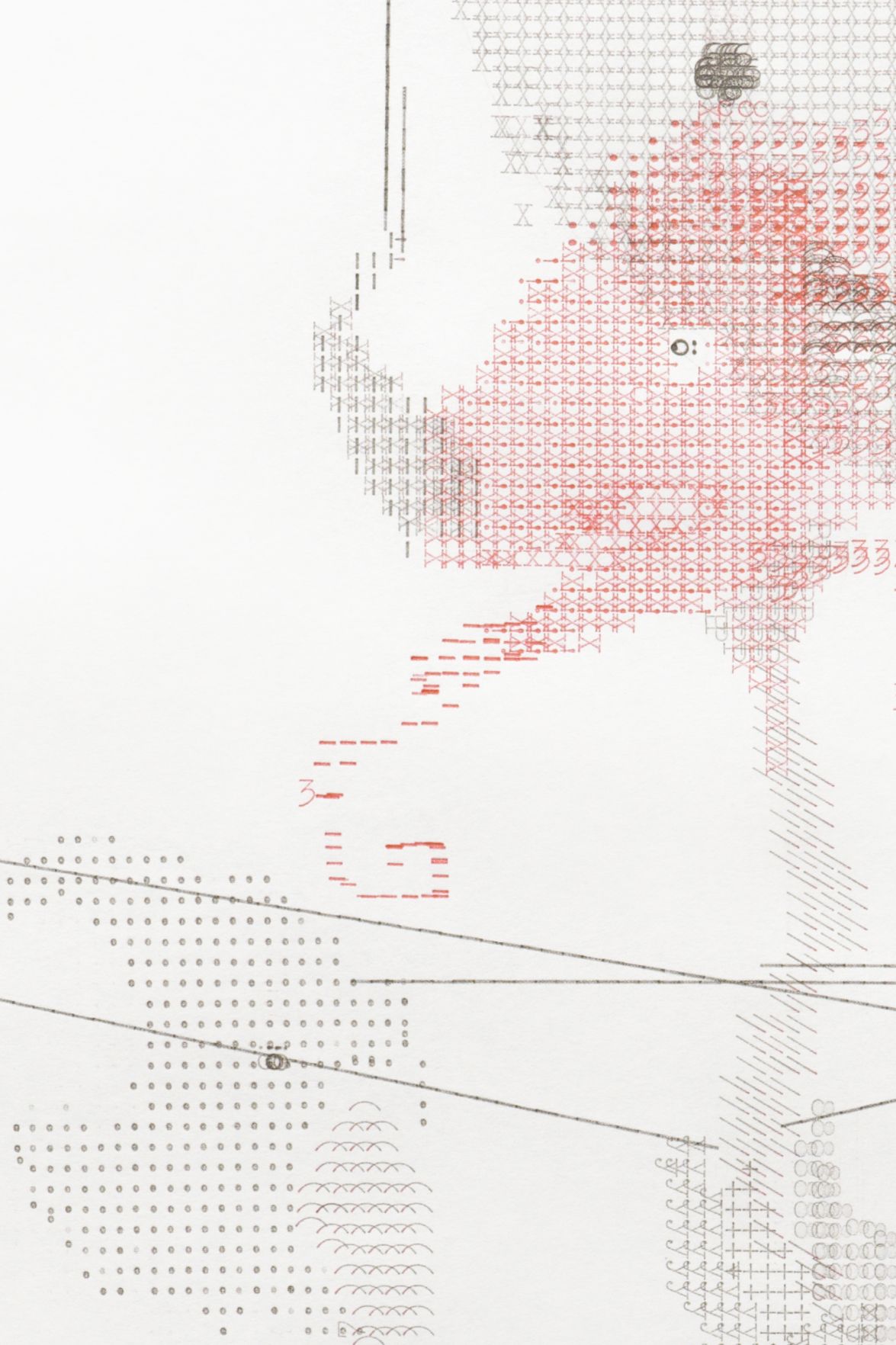
- Gert & Uwe Tobias
- Untitled , 2023
- Typewriter drawing on paper
-
- 29.7 ×
- 21 × cm
- 11 11/16 ×
- 8 1/4 × inches
- unframed
- 52.5 ×
- 44 ×
- 3.5 × cm
- 20 11/16 ×
- 17 5/16 ×
- 1 3/8 × in
- framed
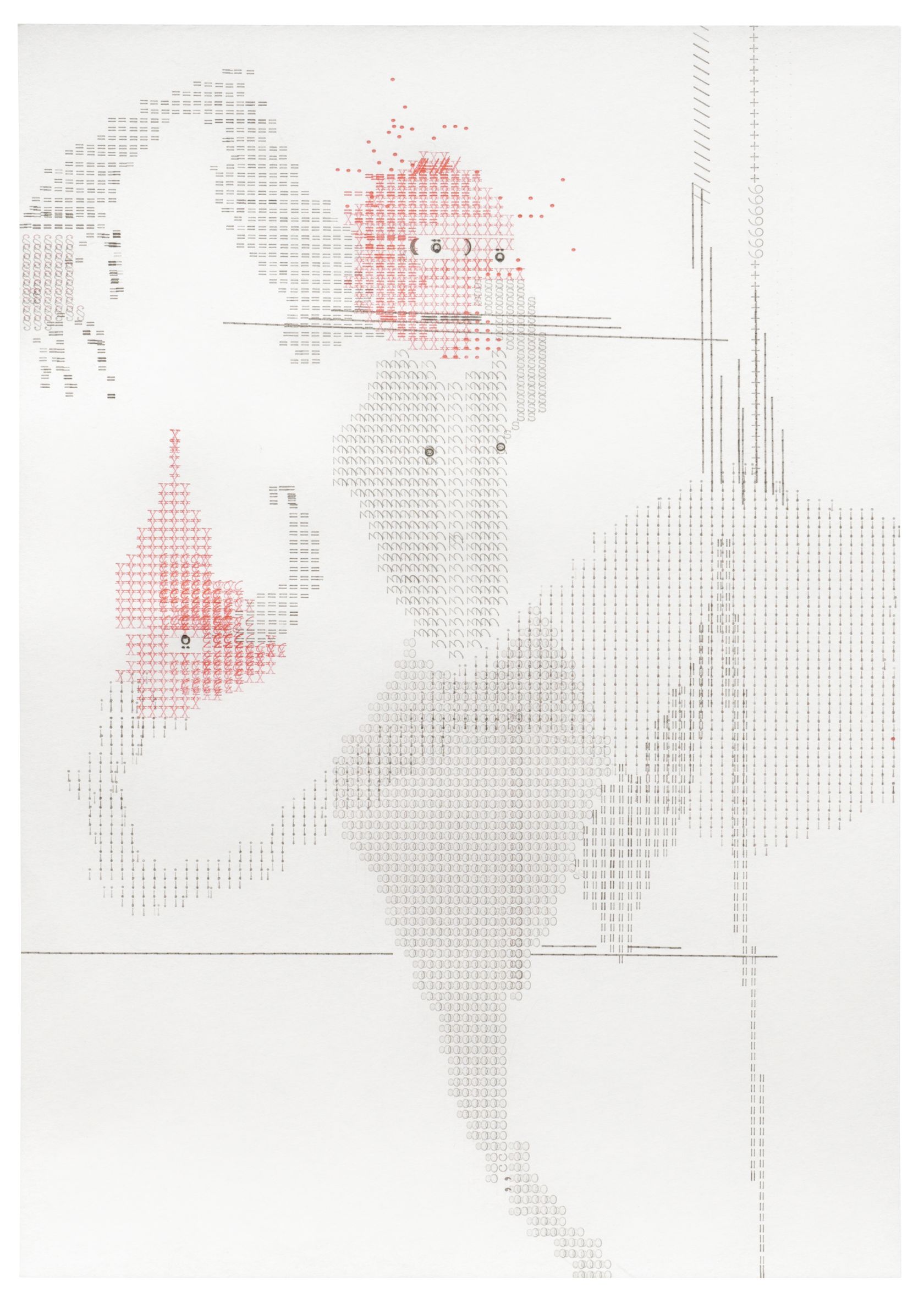
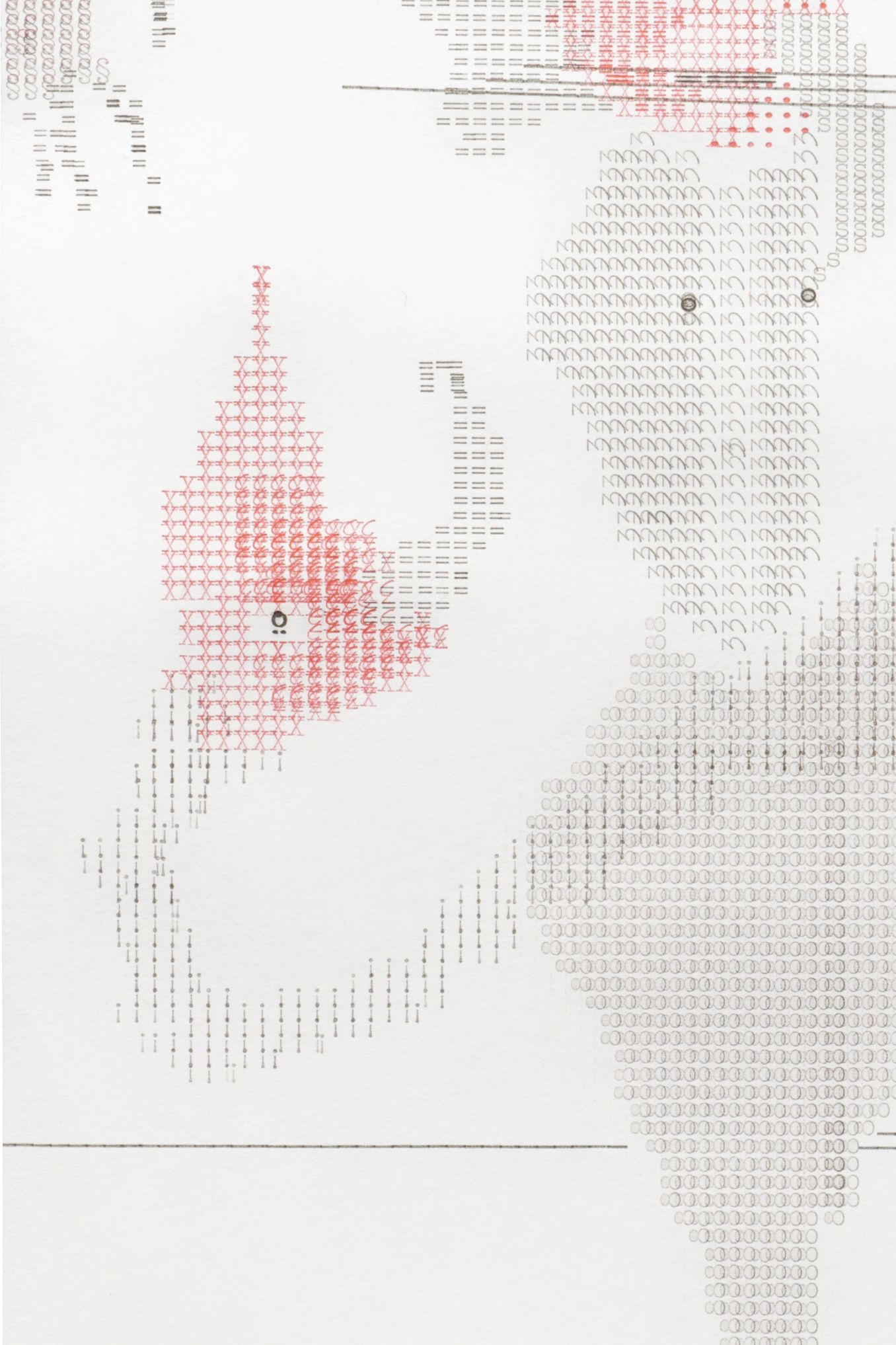
- Gert & Uwe Tobias
- Untitled , 2023
- Typewriter drawing on paper
-
- 29.7 ×
- 21 × cm
- 11 11/16 ×
- 8 1/4 × inches
- unframed
- 52.5 ×
- 44 ×
- 3.5 × cm
- 20 11/16 ×
- 17 5/16 ×
- 1 3/8 × in
- framed
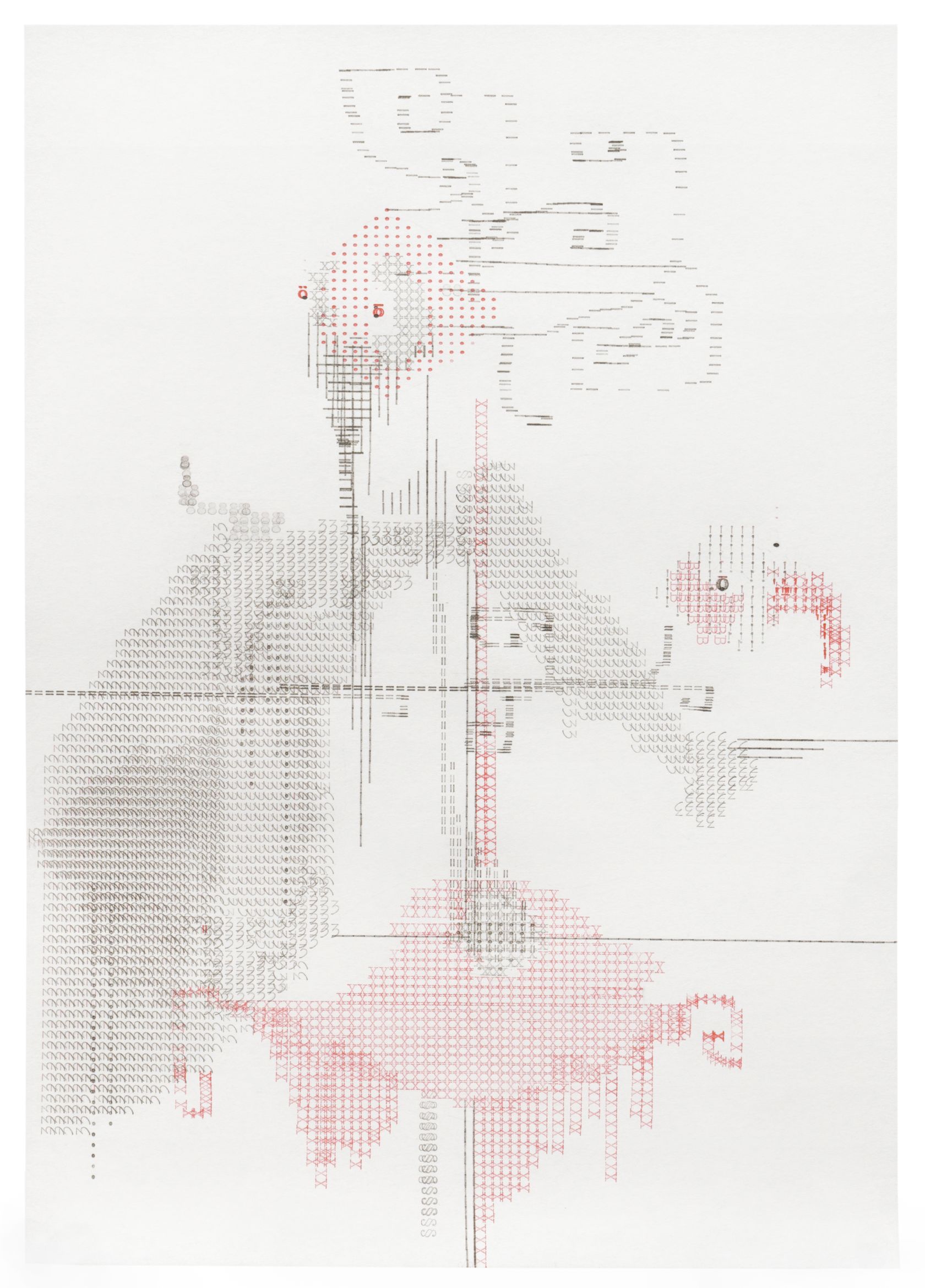
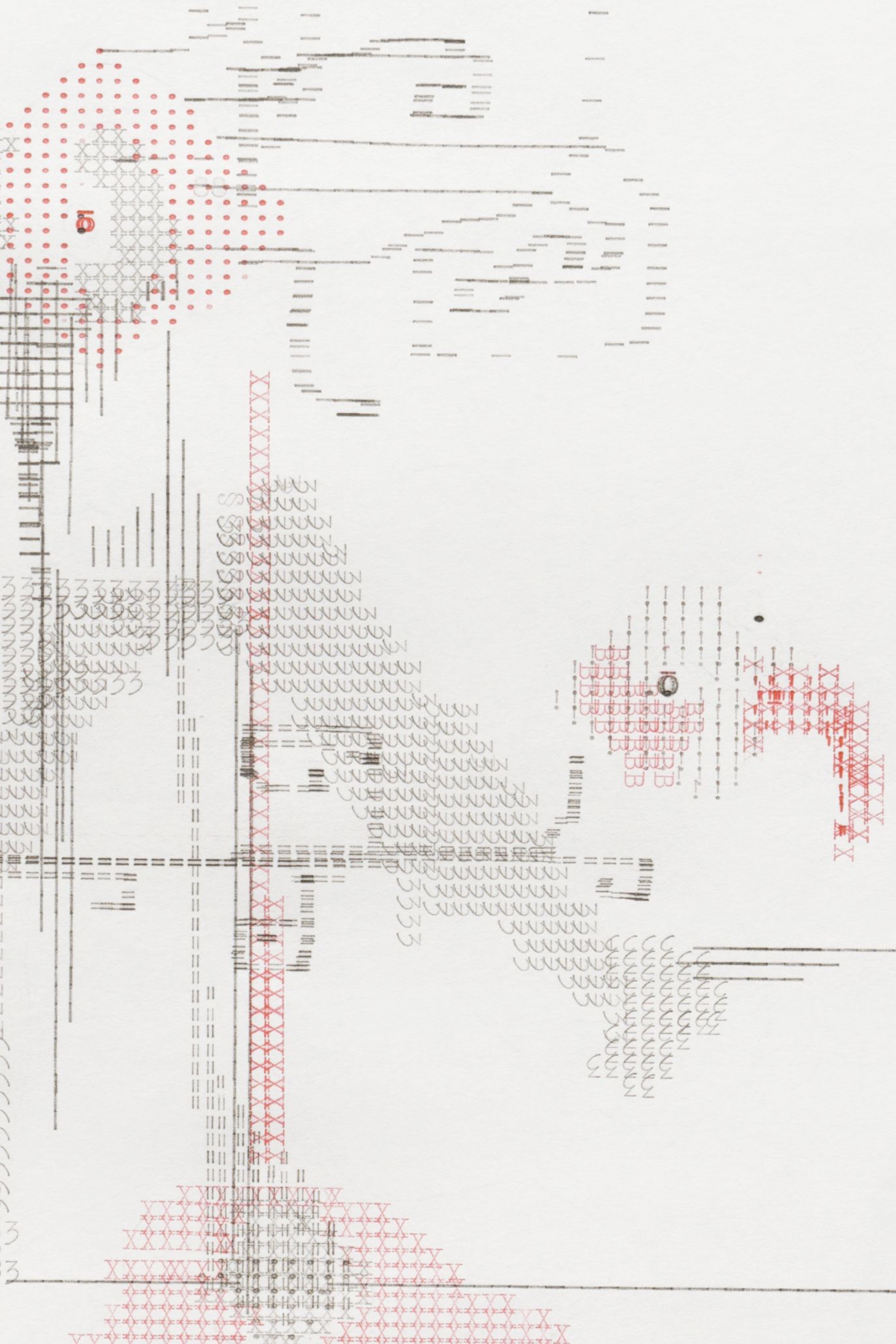
- Gert & Uwe Tobias
- Untitled , 2023
- Typewriter drawing on paper
-
- 29.7 ×
- 21 × cm
- 11 11/16 ×
- 8 1/4 × inches
- unframed
- 52.5 ×
- 44 ×
- 3.5 × cm
- 20 11/16 ×
- 17 5/16 ×
- 1 3/8 × in
- framed
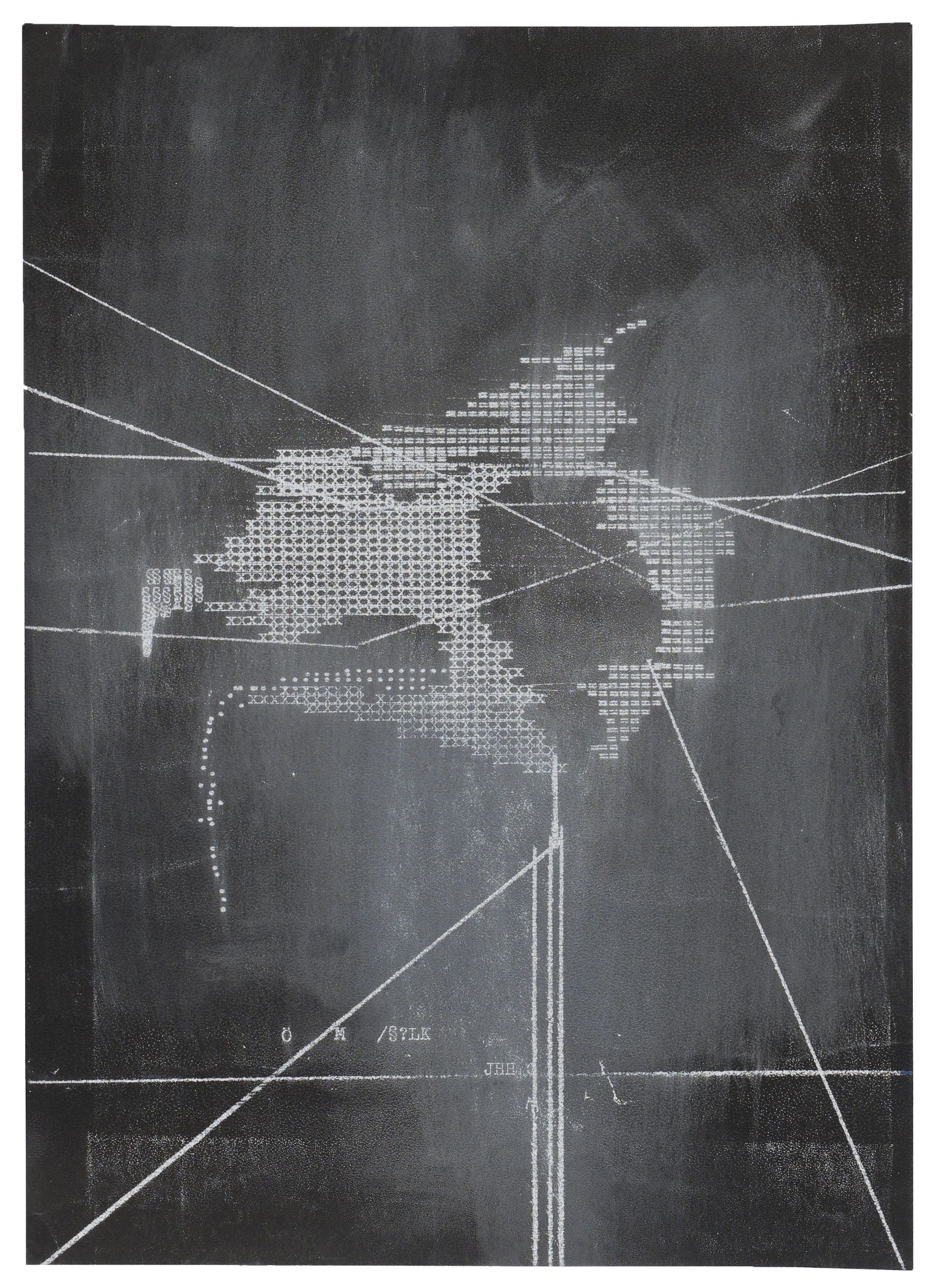
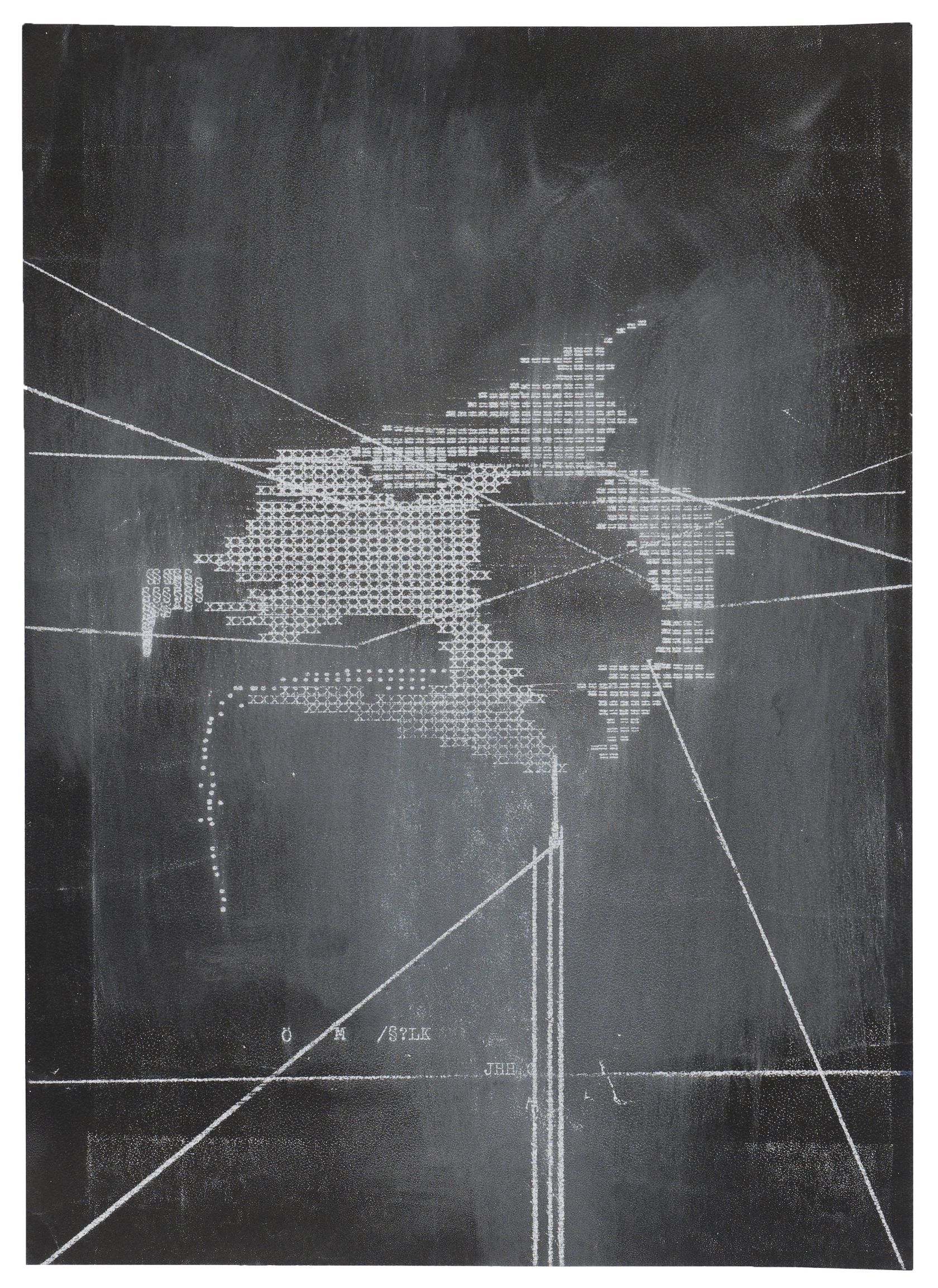
- Gert & Uwe Tobias
- Untitled , 2023
- Mix media on paper
-
- 29.5 ×
- 20.5 × cm
- 11 5/8 ×
- 8 1/16 × inches
- unframed
- 52.5 ×
- 44 ×
- 3.5 × cm
- 20 11/16 ×
- 17 5/16 ×
- 1 3/8 × in
- framed
Amy Bravo is a New York based artist of Cuban Italian origin. Her works combine symbolism—stylized palm trees, roosters, horses and waxed mustaches—artifacts from Latin American religious and popular culture and family stories, to create her own intimate and imaginative vision of the island of Cuba, a mixture of the familiar and the unknown, of beauty and bewilderment.
She has an unconventional approach to painting, preferring irregular shaped canvasses to the classic stretcher forms, and mixing black and colored pencil drawings with various other disciplines such as painting and collage using materials such as string, leather, dried leaves and lace amongst other diverse objects drawn from her personal and family history. This very particular combination of techniques, where pride of place is given to DIY and popular culture, fits in perfectly with the intentions of her work: to bring together complex identities, to rebuild a family lineage interrupted by exile, to reimagine her ancestral home and to sketch the outlines of a mythical world. Thus, her works have given birth to a rural community populated by Amazons, women wrestlers and cowgirls; proud and liberated women at the crossroads of the three communities asserted by the artist: Women, Brown and Latinx.
Born in 1997 in New Jersey, Amy Bravo lives and works in Brooklyn, New York. After graduating from the Pratt Institute, she obtained a MFA at Hunter College in New York in 2022. Amongst recent exhibitions, she had solo shows at Galleria Pogiali, Milano, in 2024, at Nada Miami in 2022 and a duo show at Swivel Gallery, New York the same year. In 2022, she also benefitted from a residency at the Fountainhead Residency in Miami.
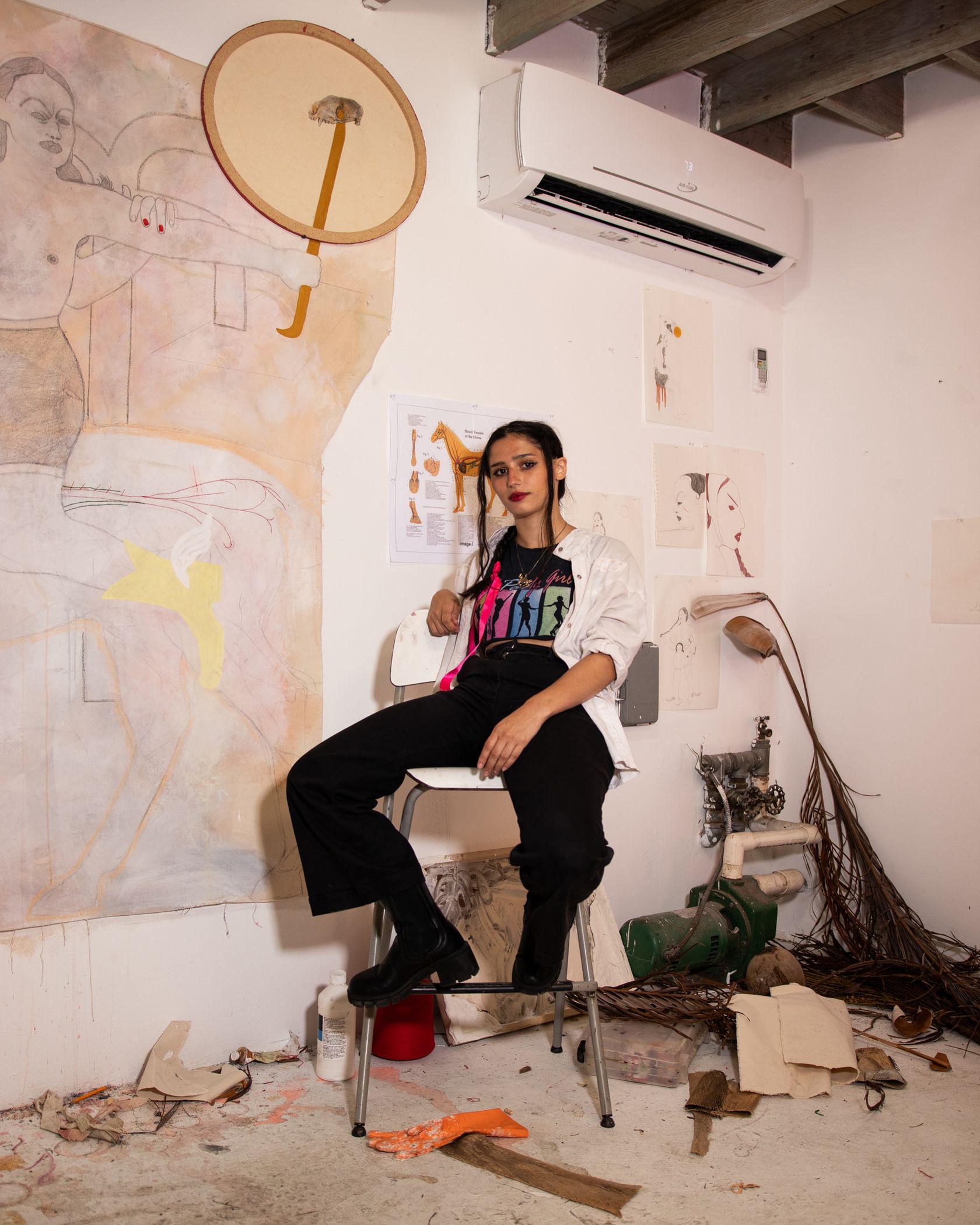
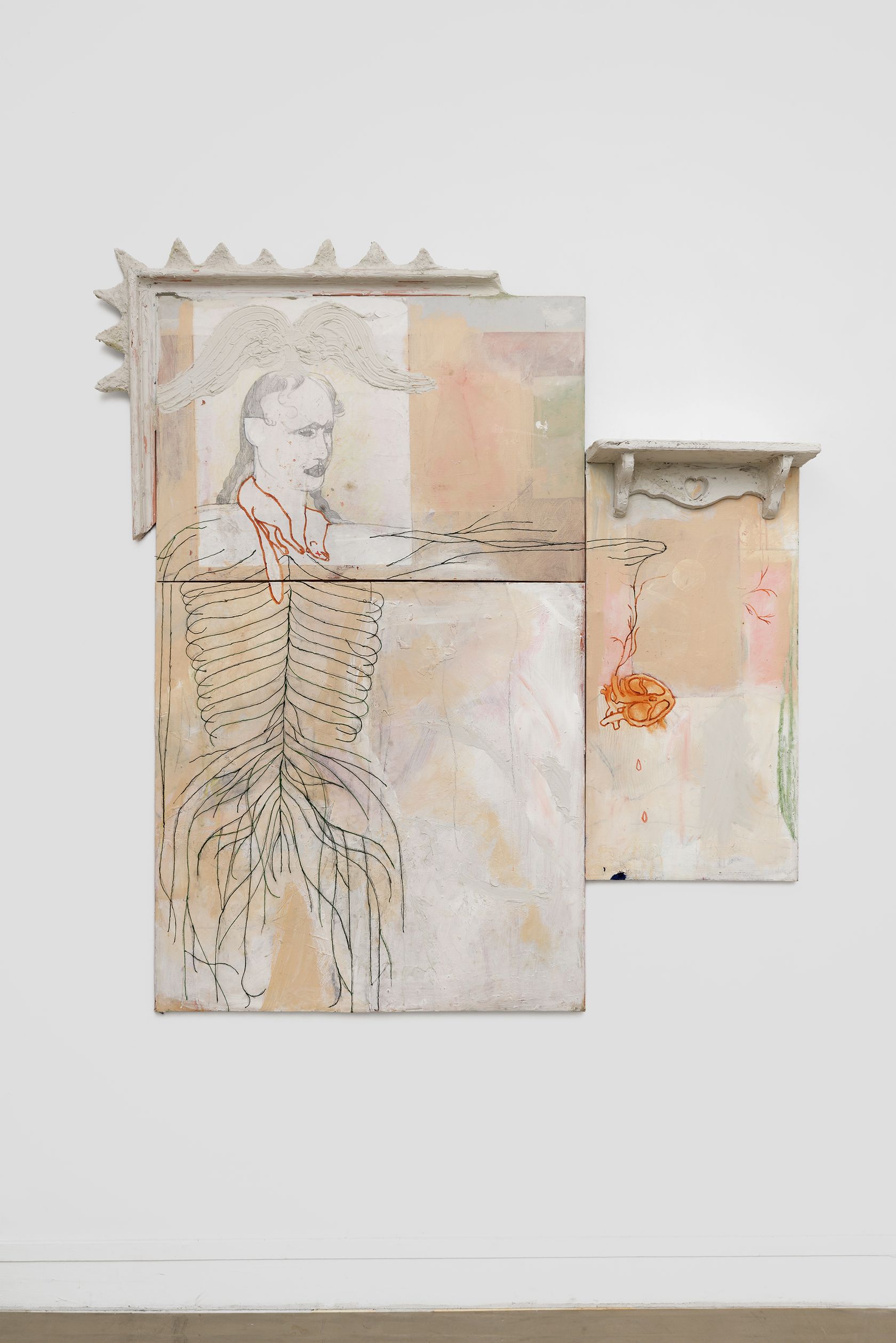
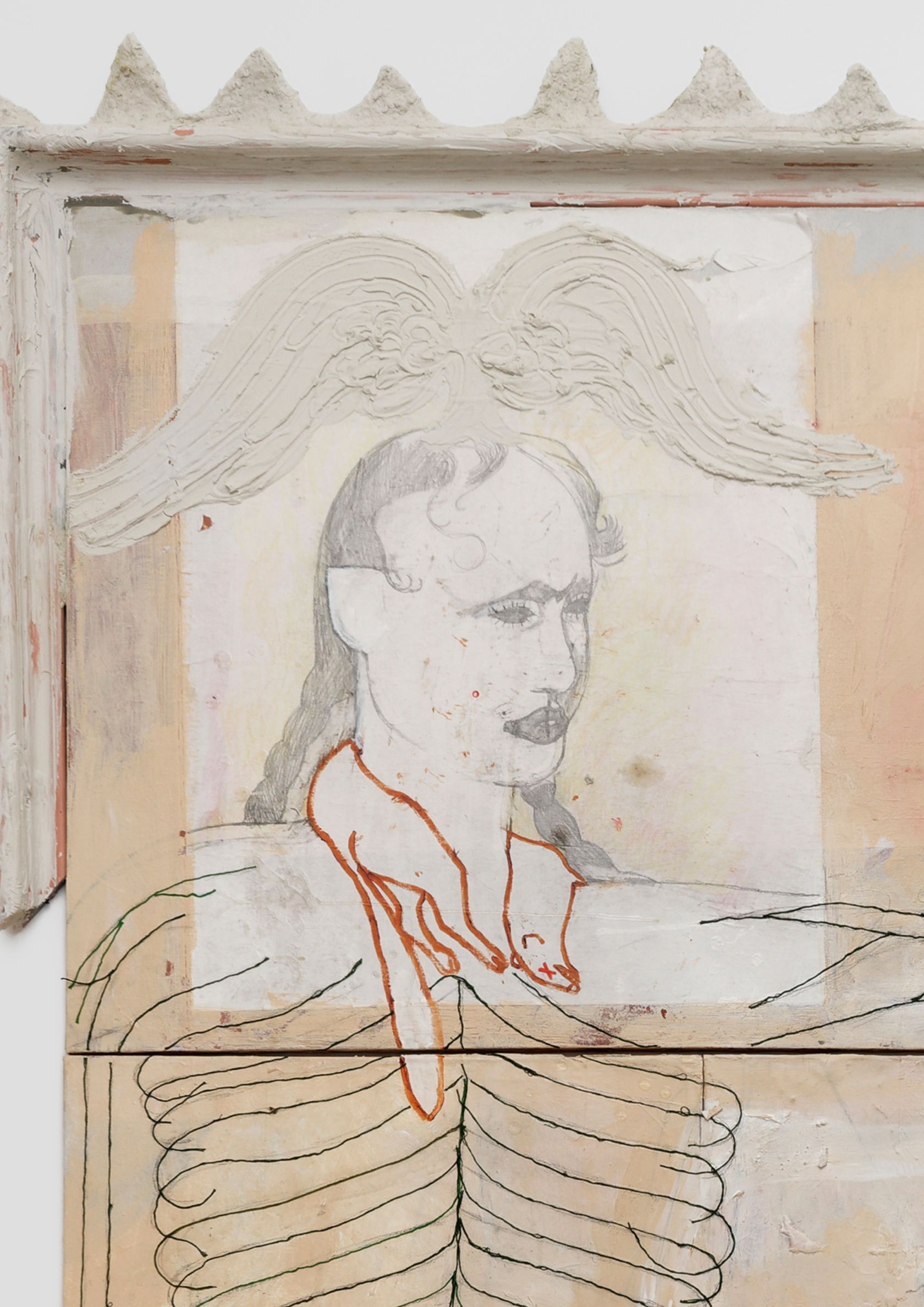
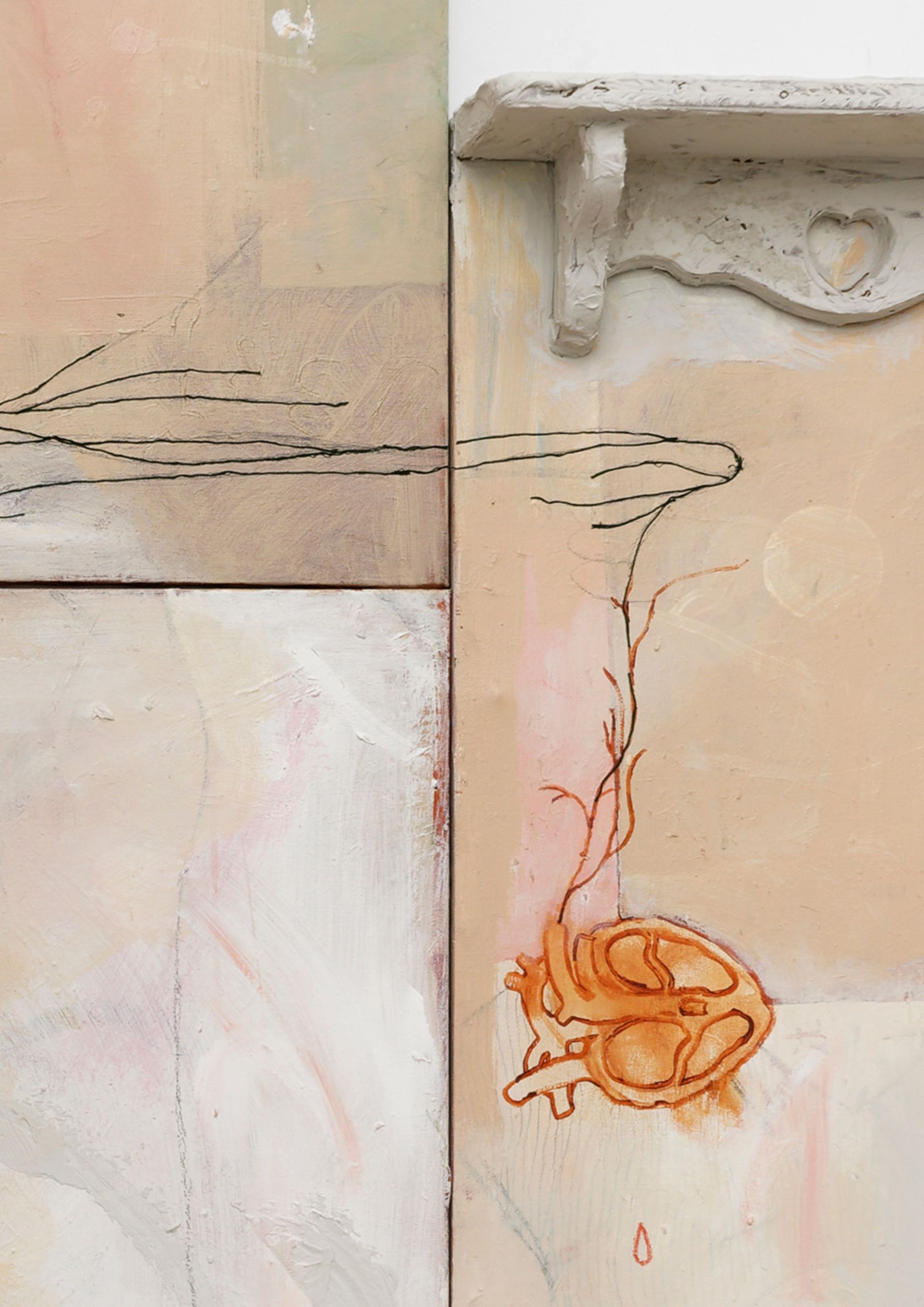
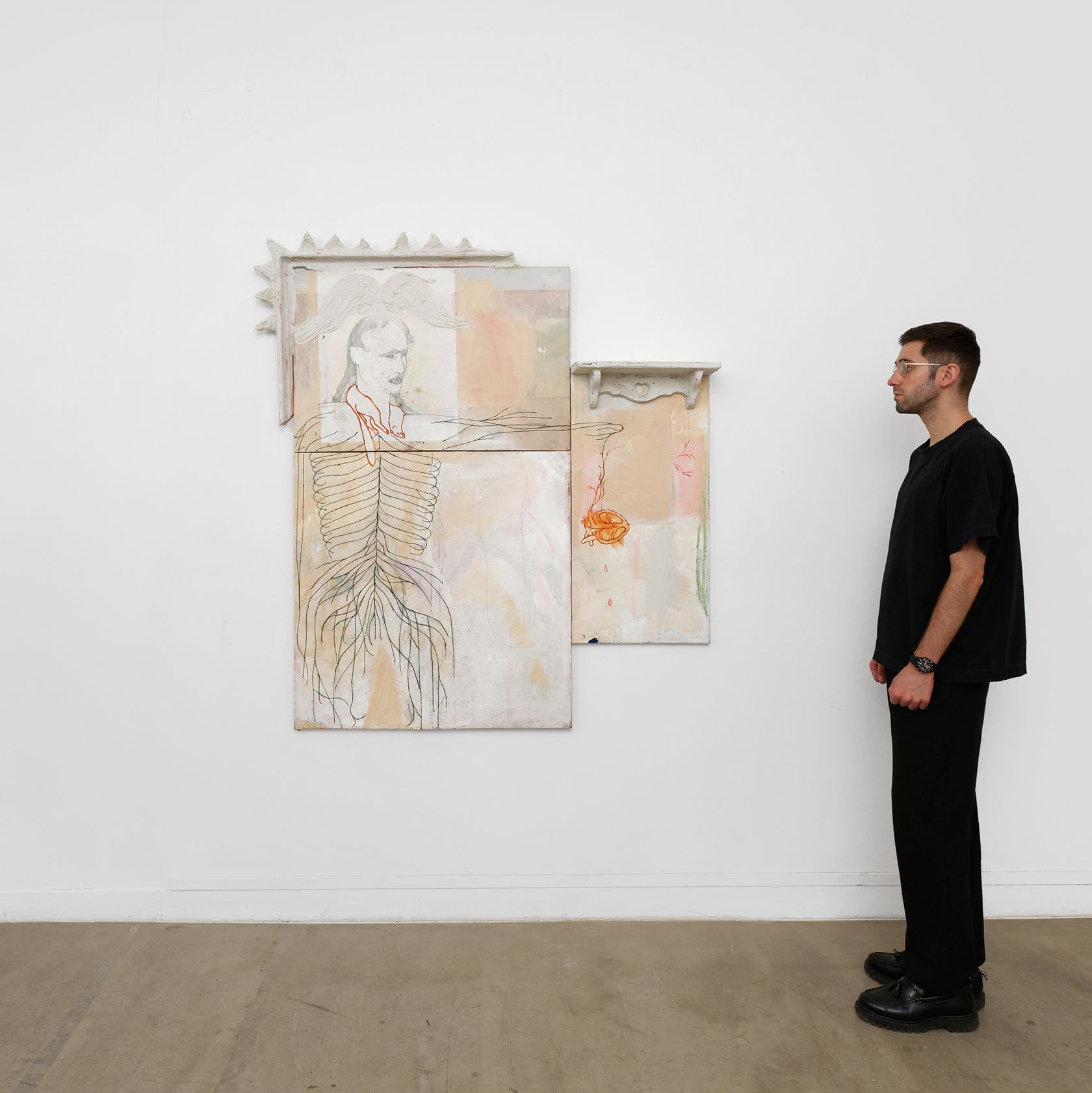
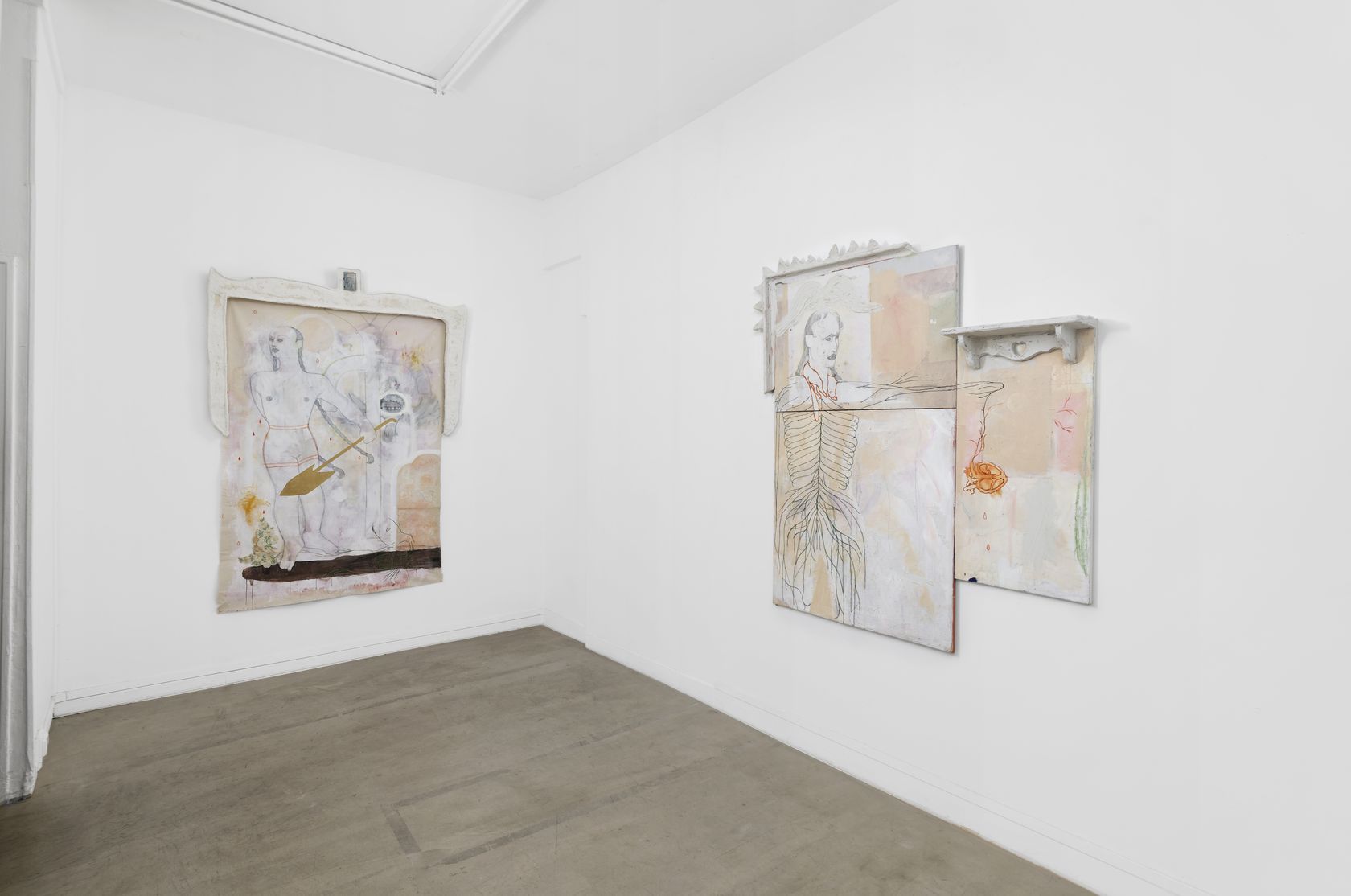
- Amy Bravo
- Souvenir , 2023
- Canvas, acrylic, colored pencil, graphite, wood, epoxy, rope, embroidery, and thread
-
- 167.5 ×
- 147.5 ×
- 15 × cm
- 66 ×
- 58 ×
- 6 × inches
Anthony Cudahy combines a wide variety of references in his painting: masterpieces of art history, archives of queer culture, gay iconography as well as personal and family recollections. Inspired by photographs that he decomposes from one painting to another producing a serial effect, Cudahy incorporates these images in a chain of transformations, infusing each new iteration with different affects and his own musings. His repertoire, with its flowers, expressions of love and portraits of youthful men, explores romantic, tender and intimate registers.
Subdued, as if suspended, Cudahy’s painting is derived from a sense of the dramatic. At the center of his more complicated compositions, captured in ambiguous situations or broken narratives, the human figure emerges as a focal point. The exploration of individuality is rendered by the delicate manner in which faces and expressions are portrayed, compared with the bodies and settings, which are composed of broad, energetic brush strokes and abstract flat tints. Chromatic aberrations and vivid contrasts of acidic colors create an imbalance and unite contradictions that would otherwise appear irreconcilable.
Anthony Cudahy graduated from the New York Pratt Institute in 2011 and from the Hunter College in 2020. His first solo exhibition in a European public institution was held at the Musée des Beaux-Arts de Dole in 2023. In 2024, the Ogunquit Museum of American Art will present his first institutional exhibition in the United States. He has participated in several one-person exhibitions across the USA most notably at 1969 Gallery and Deli Gallery in New York as well as at Farewell Books in Austin, TX. His works have been included in group exhibitions in New York at Perrotin Gallery, Hales Gallery, at the Athens Institute for Contemporary Art, (GA), and at Pace Gallery (Hong Kong), amongst others.
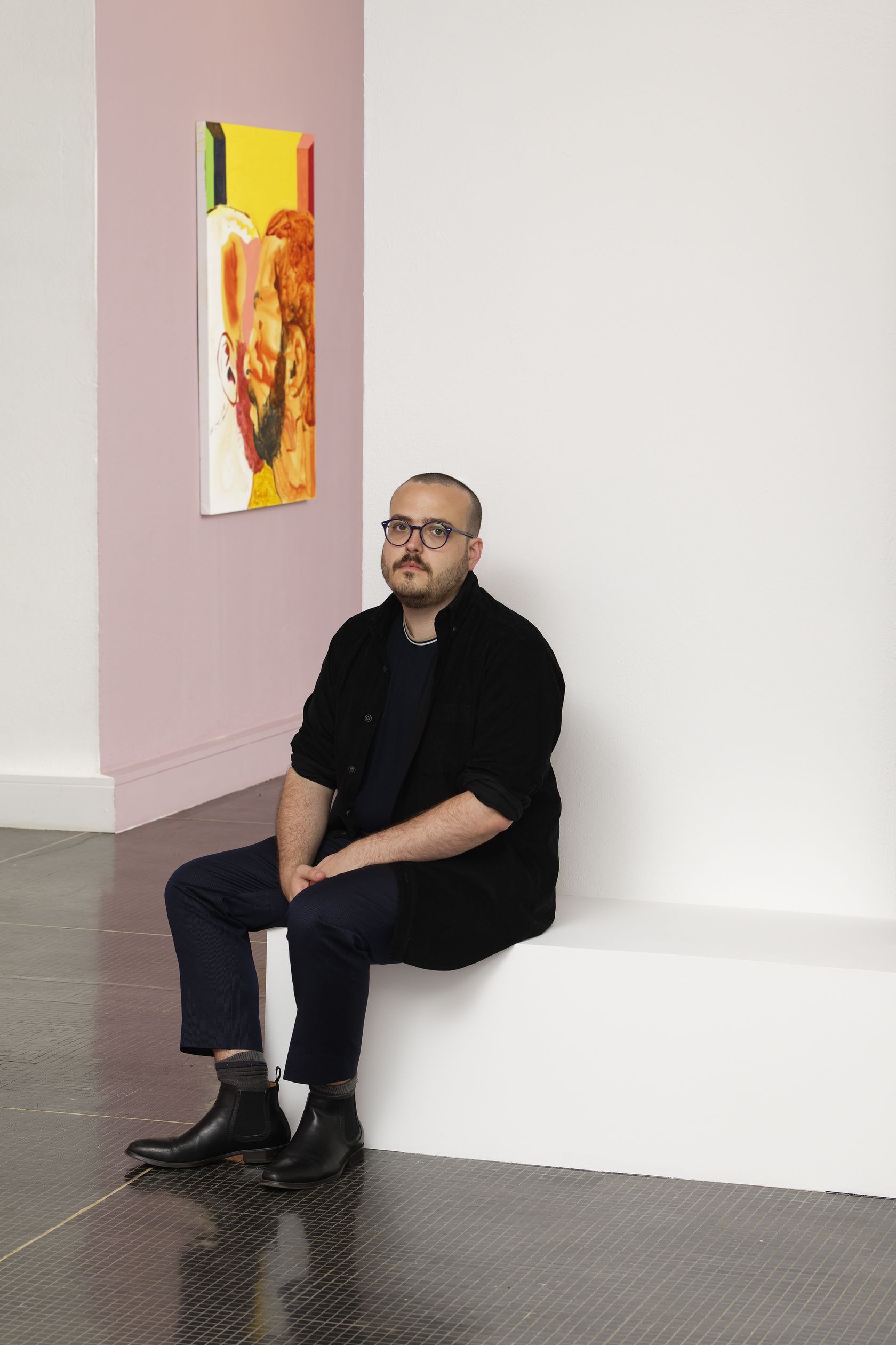
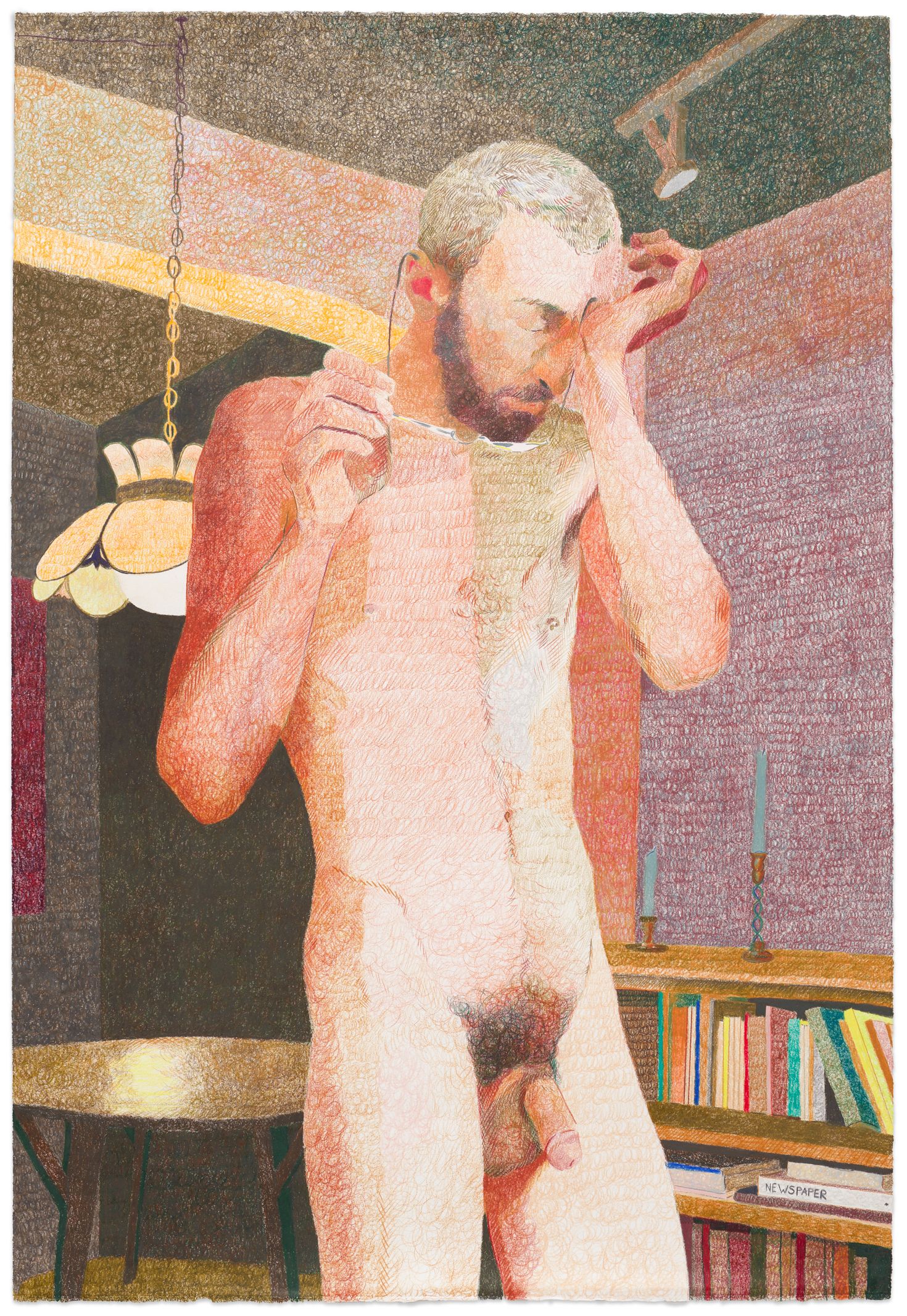
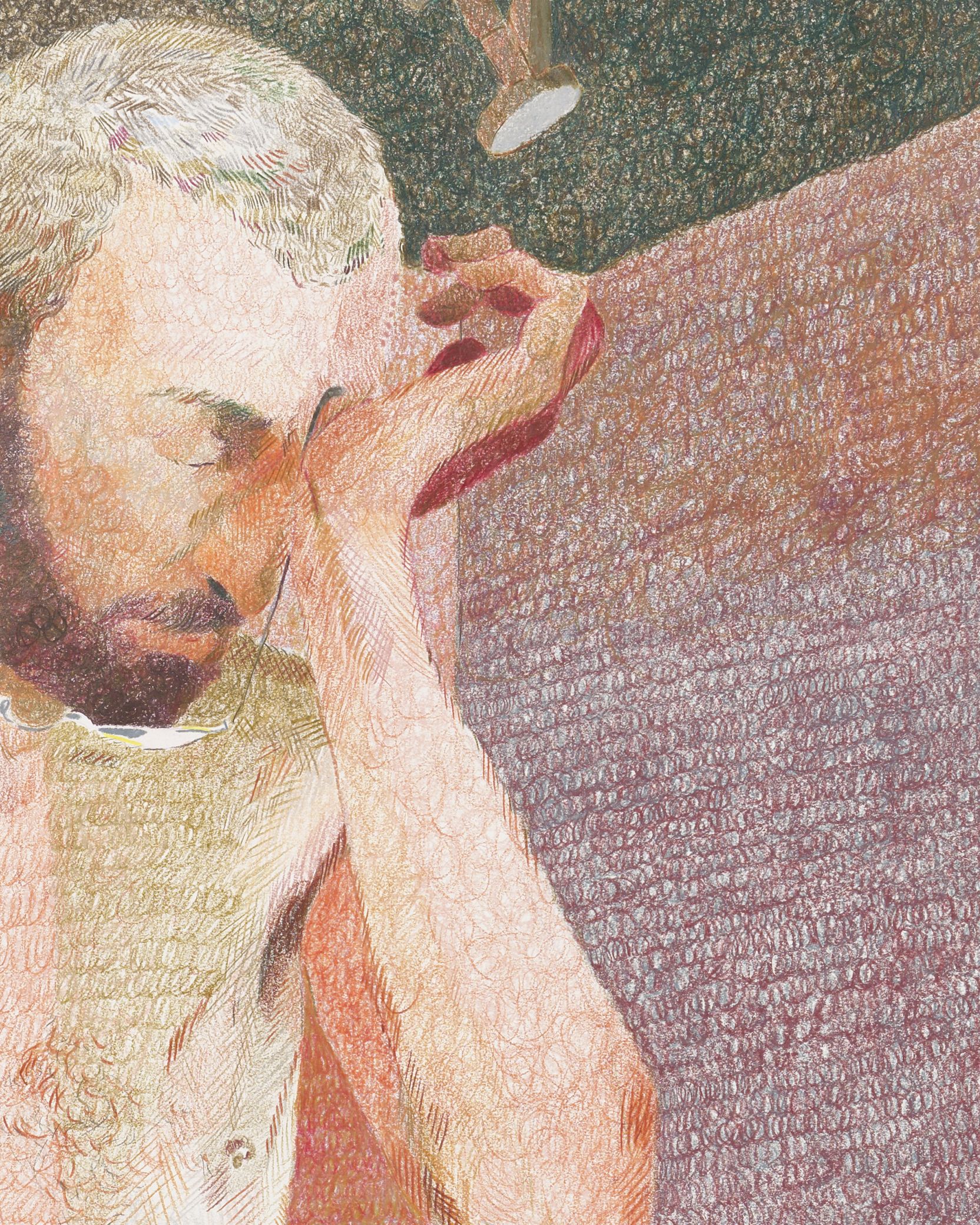
- Anthony Cudahy
- Ian, post , 2024
- Coloured pencil on paper
-
- 112.5 ×
- 77 × cm
- 44 5/16 ×
- 30 5/16 × inches
- unframed
- 130 ×
- 95 ×
- 3.5 × cm
- 51 3/16 ×
- 37 3/8 ×
- 1 3/8 × in
- framed
Born in 1938, the New York artist Steve Gianakos began developing his artistic language in the mid-1960s, in the midst of the Pop Art explosion on one hand and during the early days of Minimal Art on the other. From the clean brushstrokes of his paintings from the 1970s and 80s to the photocopied collages that began to proliferate later in his career, his lines have always remained sober and precise, distilling his trivial truths with a visual efficiency worthy of commercial art. As a Pop artist, Gianakos delves into a variety of sources—adult comics and 1950s children’s books amongst others—while encompassing references to Dada as well as Surrealism, his oeuvre is denoted by its overtly erotic and gory, punk attitude, leading to its qualification as underground. The most obscene, comical and cruel scenes are depicted in the naïve style of vintage comic books, joyfully undermining the American Dream.
Gianakos’ works feature in the most prestigious American public collections—MoMA, the Guggenheim, the New York Whitney Museum—as well as the CNAP collections in France. During the 1970s and 80s, he enjoyed exhibitions at PS1 in New York, Metro Pictures and the Marian Goodman and Barbara Gladstone galleries. In more recent years, he has participated in collective exhibitions at the MoMA, the Brooklyn Museum and the Queens Museum in New York and the Bonnefantenmuseum in Maastricht with Richard Artschwager, Peter Saul and John Wesley. In 2017, the Musée des beaux arts de Dole (FR) held a large retrospective exhibition of his oeuvres.
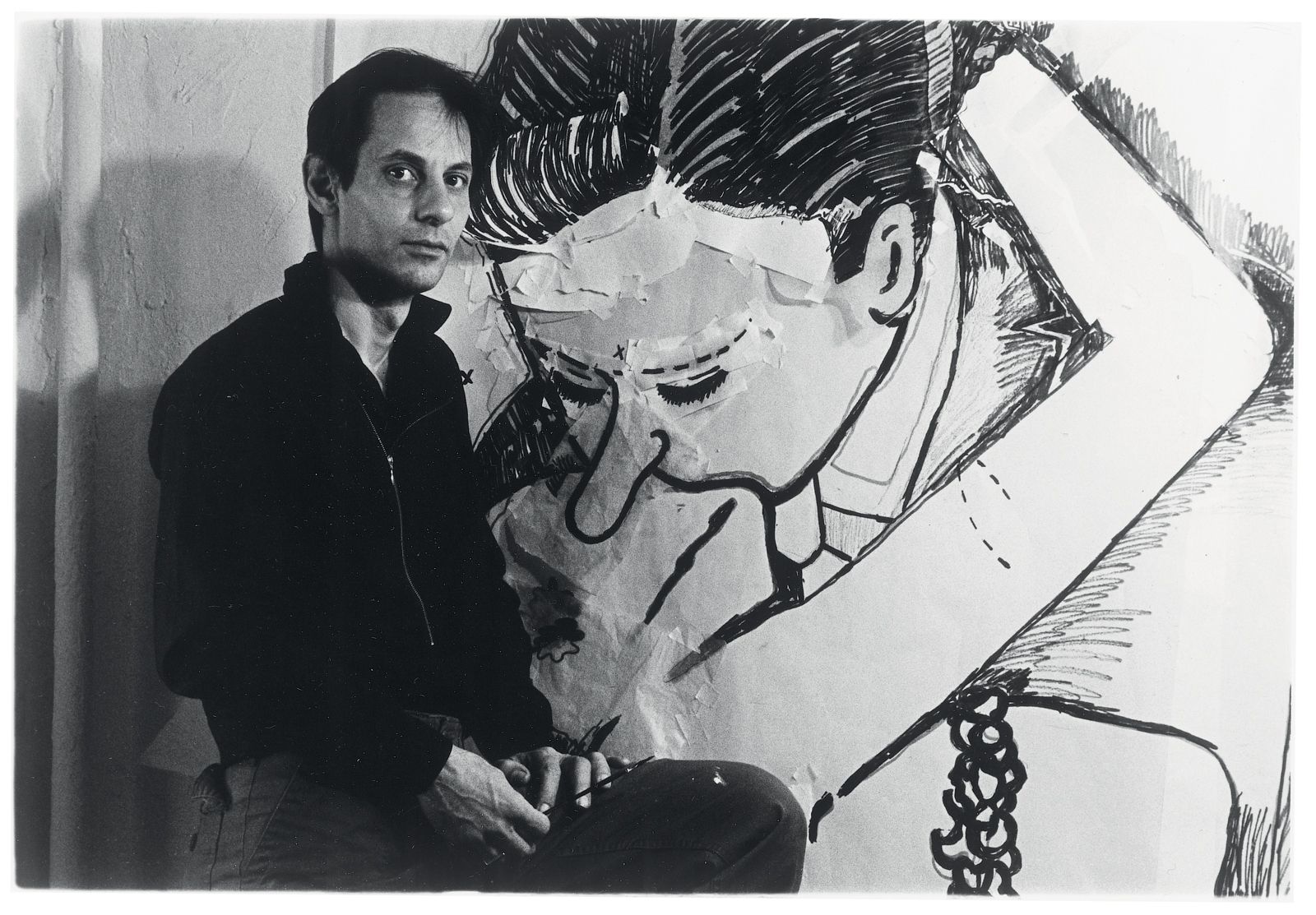
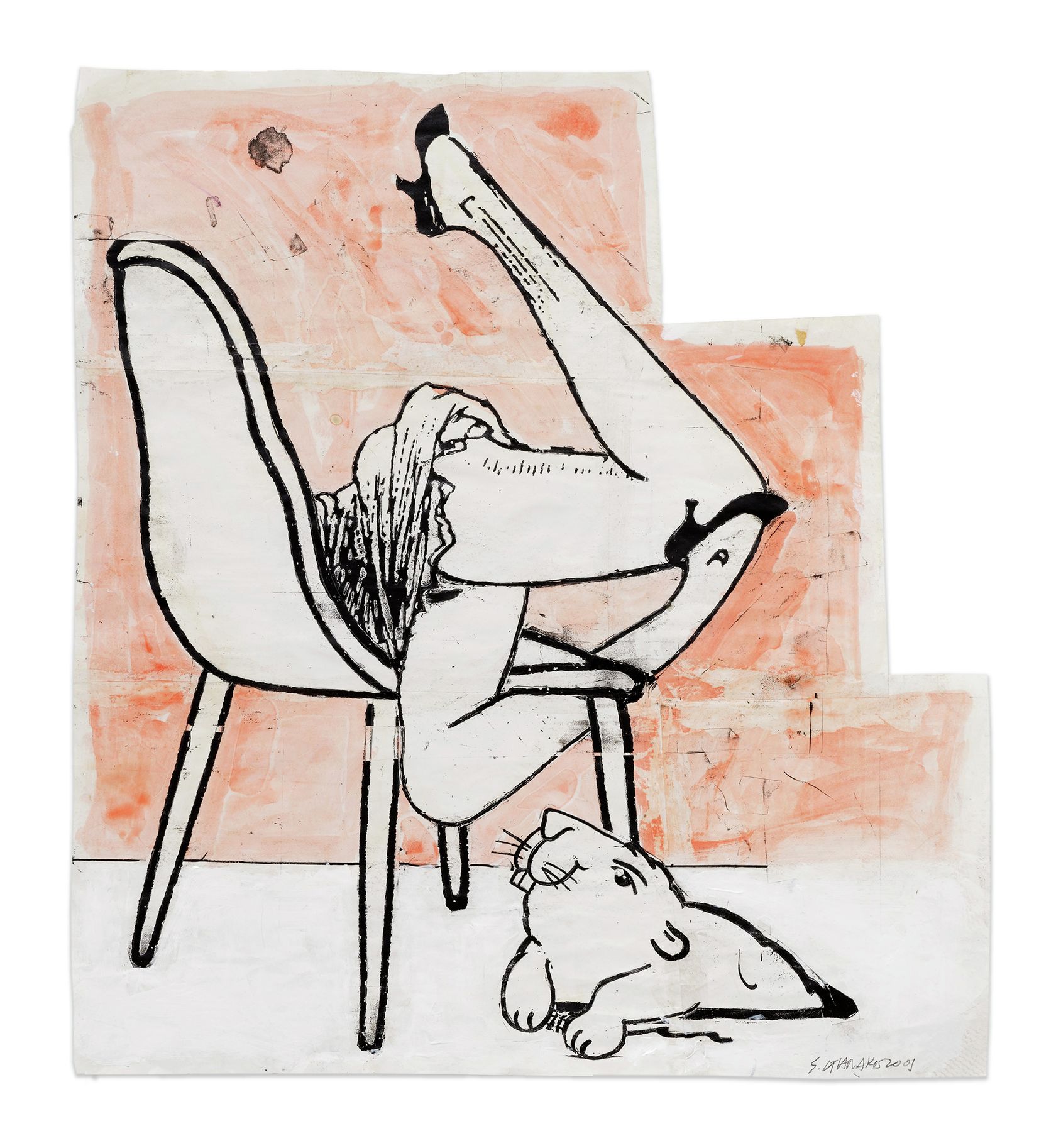
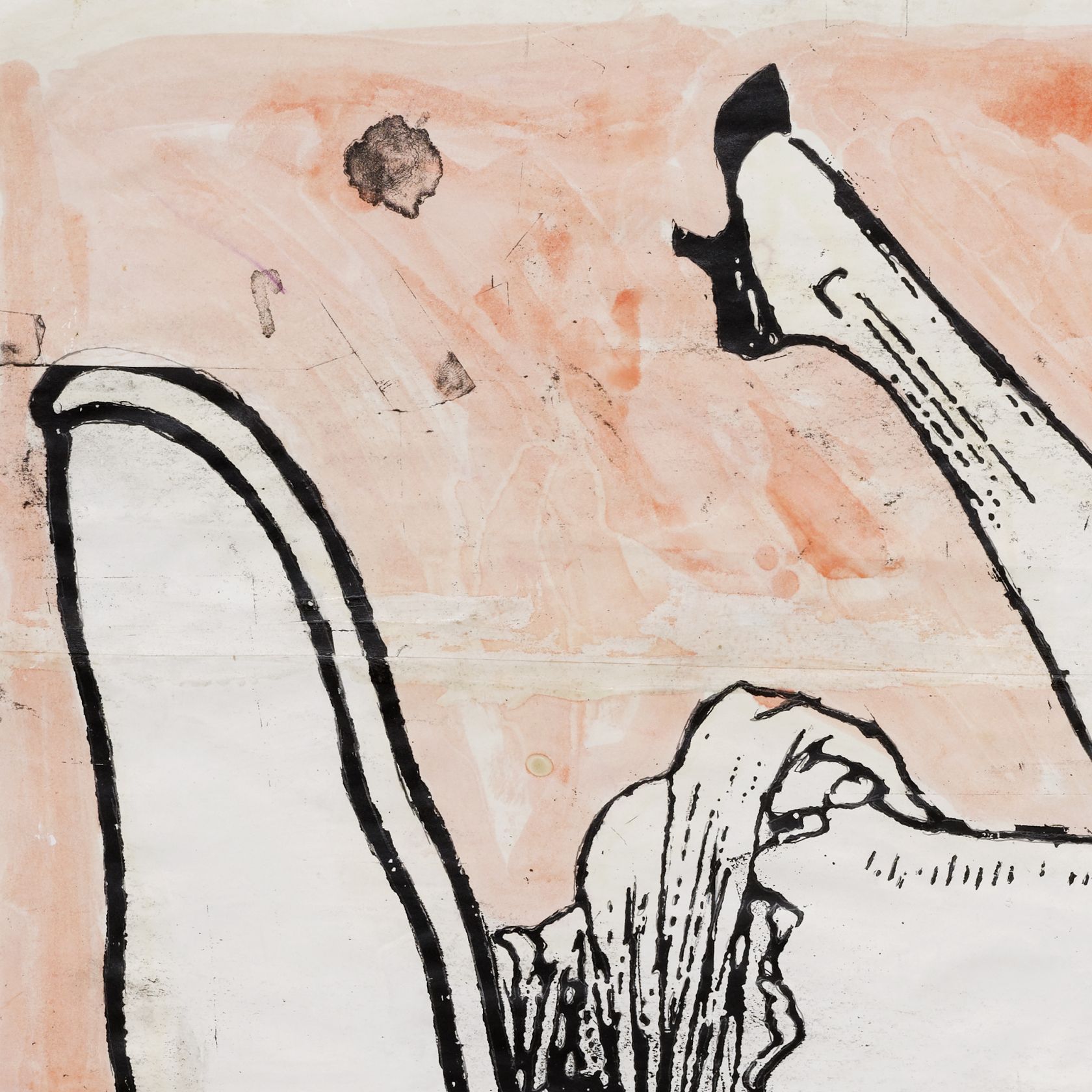
- Steve Gianakos
- Drawing for 'They were married in 1996' , 2001
- Mixed media on paper
-
- 78 ×
- 72.5 ×
- 3.5 × cm
- 30 6/8 ×
- 28 1/2 ×
- 1 3/8 × in
- framed
Hippolyte Hentgen is an artistic duo made up of Gaëlle Hippolyte and Lina Hentgen. Brought together under this fictitious name, which they consider as a space for their shared work as well as a means of distancing any notion of authorship, the two artists explore a field of research that mainly revolves around the image. While their practice is principally rooted in drawing, they also venture into other areas of representation such as performance, stage design, film and sculpture. Through their appropriation of the codes of the comic strip and cartoons from the press, they employ a wide range of tones (from the burlesque to the naïve) and references (from Jim Shaw to the cartoons of the 1930s, from the underground to modernism, from textile patterns to Japanese decorative paper) and by means of the transposition and grafting of images, have brought back to life a field of mass visual culture. Drawing on the history of art as well as popular culture, they seize upon iconic images anchored in the collective consciousness and render them in an immense protean and composite collage of great stylistic freedom. Cultural clichés, worn down to the bone, take on a new life under the pen of Hippolyte Hentgen. Employing a wide range of media, formats and styles, their work is pleasing to the eye, yet never ceases to surprise with its colorful, amusing and sometimes acerbic verve.
Hippolyte Hentgen's work has been shown in numerous solo exhibitions and has recently been exhibited at the MAMAC in Nice, the Printemps de Septembre Festival in Toulouse, at the Abbaye Sainte-Croix Museum in les Sables-d’Olonne and at the Hors-Pistes Festival at the Pompidou Centre in Paris. Their work is held in the collections of the CNAP, Paris, the Abbaye Sainte-Croix Museum, Les Sables-d’Olonne, the MAC/VAL, Vitry-sur-Seine and numerous FRACs.
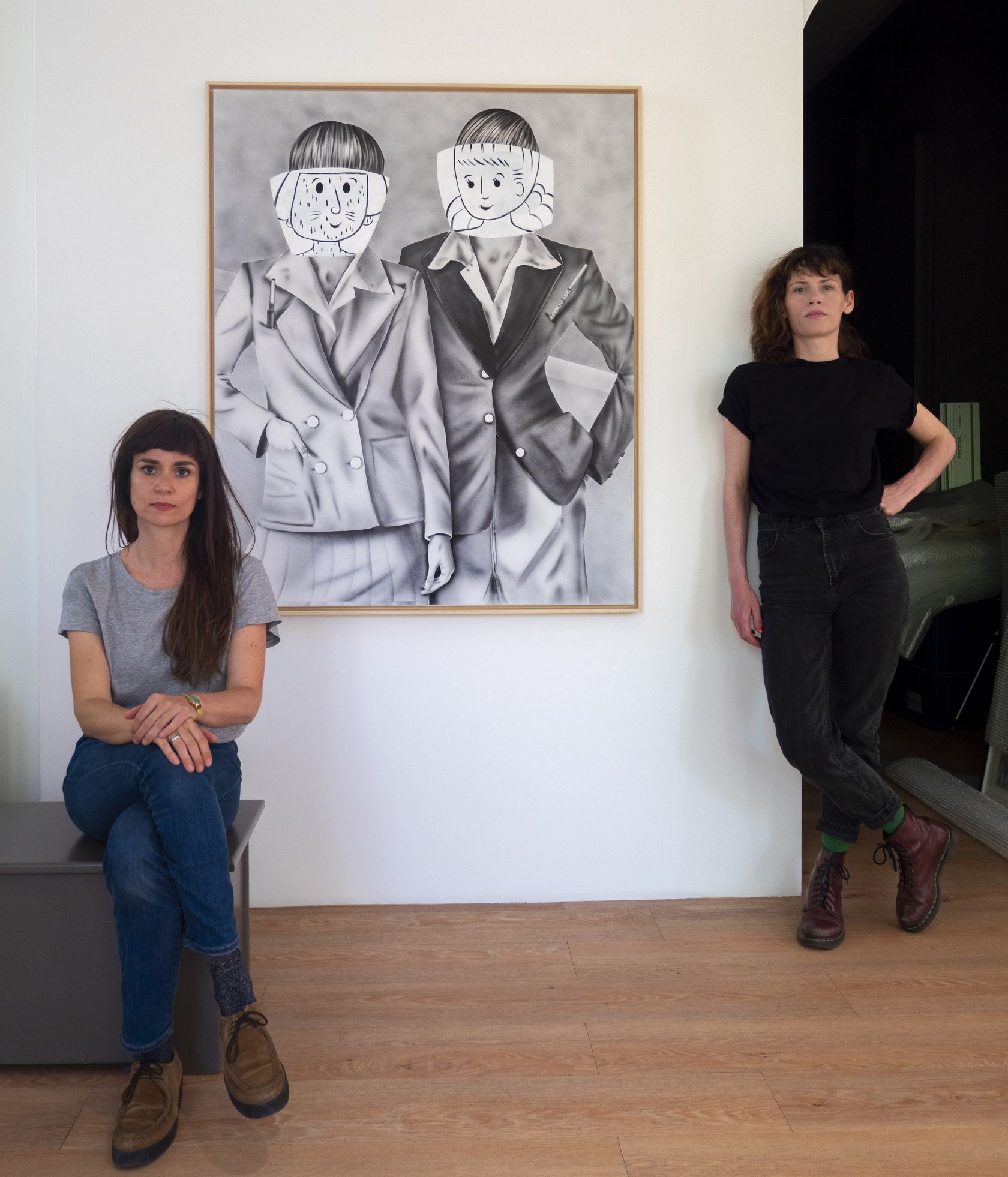
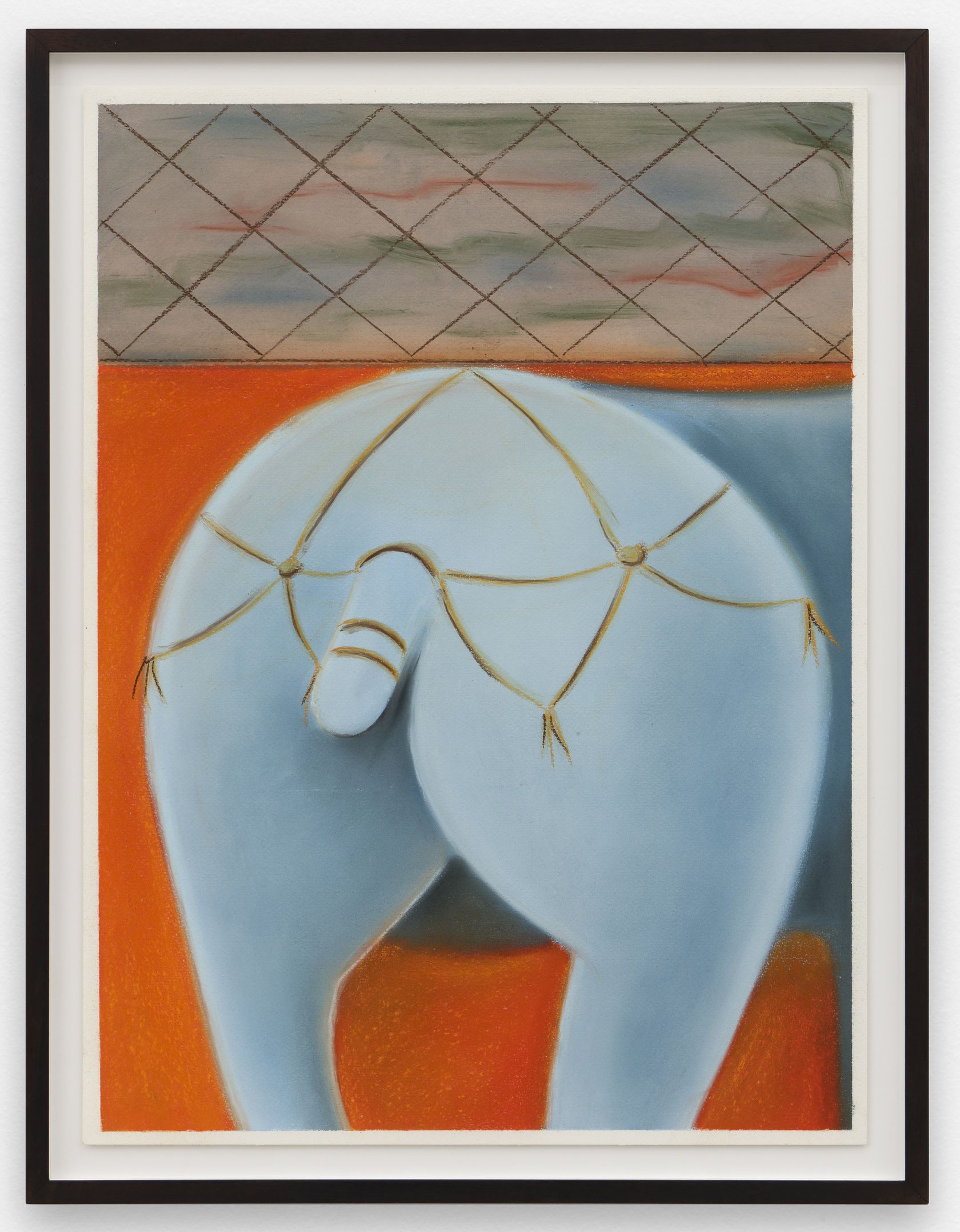
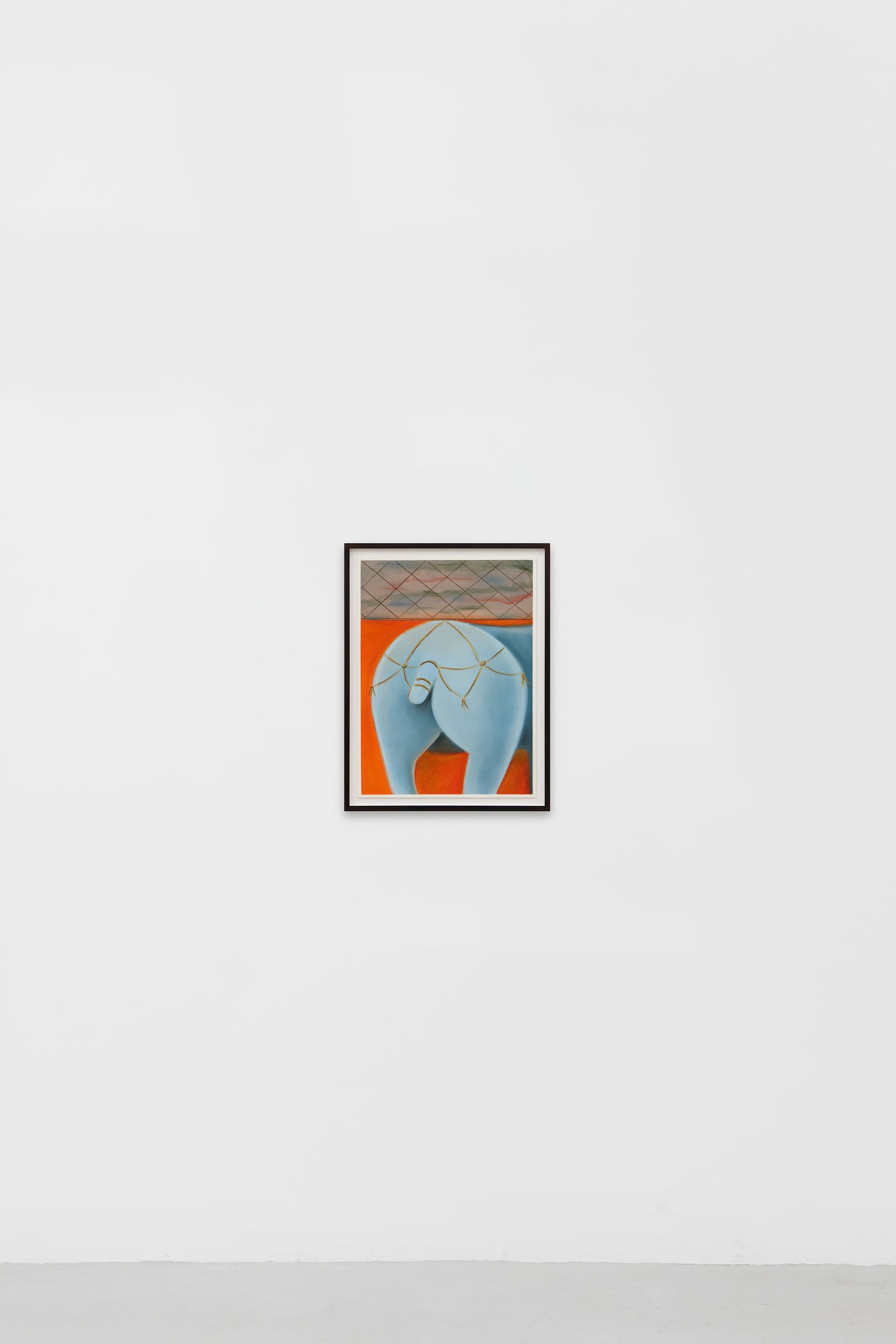
- Hippolyte Hentgen
- Pattern (horse) , 2023
- Soft pastel on paper
-
- 62 ×
- 48 × cm
- 24 7/16 ×
- 18 7/8 × inches
- unframed
- 69 ×
- 53 ×
- 3.5 × cm
- 27 3/16 ×
- 20 7/8 ×
- 1 3/8 × in
- framed
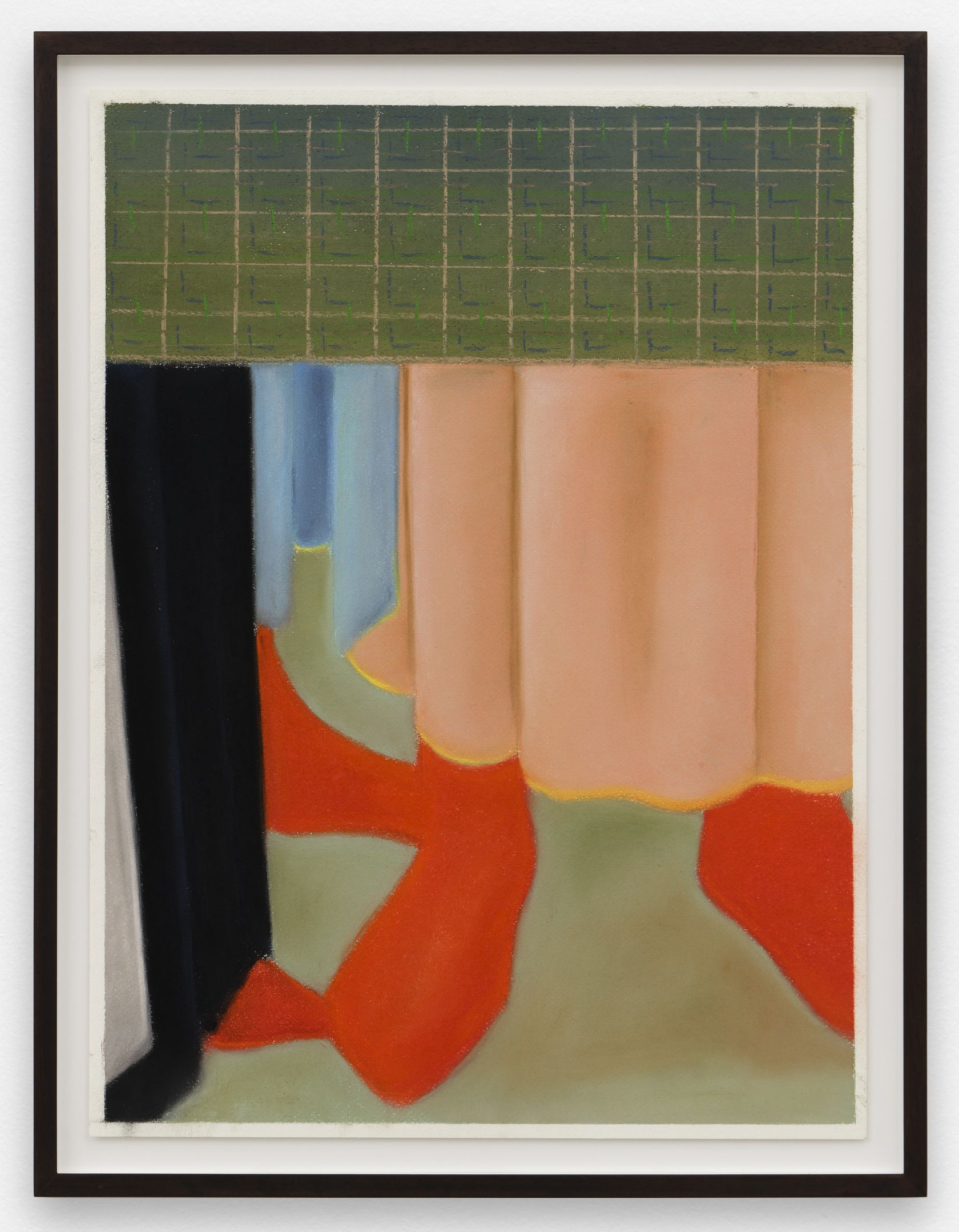
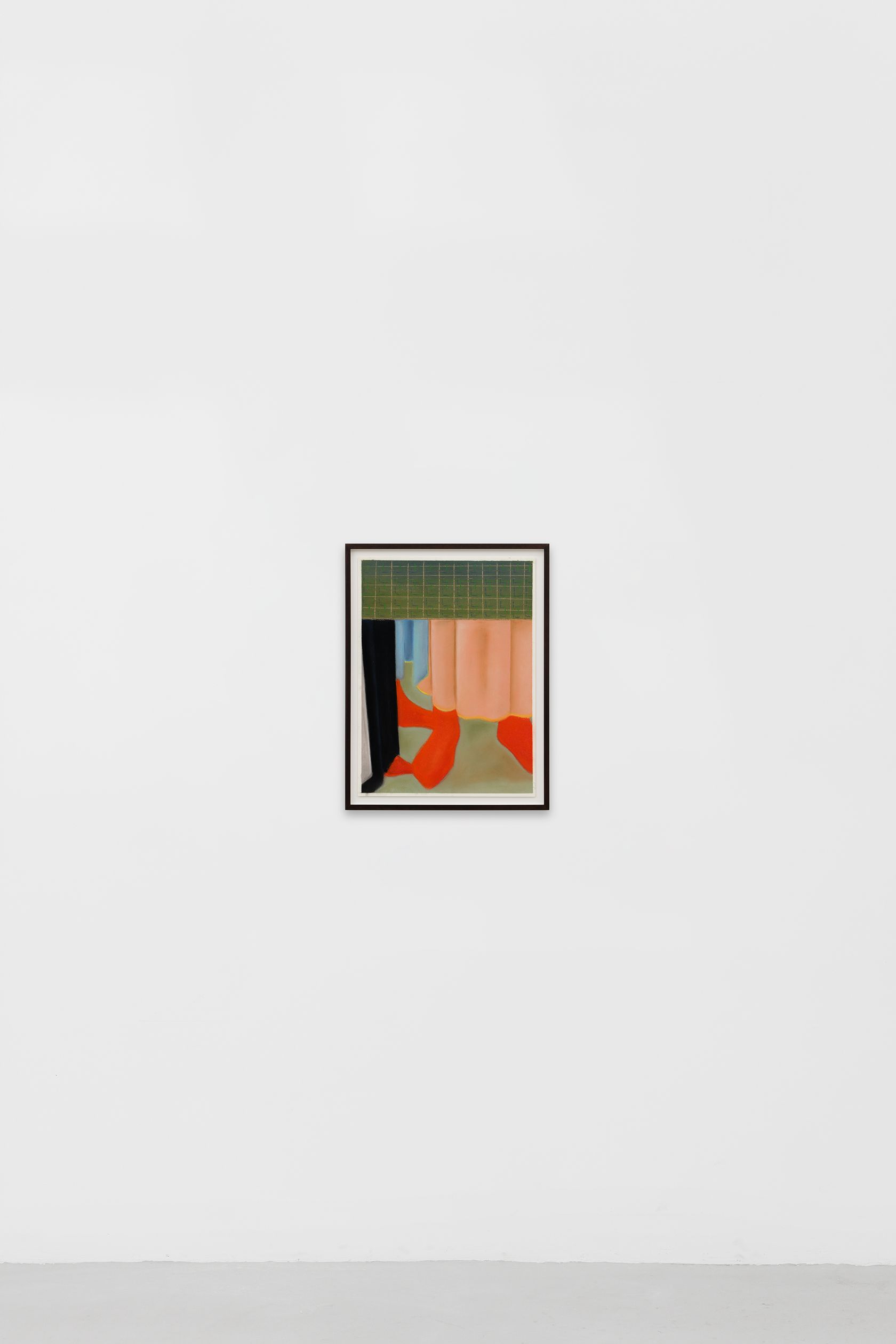
- Hippolyte Hentgen
- Pattern (socks 1) , 2023
- Soft pastel on paper
-
- 62 ×
- 48 × cm
- 24 7/16 ×
- 18 7/8 × inches
- unframed
- 69 ×
- 53 ×
- 3.5 × cm
- 27 3/16 ×
- 20 7/8 ×
- 1 3/8 × in
- framed
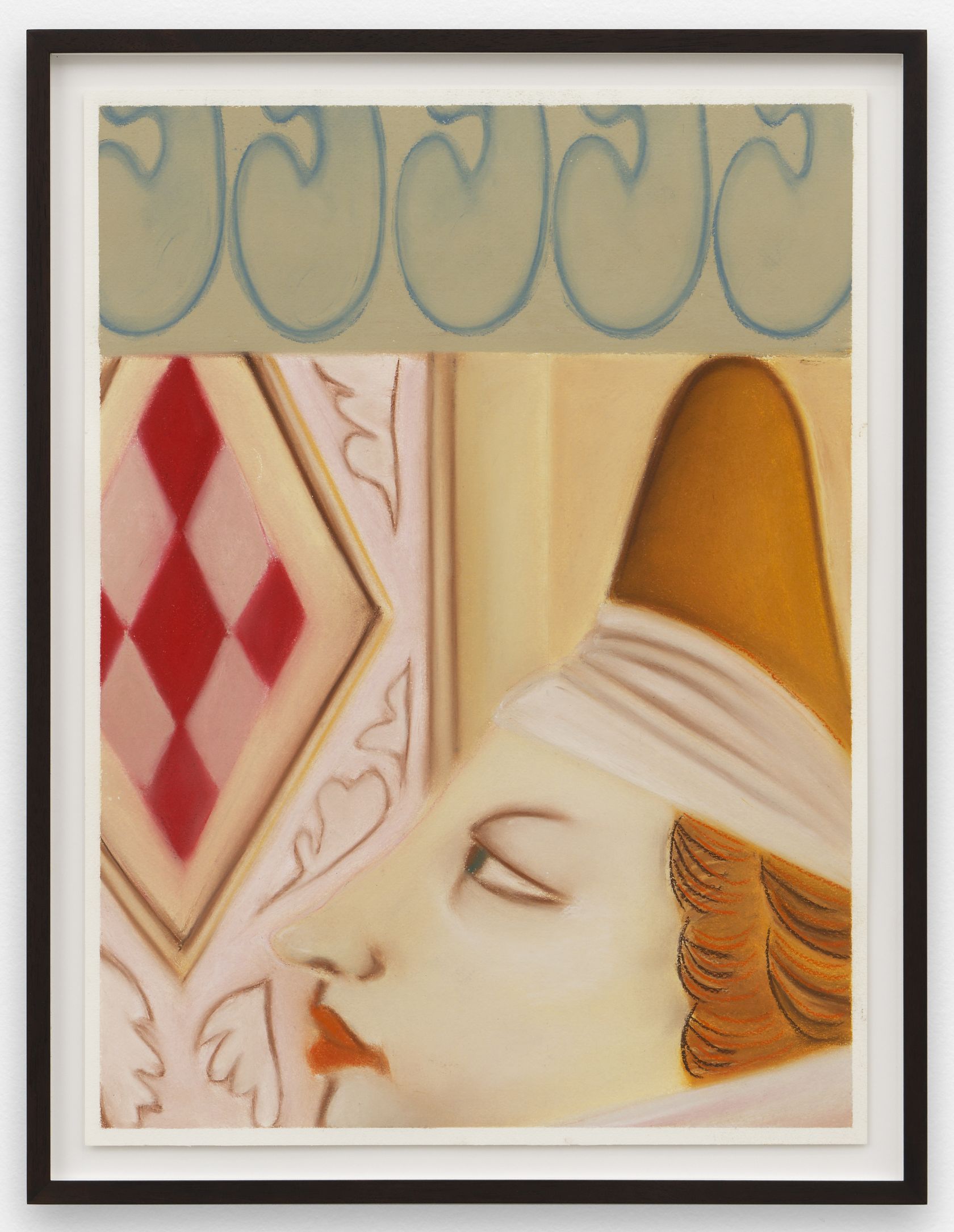
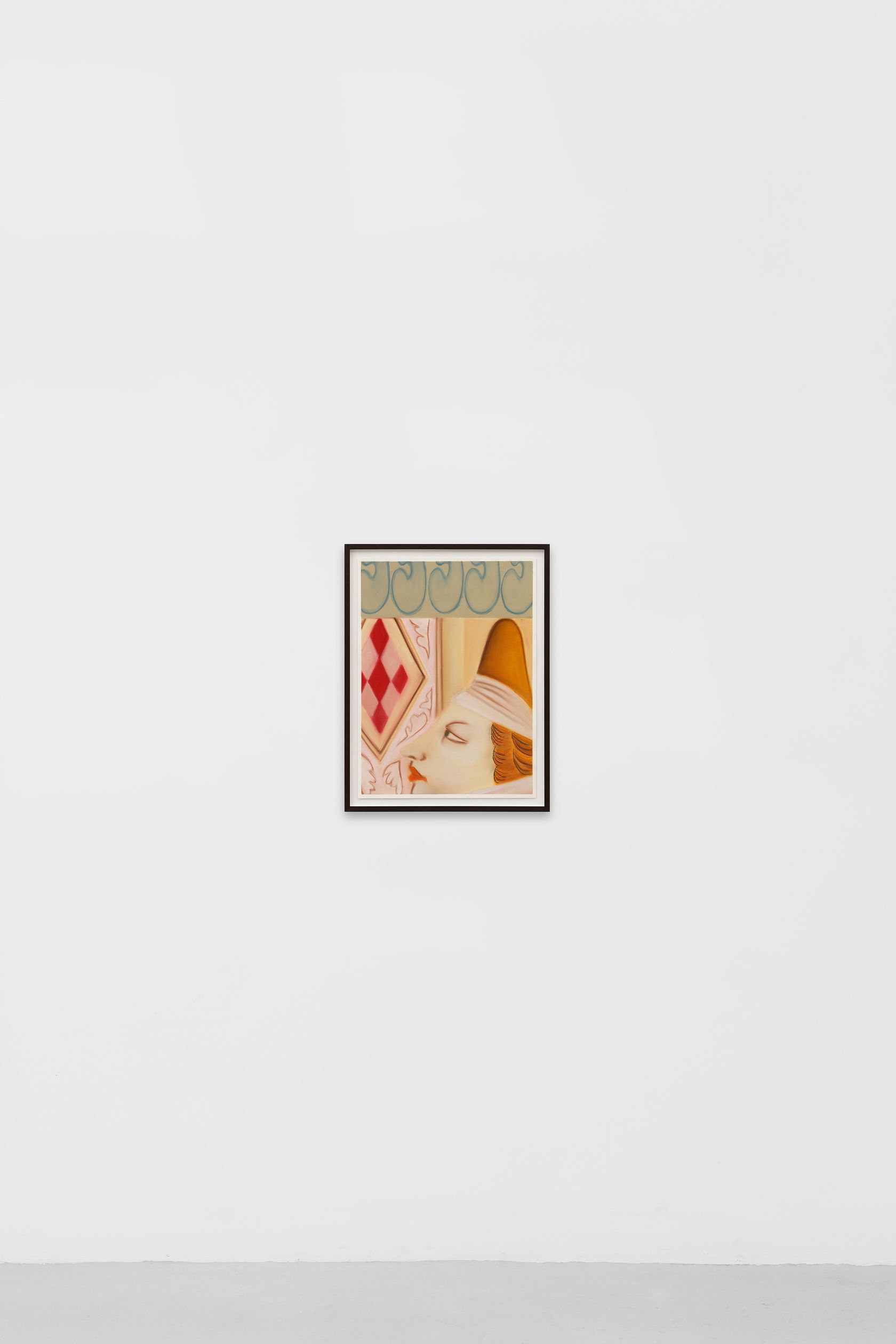
- Hippolyte Hentgen
- Pattern (unicorn) , 2023
- Soft pastel on paper
-
- 62 ×
- 48 × cm
- 24 7/16 ×
- 18 7/8 × inches
- unframed
- 69 ×
- 53 ×
- 3.5 × cm
- 27 3/16 ×
- 20 7/8 ×
- 1 3/8 × in
- framed
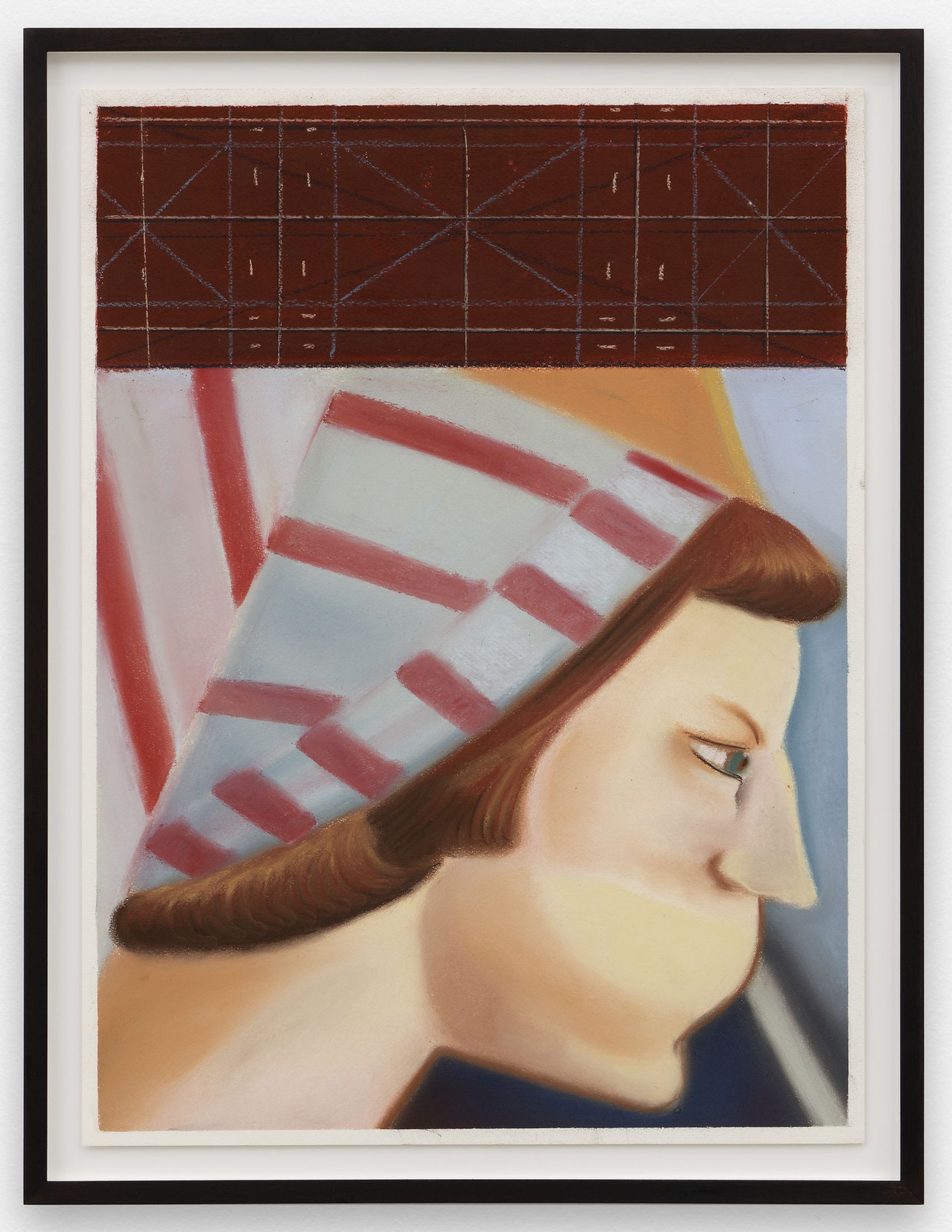
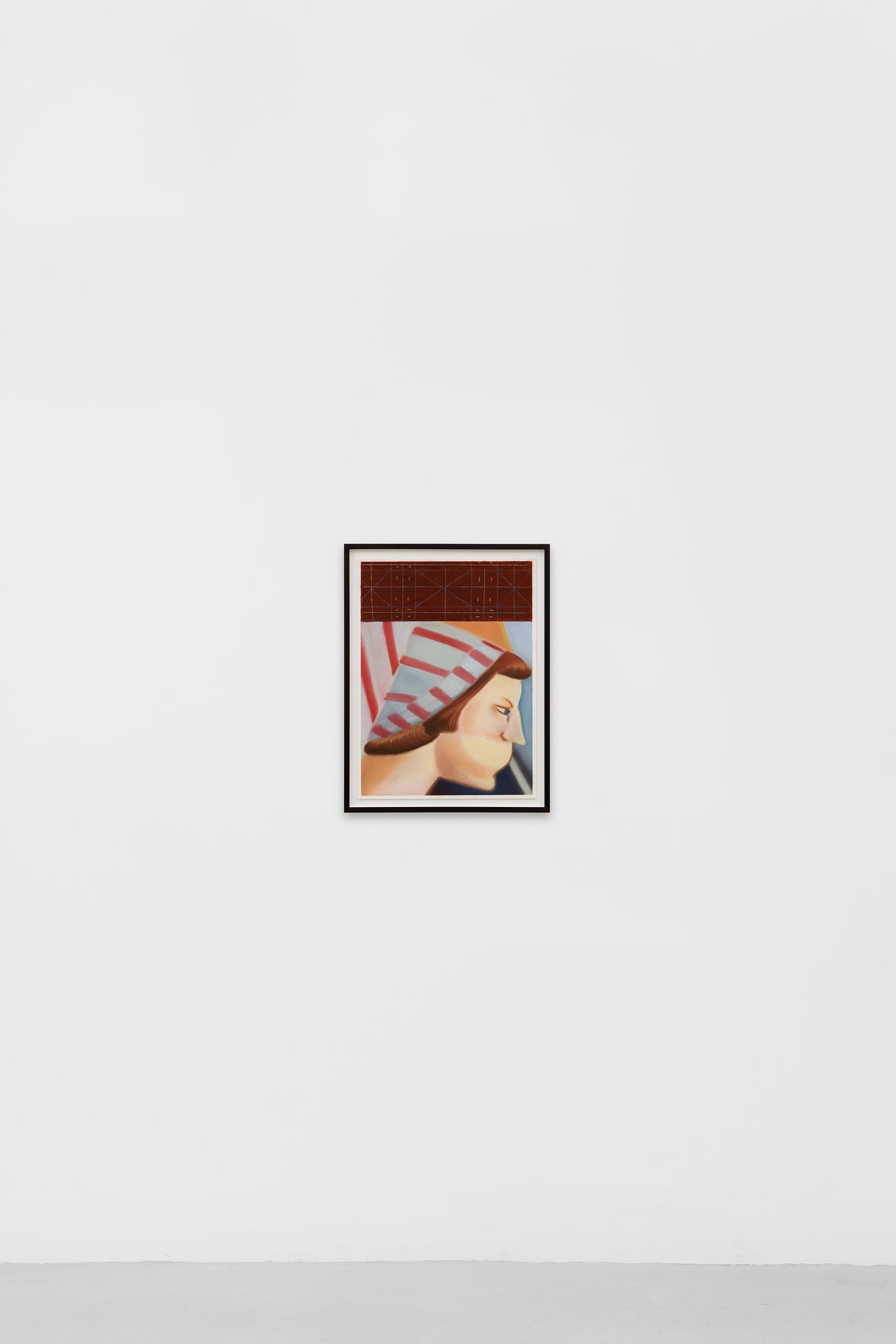
- Hippolyte Hentgen
- Pattern (blow) , 2023
- Soft pastel on paper
-
- 62 ×
- 48 × cm
- 24 7/16 ×
- 18 7/8 × inches
- unframed
- 69 ×
- 53 ×
- 3.5 × cm
- 27 3/16 ×
- 20 7/8 ×
- 1 3/8 × in
- framed
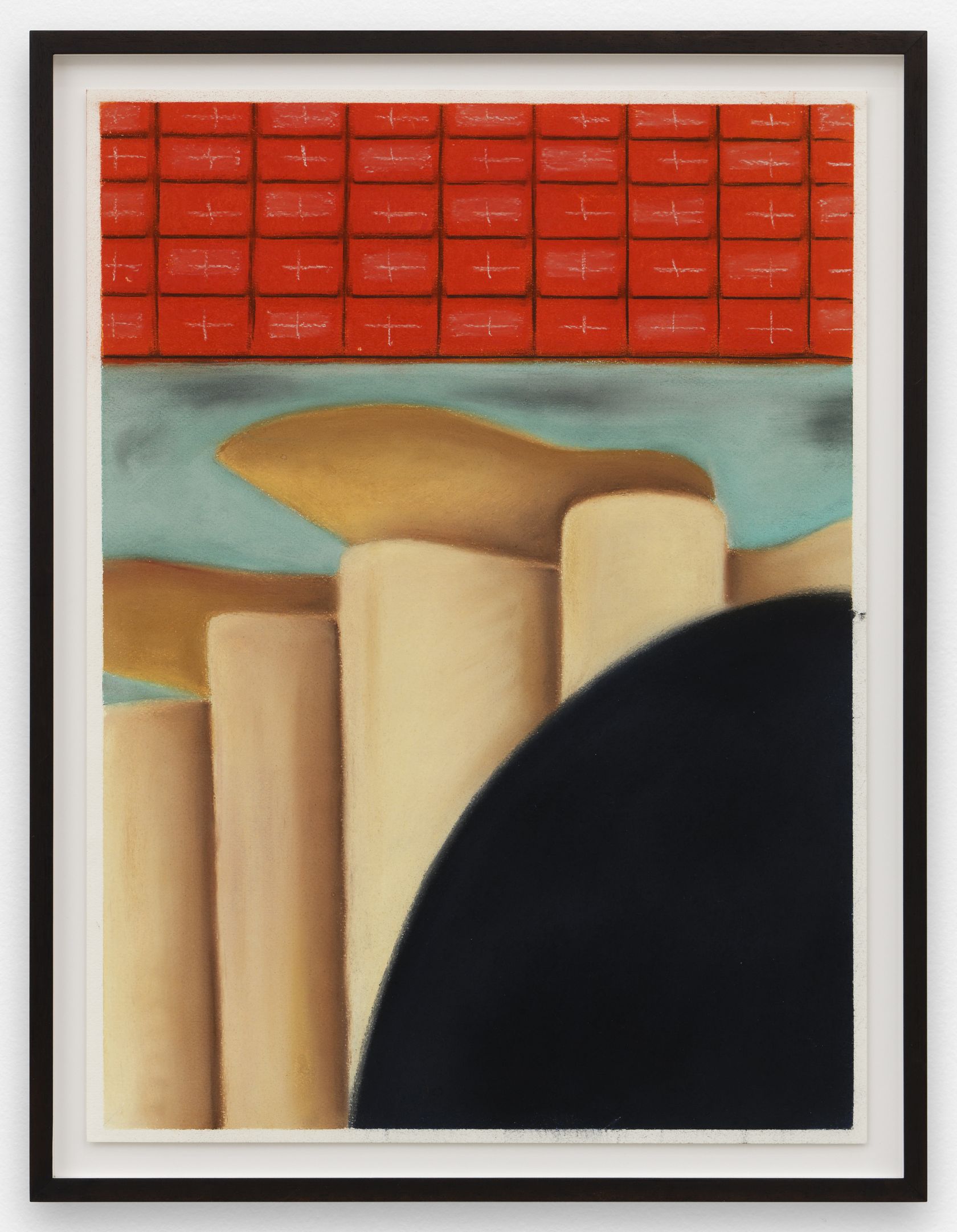
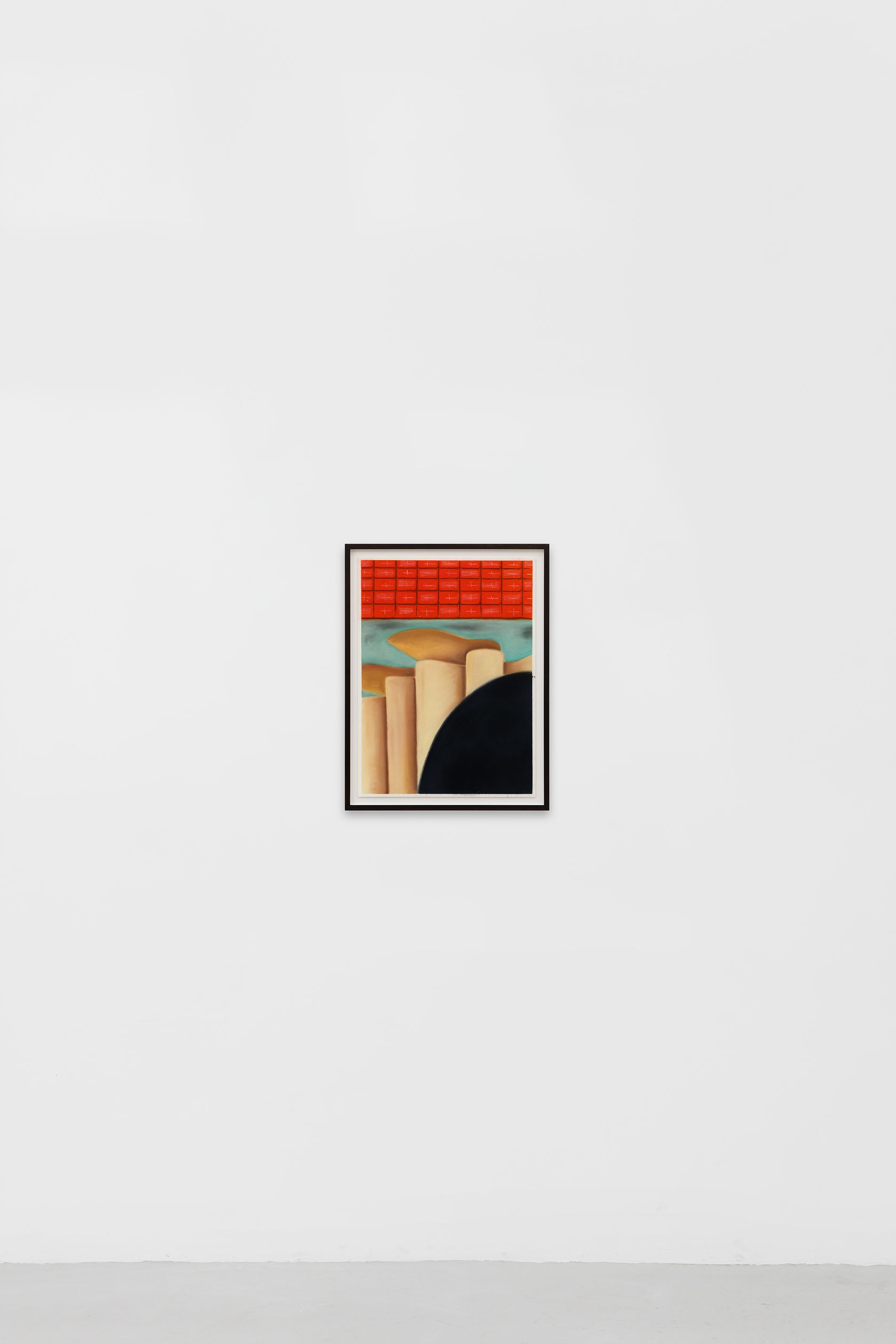
- Hippolyte Hentgen
- Pattern (dress 1) , 2023
- Soft pastel on paper
-
- 62 ×
- 48 × cm
- 24 7/16 ×
- 18 7/8 × inches
- unframed
- 69 ×
- 53 ×
- 3.5 × cm
- 27 3/16 ×
- 20 7/8 ×
- 1 3/8 × in
- framed
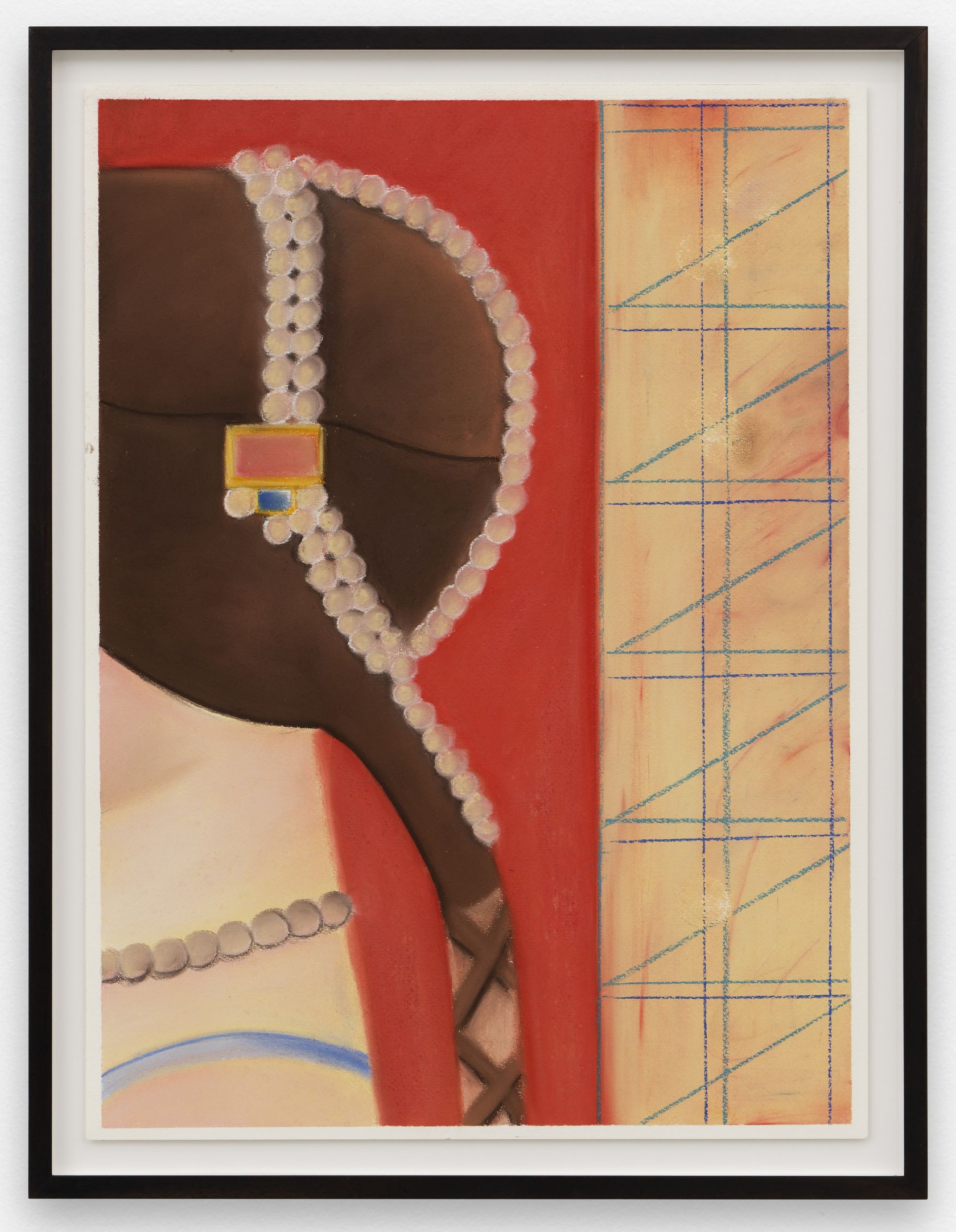
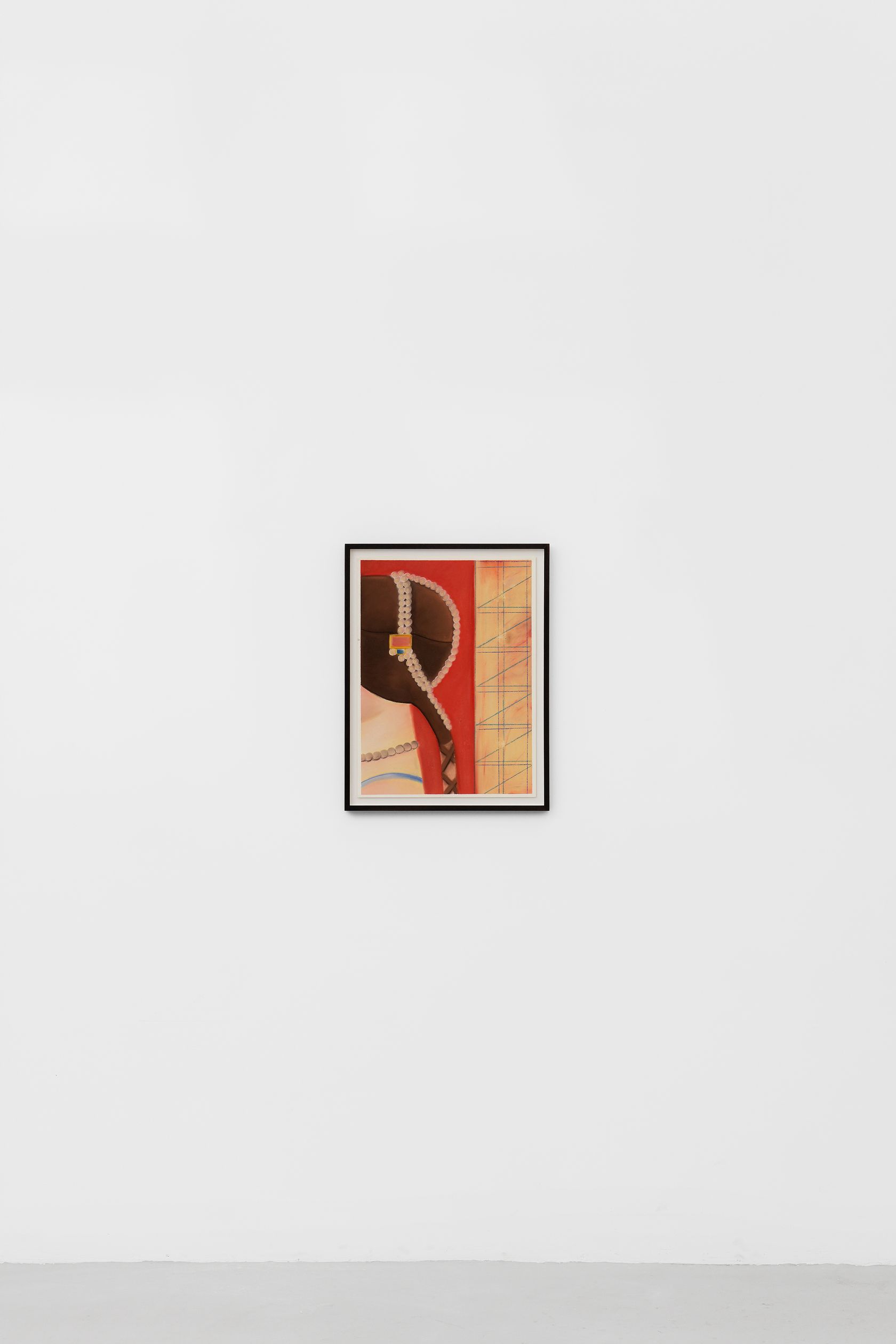
- Hippolyte Hentgen
- Pattern (pearls) , 2024
- Soft pastel on paper
-
- 62 ×
- 48 × cm
- 24 7/16 ×
- 18 7/8 × inches
- unframed
- 69 ×
- 53 ×
- 3.5 × cm
- 27 3/16 ×
- 20 7/8 ×
- 1 3/8 × in
- framed
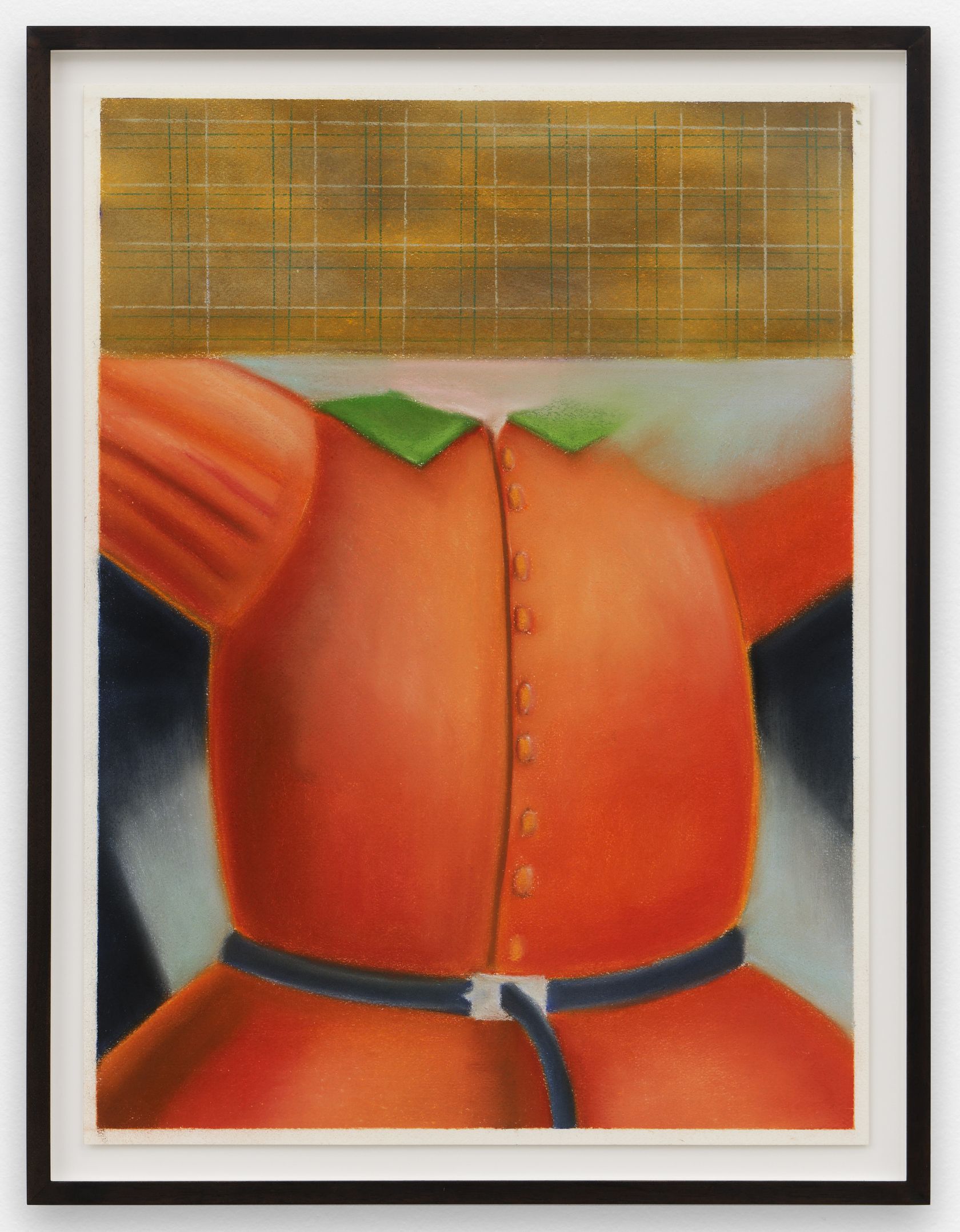
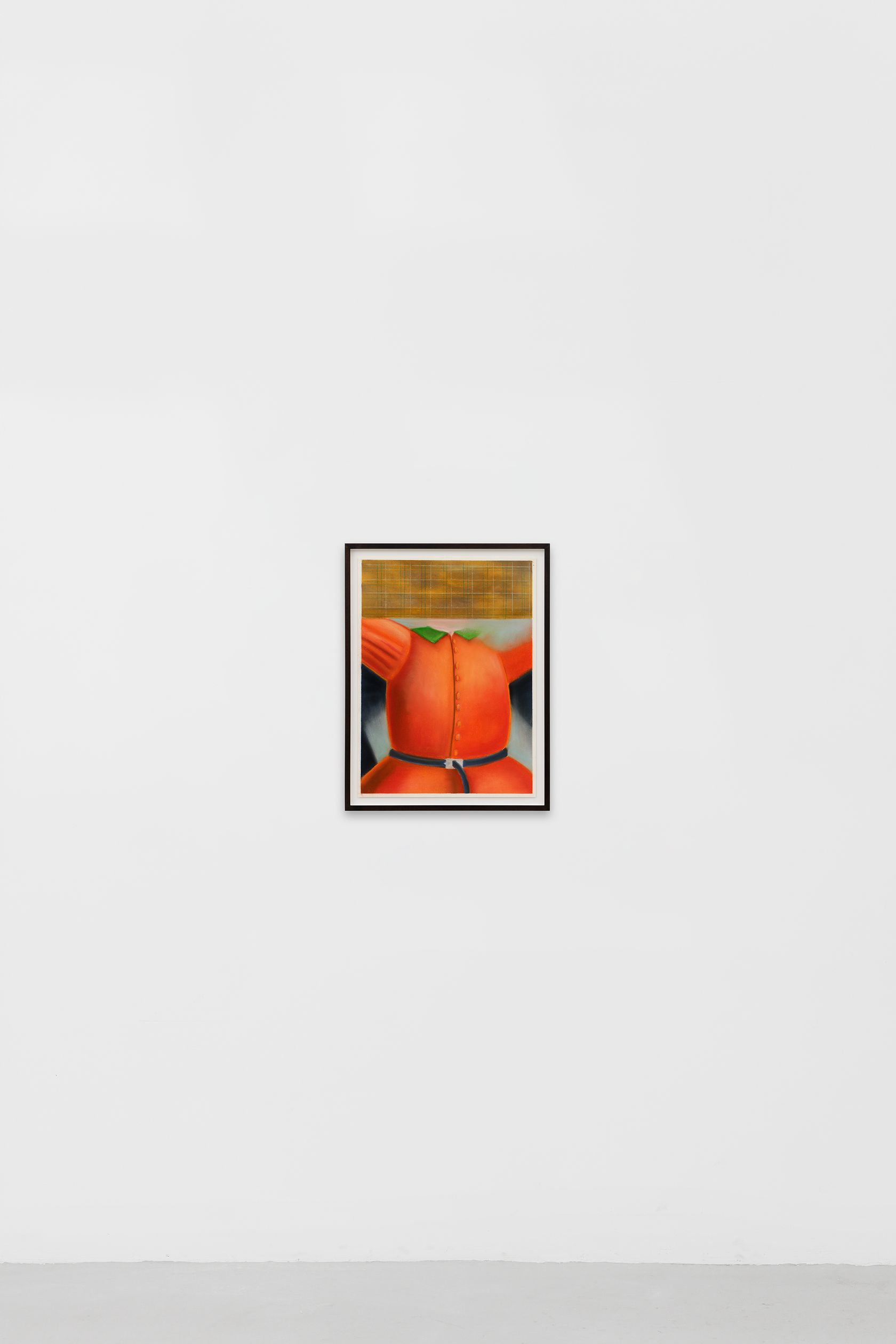
- Hippolyte Hentgen
- Pattern (shirt) , 2023
- Soft pastel on paper
-
- 62 ×
- 48 × cm
- 24 7/16 ×
- 18 7/8 × inches
- unframed
- 69 ×
- 53 ×
- 3.5 × cm
- 27 3/16 ×
- 20 7/8 ×
- 1 3/8 × in
- framed
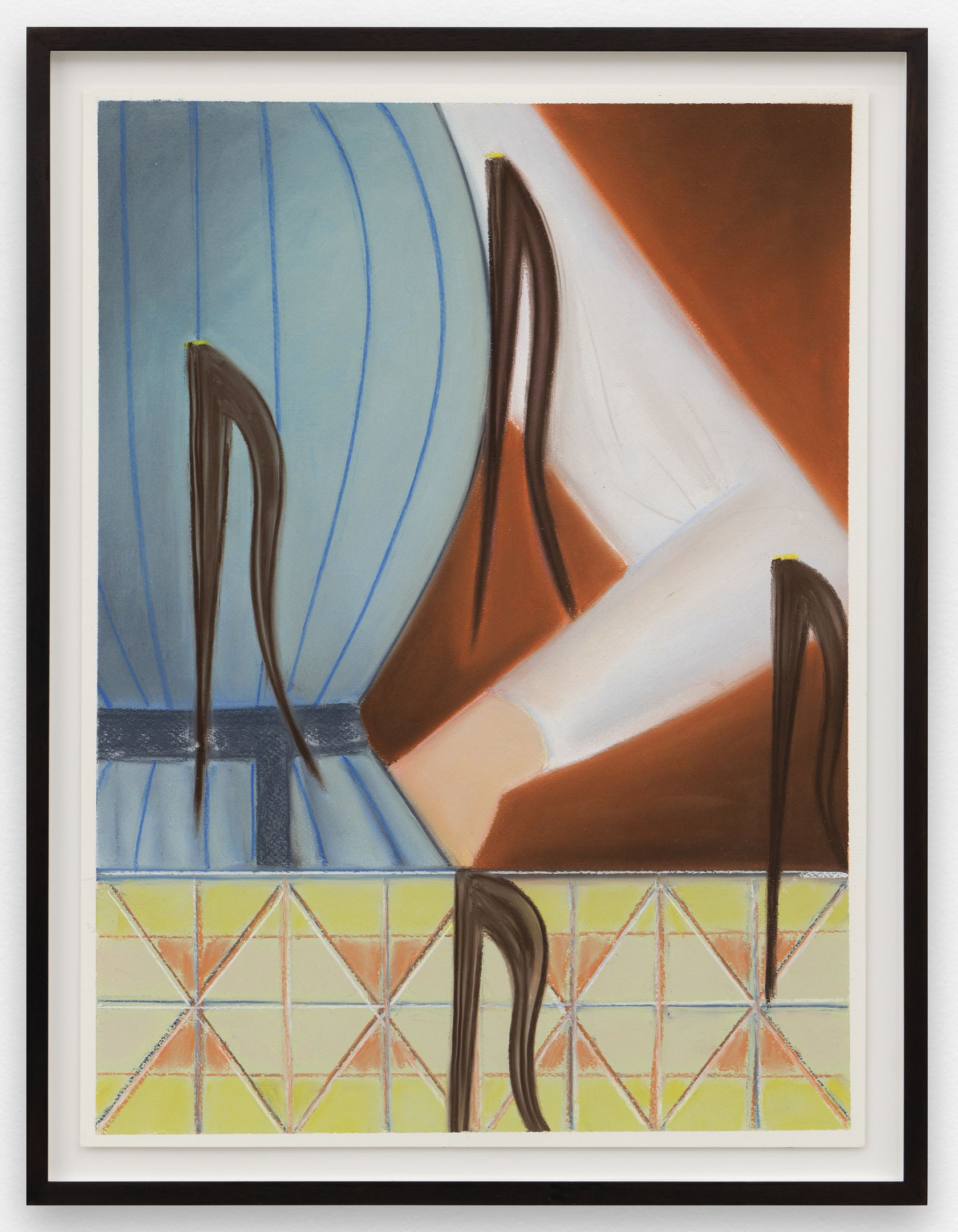
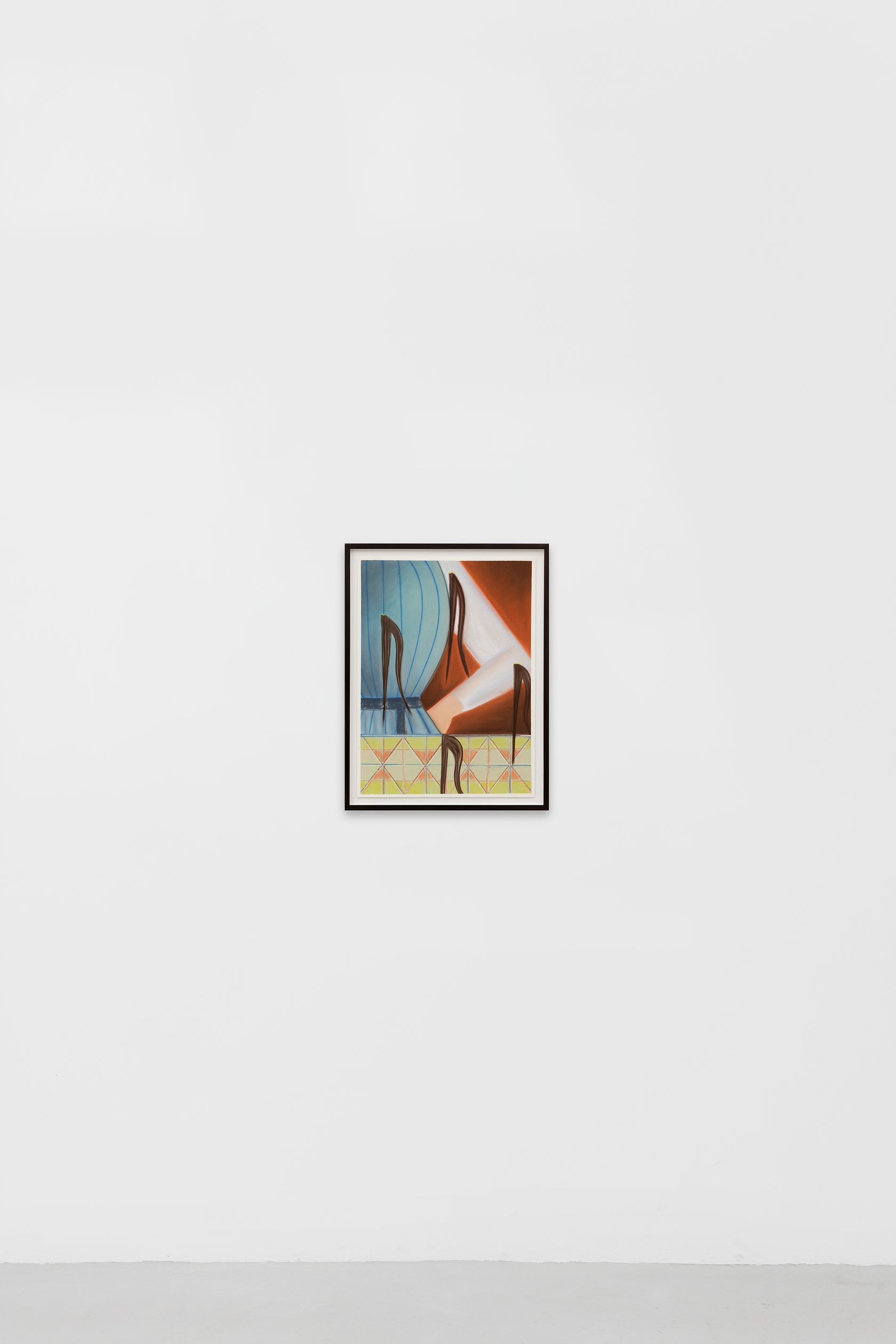
- Hippolyte Hentgen
- Pattern (ribbons) , 2024
- Soft pastel on paper
-
- 62 ×
- 48 × cm
- 24 7/16 ×
- 18 7/8 × inches
- unframed
- 69 ×
- 53 ×
- 3.5 × cm
- 27 3/16 ×
- 20 7/8 ×
- 1 3/8 × in
- framed
Justin Liam O’Brien is a narrative painter. His works portray characters, mainly male, within spaces inspired by the artist’s everyday life as well as historical painting. The artist delights in depicting the ambivalence of intimate emotions, often at bursting point or in the second after the explosion. He explores the psychological dimension of the relationship between bodies and architecture, where an individual is depicted in the solitude of an apartment or perhaps multiplied in the setting of a crowd. Justin Liam O’Brien’s very particular style of painting is immediately recognizable through its rounded forms, typical of the computer software he used as a 3D animator. His characters often bear the features of the artist himself or his family members and close friends, whereas the curvaceous lines and smooth skin of their bodies, painted in flat color tints, using a bold palette, with very few effects apart from the use of subtle color gradients, evoke the architypes of classical painting. The compositions condensed within the paintings and the rounded perspectives generate a claustrophobic and disorienting effect. As part of a lineage of Queer artists, O’Brien explores the subjects of identity, isolation, sadness and humor, set in a changing world.
Justin Liam O’Brien was born in 1991 in Flushing, New York and lives and works in Brooklyn. After graduating from the Pratt Institute in 2016, his work was exhibited at the Richard Heller gallery in Los Angeles and the Monya Rowe gallery in New York. He also participated in a group show on the subject of the self-portrait, curated by Sasha Bogojev at High Line Nine in New York. He has featured in articles in Elephant Magazine, Artforum and Juxtapoz.
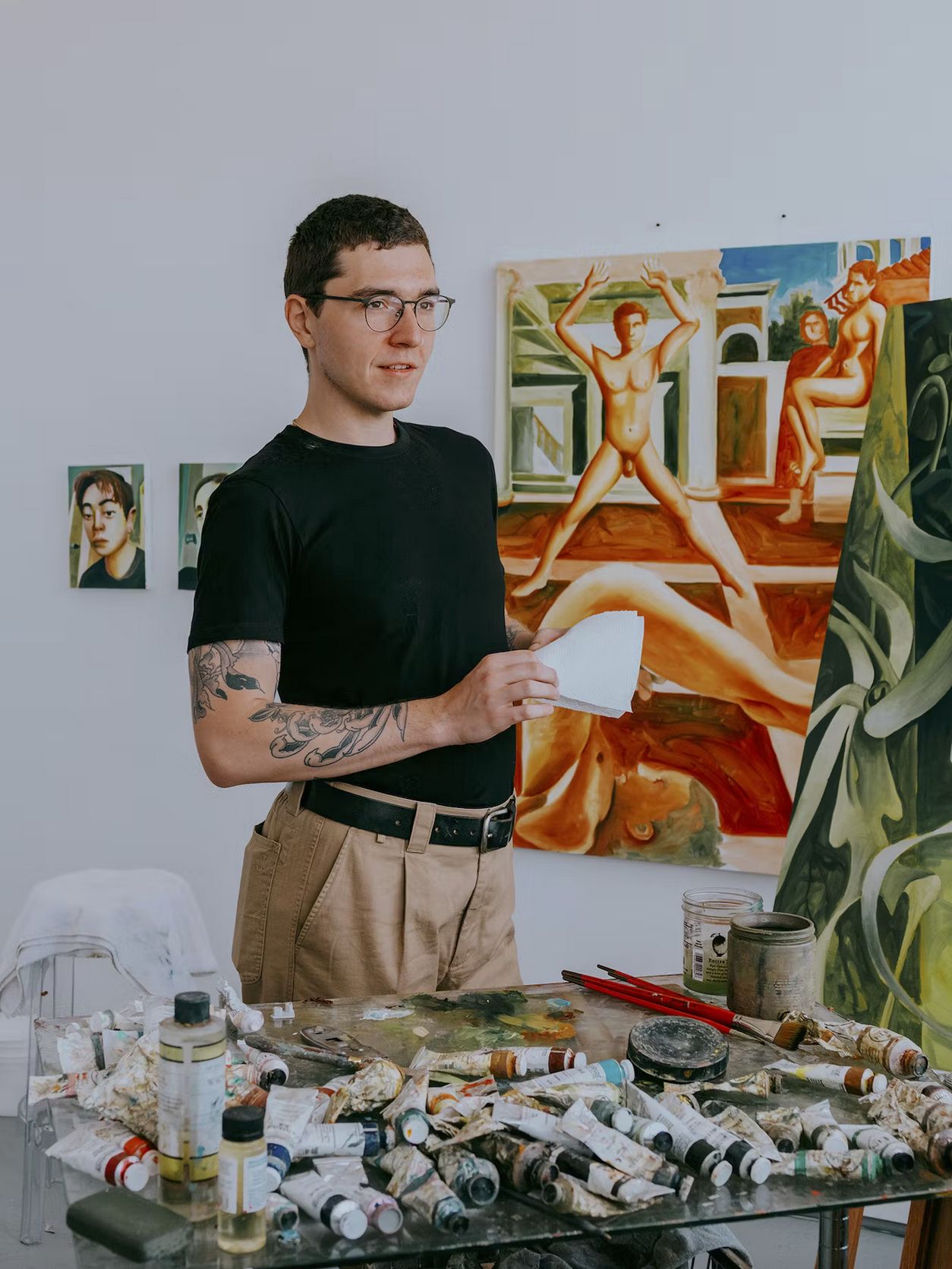
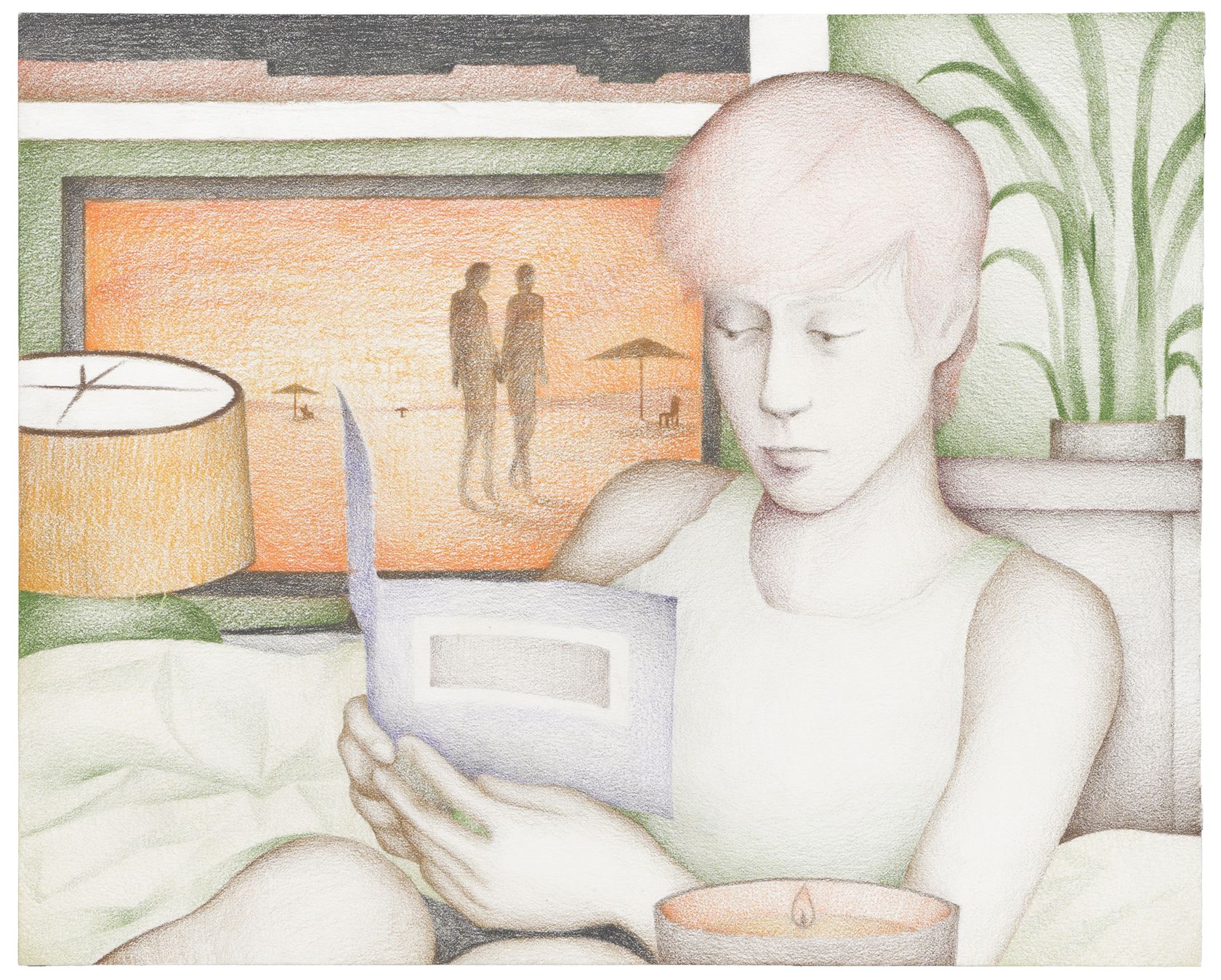
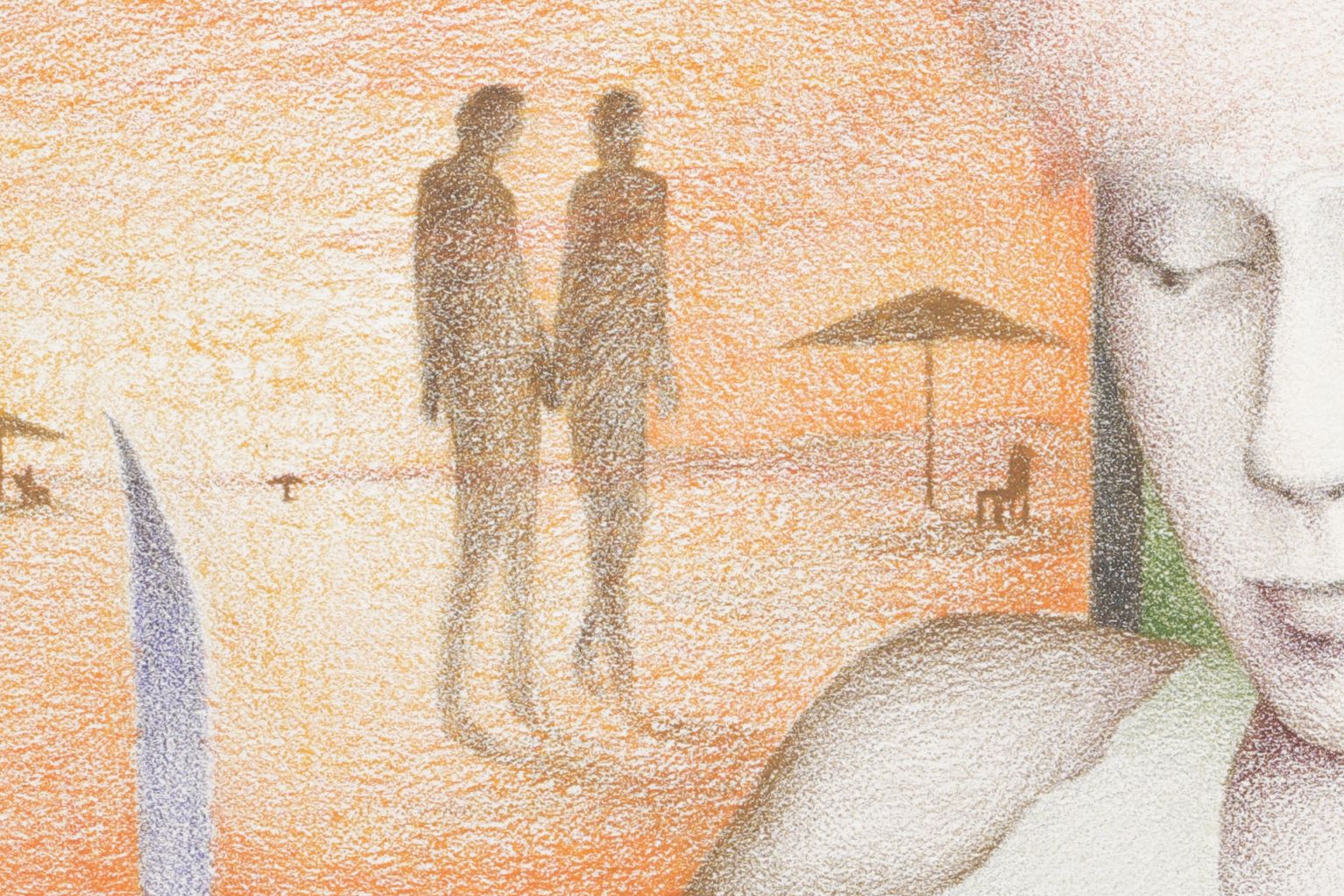
- Justin Liam O’Brien
- Searchers , 2024
- Colored pencil on paper
-
- 27.5 ×
- 34.5 × cm
- 10 7/8 ×
- 13 18/32 × inches
- unframed
- 45.5 ×
- 52 ×
- 2.5 × cm
- 17 15/16 ×
- 20 1/2 ×
- 1 × in
- framed
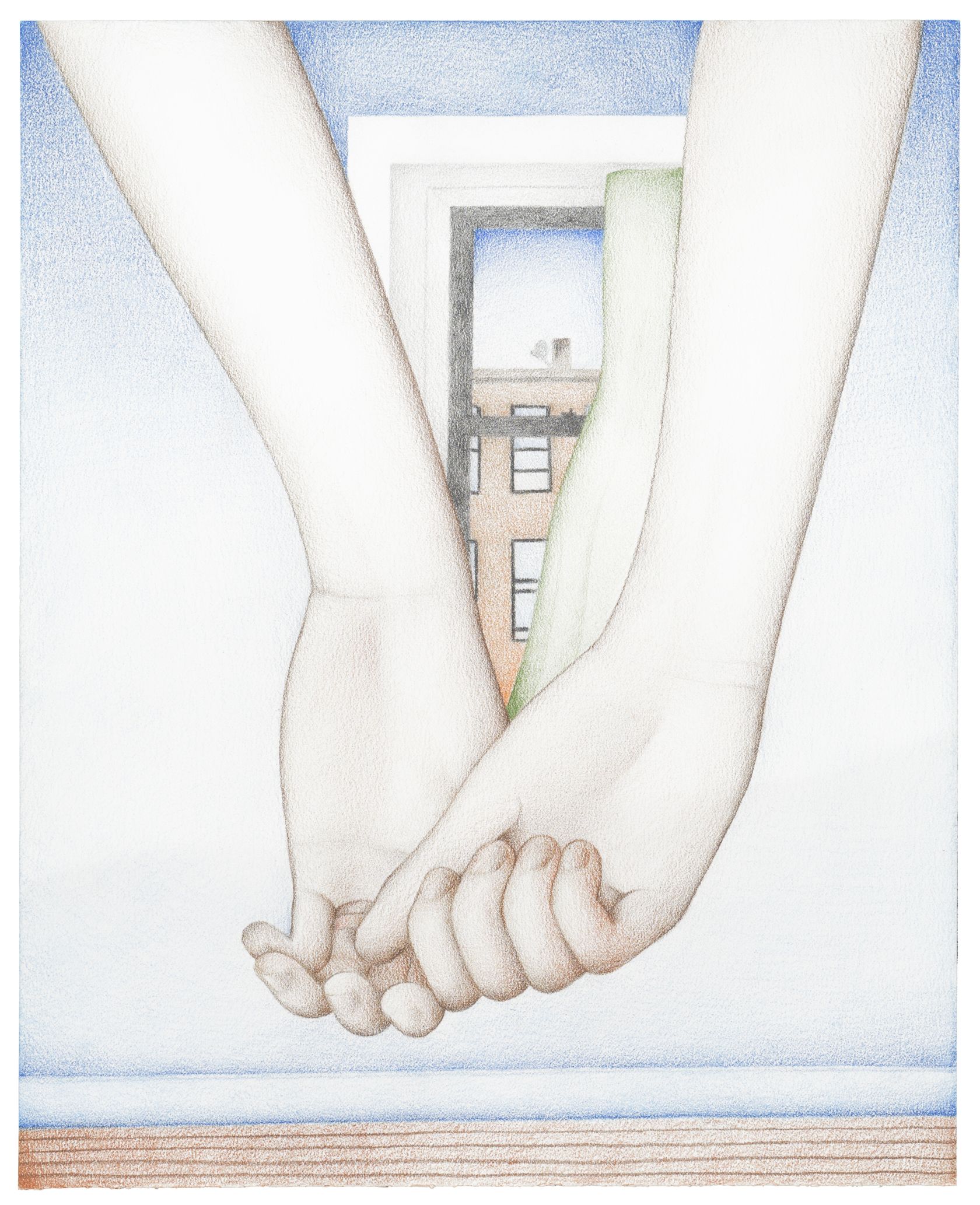
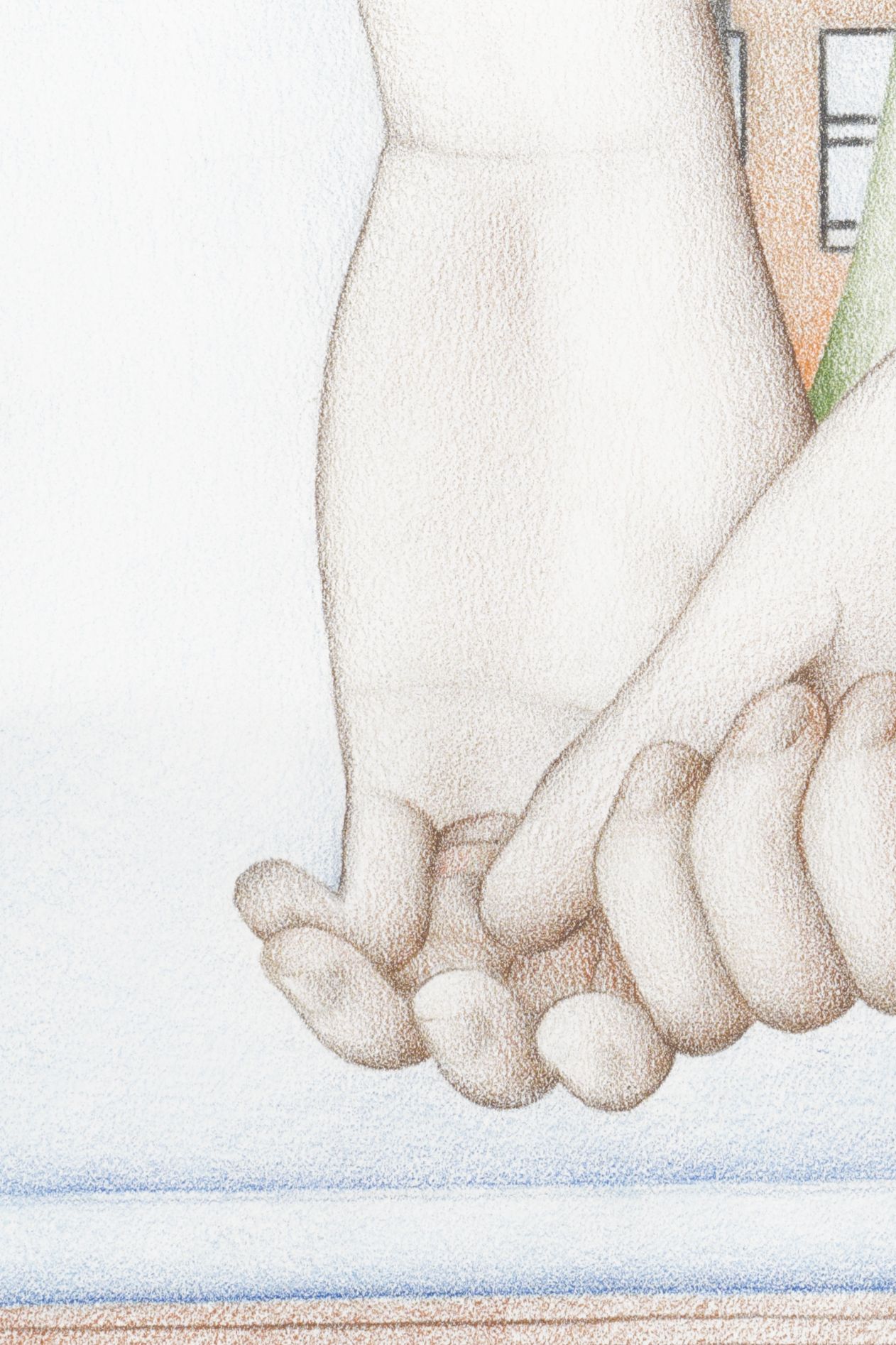
- Justin Liam O’Brien
- Tomorrow , 2024
- Colored pencil on paper
-
- 34.5 ×
- 27.5 × cm
- 13 18/32 ×
- 10 7/8 × inches
- unframed
- 52 ×
- 45.5 ×
- 2.5 × cm
- 20 1/2 ×
- 17 15/16 ×
- 1 × in
- framed
Since the 1990s, Françoise Pétrovitch has produced one of the most powerful bodies of work on the French art scene. Amongst the numerous media she has explored—ceramics, glass, ink washes, painting, print and video—drawing retains pride of place. In constant dialog with the artists who have preceded her, she has been able to measure herself against the incontrovertible motifs of “high art”—Saint Sebastian, still lifes, etc. Pétrovitch’s art reveals an ambiguous world, willingly transgressive, playing with conventional boundaries and eluding any interpretation. Intimacy, fragments of life and disappearance, alongside the themes such as the double, transition and cruelty run through her work, which is inhabited by animals, flowers and beings, and whose atmosphere fluctuates between light and dark, rarely leaving the spectator unmoved.
She has enjoyed numerous solo exhibitions both in France and abroad, as in the Fonds Hélène et Édouard Leclerc in Landerneau and the Bibliothèque nationale de France, Paris, in 2022, and the Musée de la Vie romantique, Paris, in 2023. In 2018, she was the first contemporary artist to be awarded a solo exhibition at the Louvre-Lens. Over the past few years, Pétrovitch has produced monumental wall drawings and large format ensembles, for the Galerie des Enfants at the Centre Pompidou, the West Bund Museum, Shanghai, or for the Ballets du Nord Company. Her works are included in many private and public collections, most notably the Centre Pompidou, Paris (FR), the Voorlinden Museum, Wassenaar (NL), the National Museum of Women in the Arts, Washington D.C. (US), the Musée Jenisch, Vevey (CH), the Musée d’Art Moderne et Contemporain of Saint-Etienne (FR) and of Strasbourg (FR), the MAC VAL (FR) and numerous regional art centers throughout France as well as the Salomon and Guerlain Foundations.
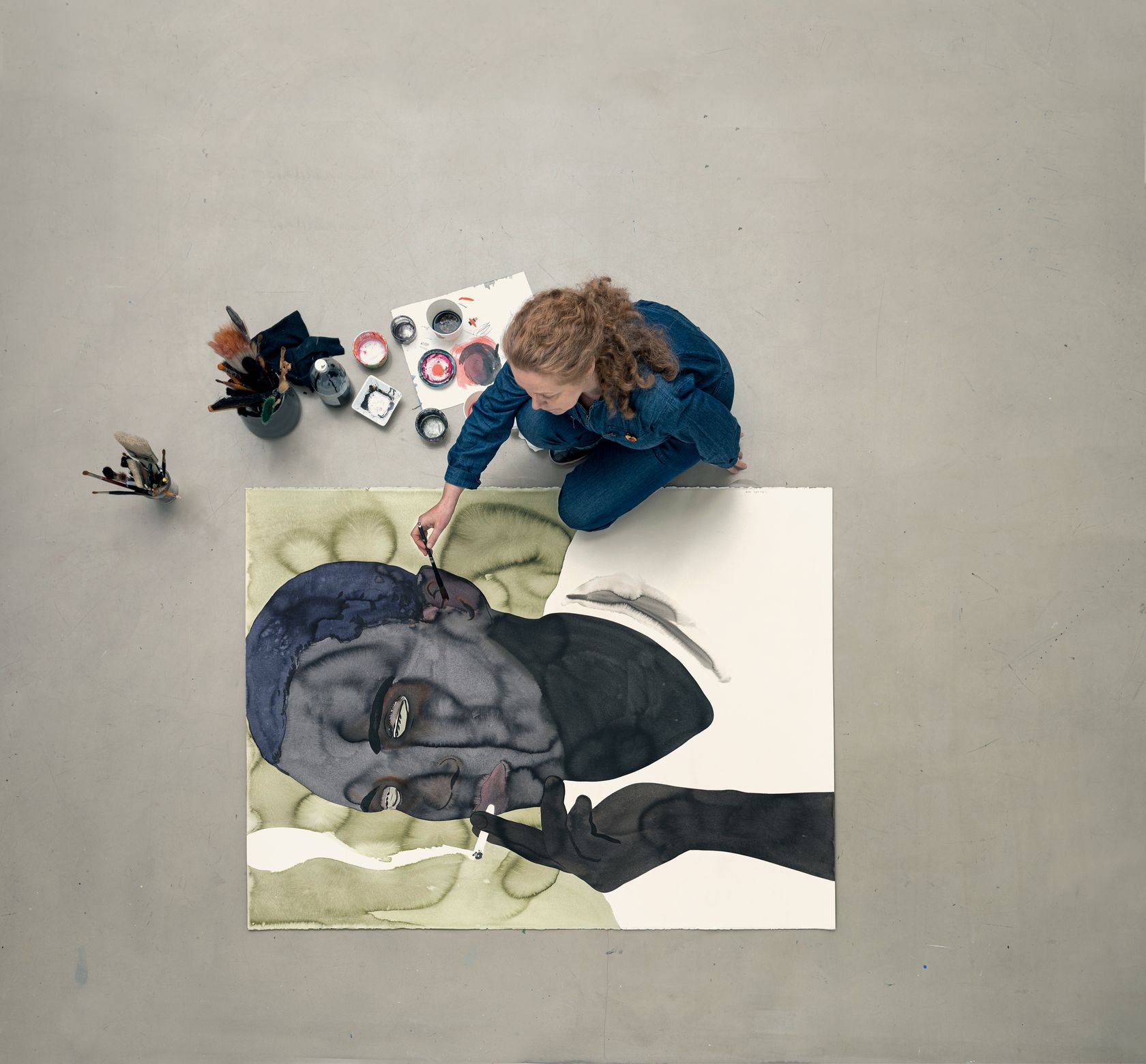
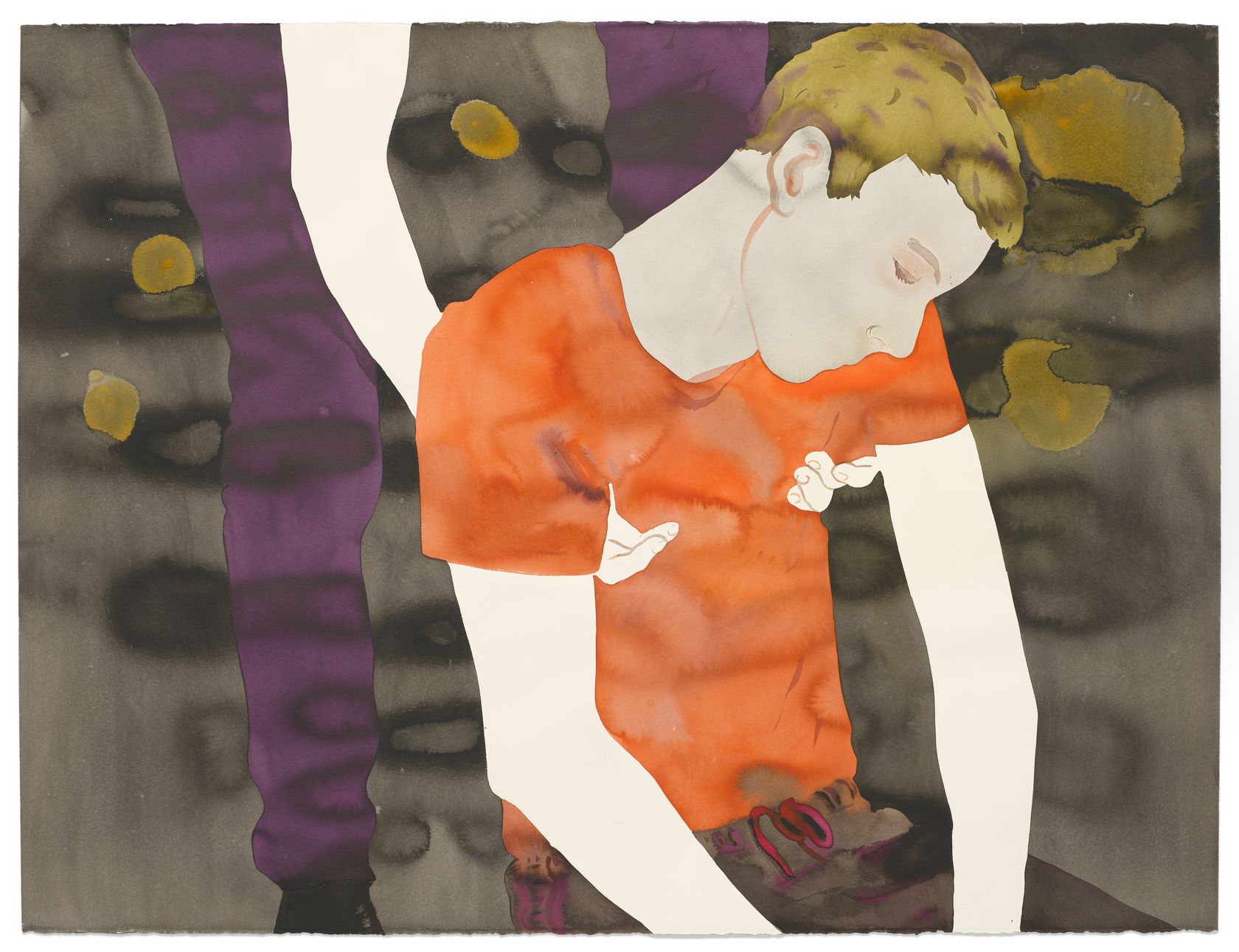
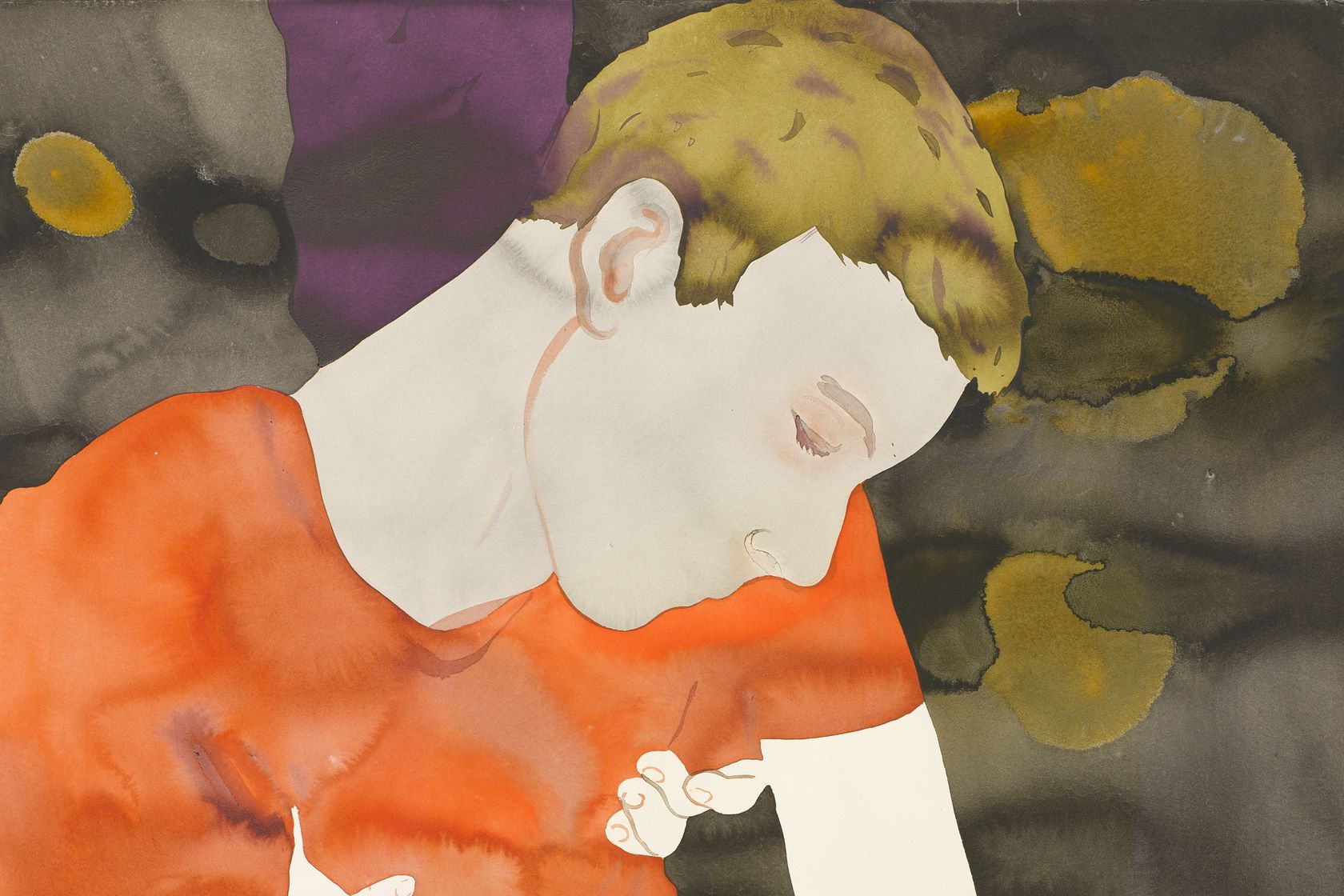
- Françoise Pétrovitch
- Tenir , 2022
- Ink wash on paper
-
- 120 ×
- 160 × cm
- 47 2/8 ×
- 63 × inches
- unframed
- 136 ×
- 178 ×
- 5 × cm
- 53 9/16 ×
- 70 1/16 ×
- 1 15/16 × in
- framed
The African-American artist Philemona Williamson (b. 1951) brings together personal and more universal narratives in her brightly colored, large format paintings that portray children and teenagers, often in mysterious situations. She paints directly onto her canvases without preliminary sketches and her paintings thus resemble palimpsests telling their own stories, with multiple layers, figures and scenes appearing across the support, before seemingly being abandoned. Williamson’s works are deeply rooted in her childhood memories and include references to memorabilia, such as dolls typical of American popular culture from the artist’s personal collection, and as such are an invitation to explore mysterious and unfinished tales.
Williamson has been exhibited in numerous American institutions, from her debut solo show at the Queens Museum of Art in 1988, to Metaphorical Narratives, at the Montclair Art Museum, New Jersey, in 2017, which spanned the thirty years of her artistic career. Her works can be seen in many public collections across the USA and she has been commissioned for several public projects, most notably by the New York Metropolitan Transport Authority. In 2022, she was one of fifteen recipients of the Anonymous Was A Woman prize, awarded annually since 1986 to women artists over the age of 40, in recognition of their previous and future work.
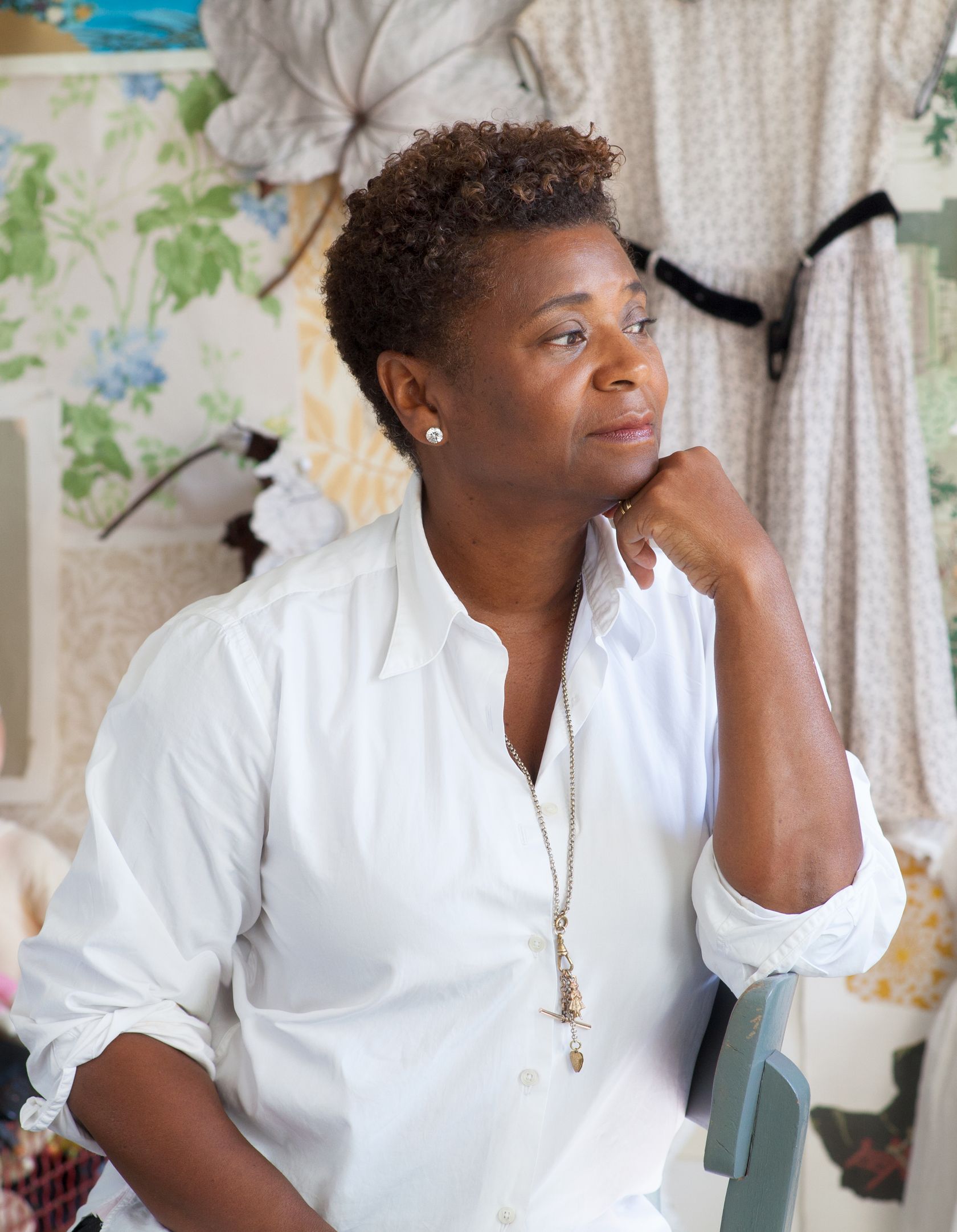
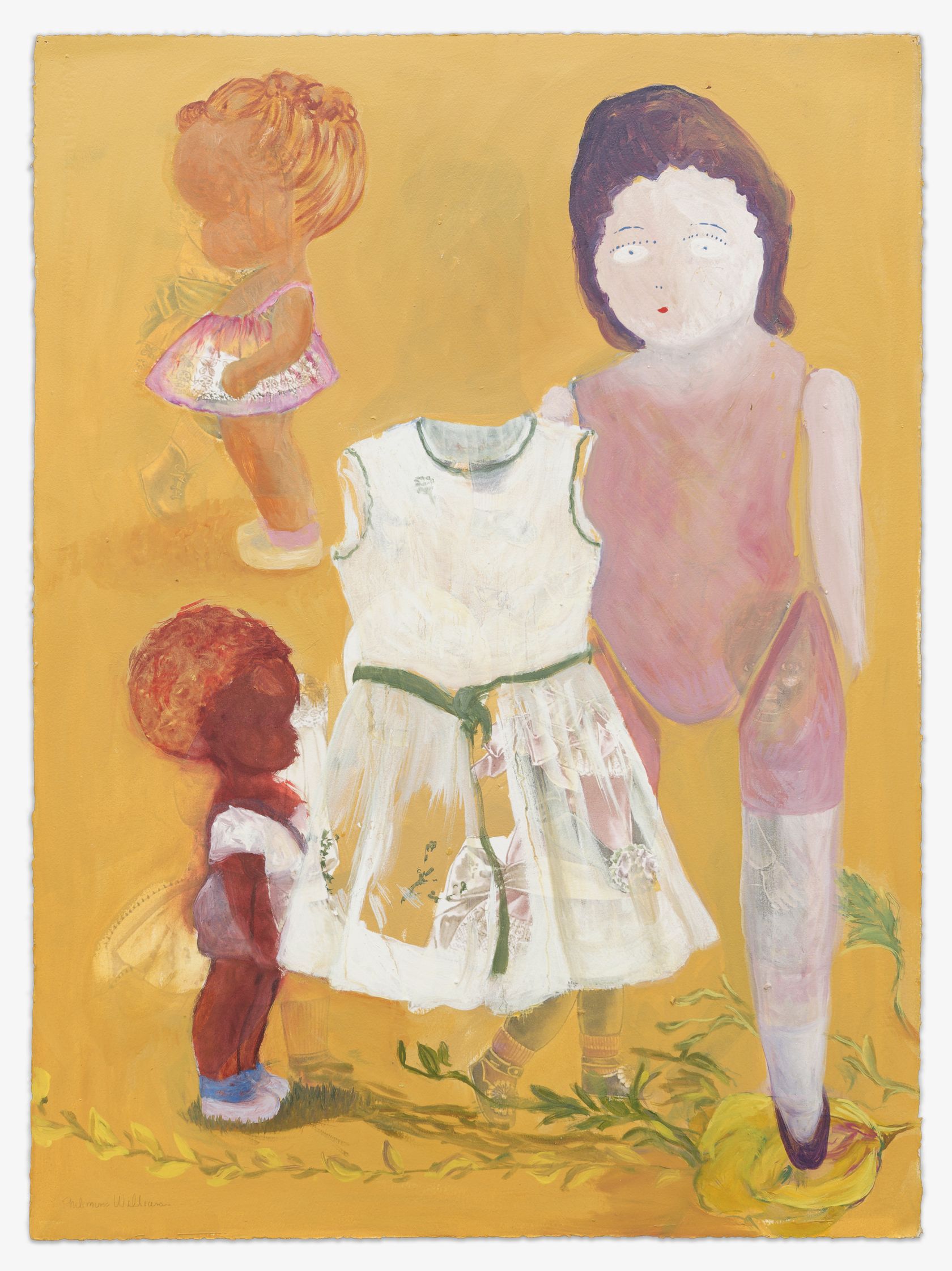
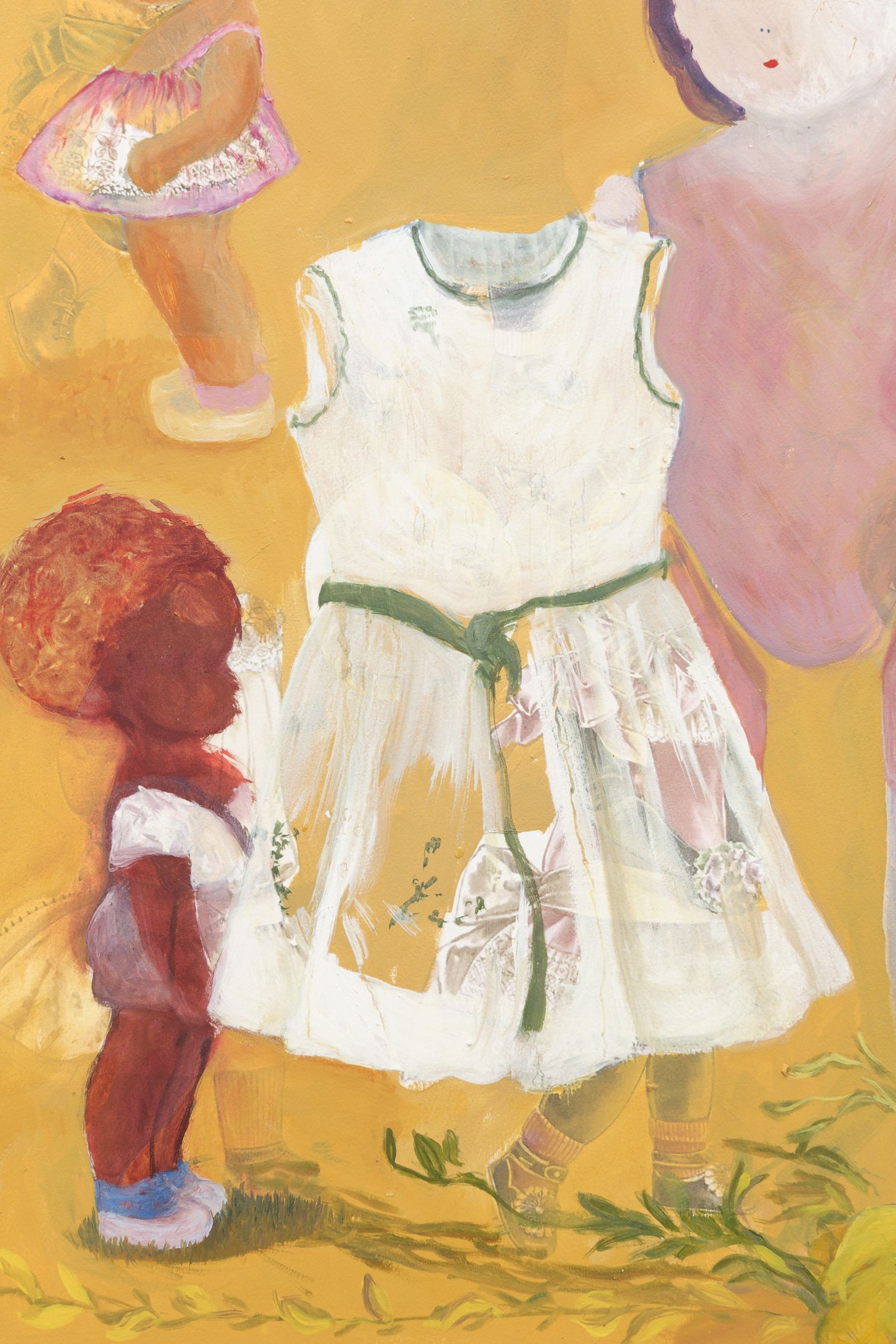
- Philemona Williamson
- Transported Recollection , 2019
- Oil on paper
-
- 76 ×
- 56 × cm
- 30 ×
- 22 × inches
- unframed
- 84 ×
- 64 ×
- 4 × cm
- 33 1/16 ×
- 25 3/16 ×
- 1 9/16 × in
- framed
Xie Lei chose painting through personal conviction, as it opens up a pathway towards a language capable of expressing his sensory universe and a field of experimentation that allows him to delve into the specificity of this medium in the contemporary world. His work always starts with a basis in reality before taking flight to explore uncertain or ambiguous realms that are transformed by his imagination. Most of his paintings refer to murky or disturbing situations, discreetly linked to literary or cinematographic memories or drawn from a profound crucible of personal emotions. His work dwells on the complexity of events and situations and above all their ambiguity and the tensions they foster. His recent painting intrigues through its exploration of a world in-between sleep and death, torment and eroticism. The colors are somber but shift towards the luminous and the powerful. His touch is both fluid and more textured. Xie Lei’s painting is singular in that it offers up an alternative perception of time: in a salutary manner, it suggests a slowing of the spectator’s gaze and an escape from the intoxicating world of immediacy and constant acceleration.
Xie Lei (b. 1983 in China) has lived and worked in Paris since 2006. He graduated from the CAFA in Beijing then the ENSBA in Paris. His works have been exhibited in numerous institutions: Louis Vuitton Foundation, Paris (FR); MO.CO, Montpellier (FR); CAPC, Bordeaux (FR); Villa Noailles, Hyères (FR); Collection Lambert, Avignon (FR); MAC VAL, Vitry-sur-Seine (FR); Langen Foundation, Neuss (DE); Musée National d’Histoire d’Immigration, Paris (FR); Ricard Foundation, Paris (FR). His oeuvres feature in many public and private collections such as the Thyssen-Bornemisza Art Contemporary, MAC VAL, Colas Foundation, Albertina Museum and X Museum. Xie Lei was a resident of the Casa de Velázquez and of the Boghossian Foundation.
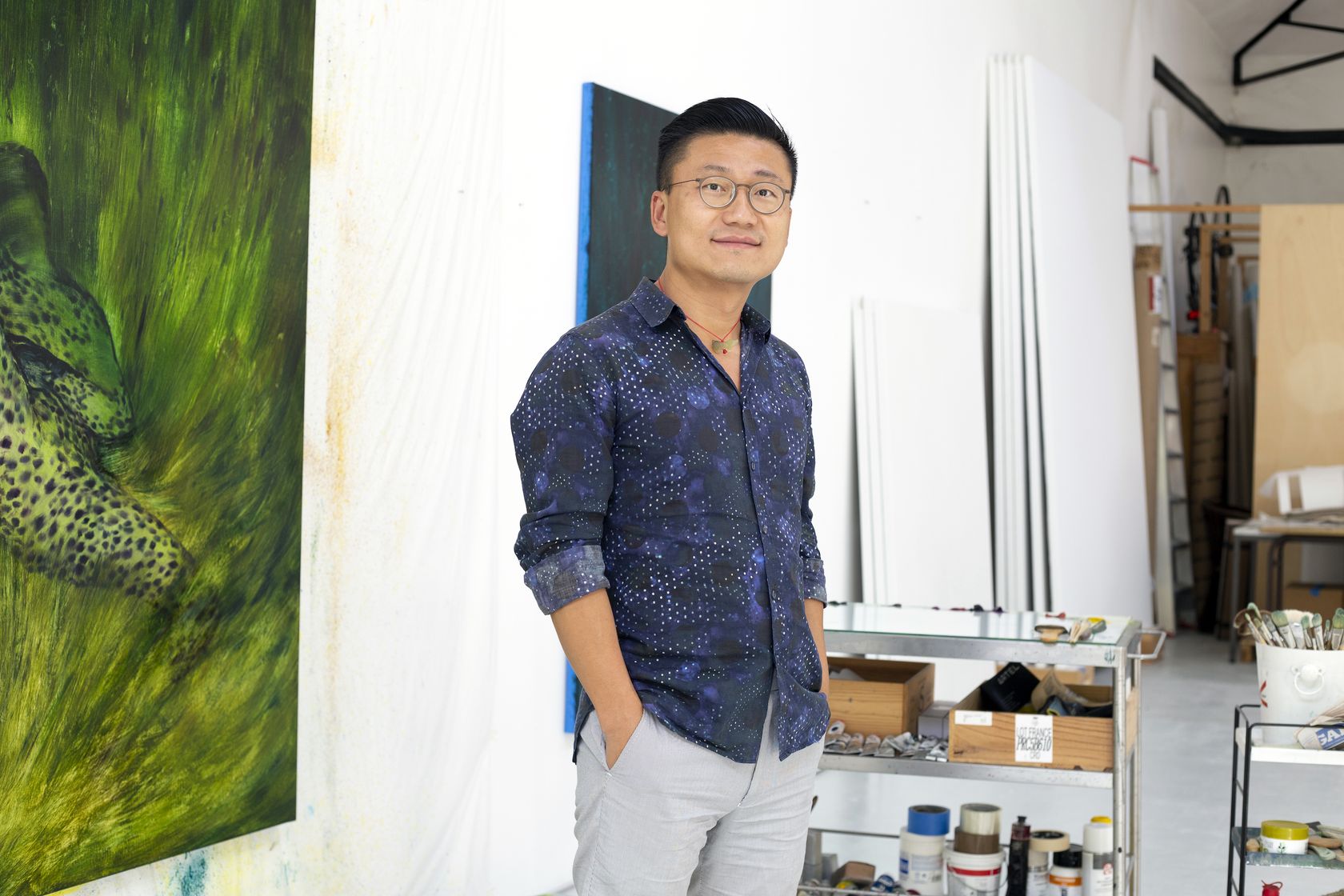
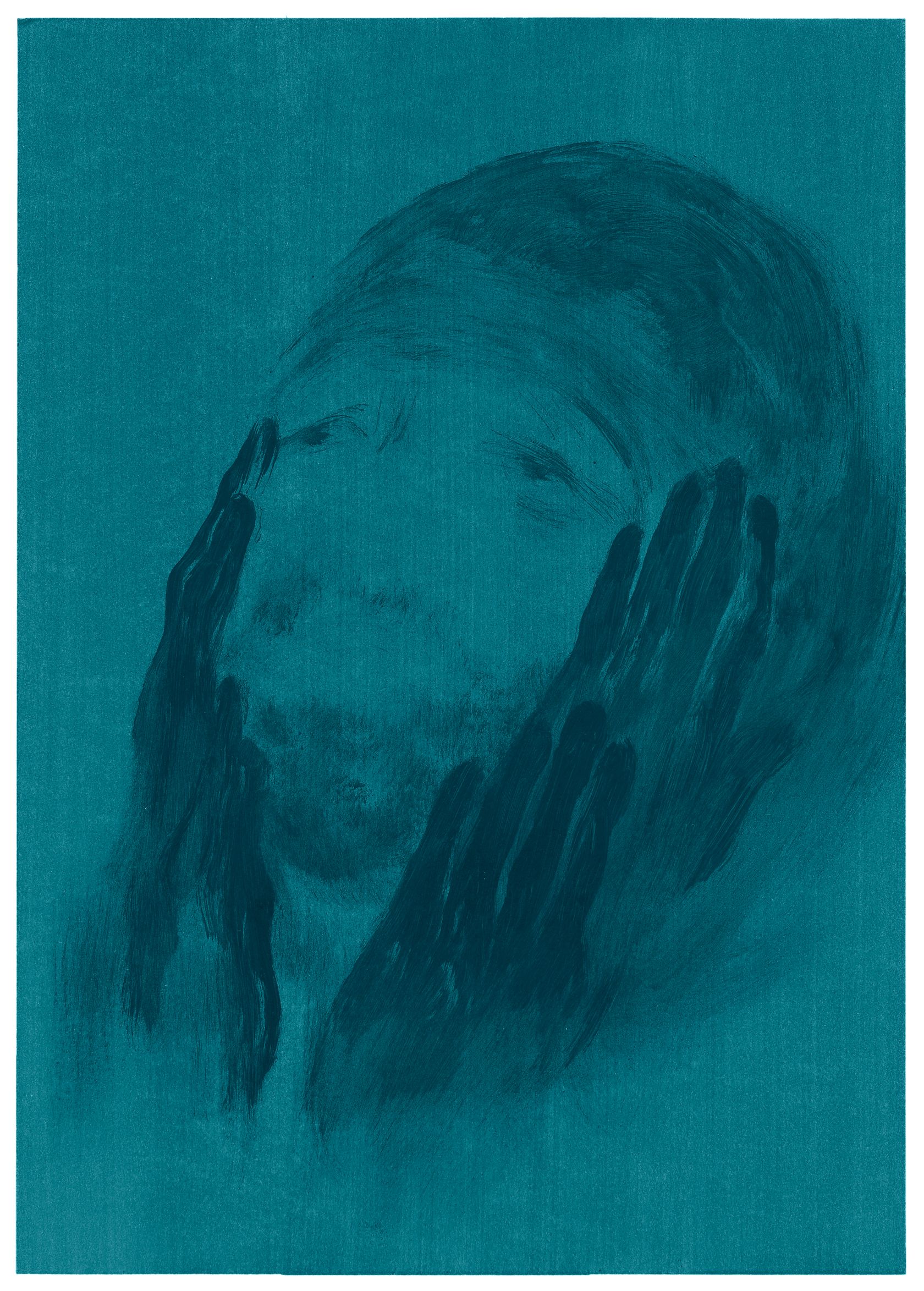
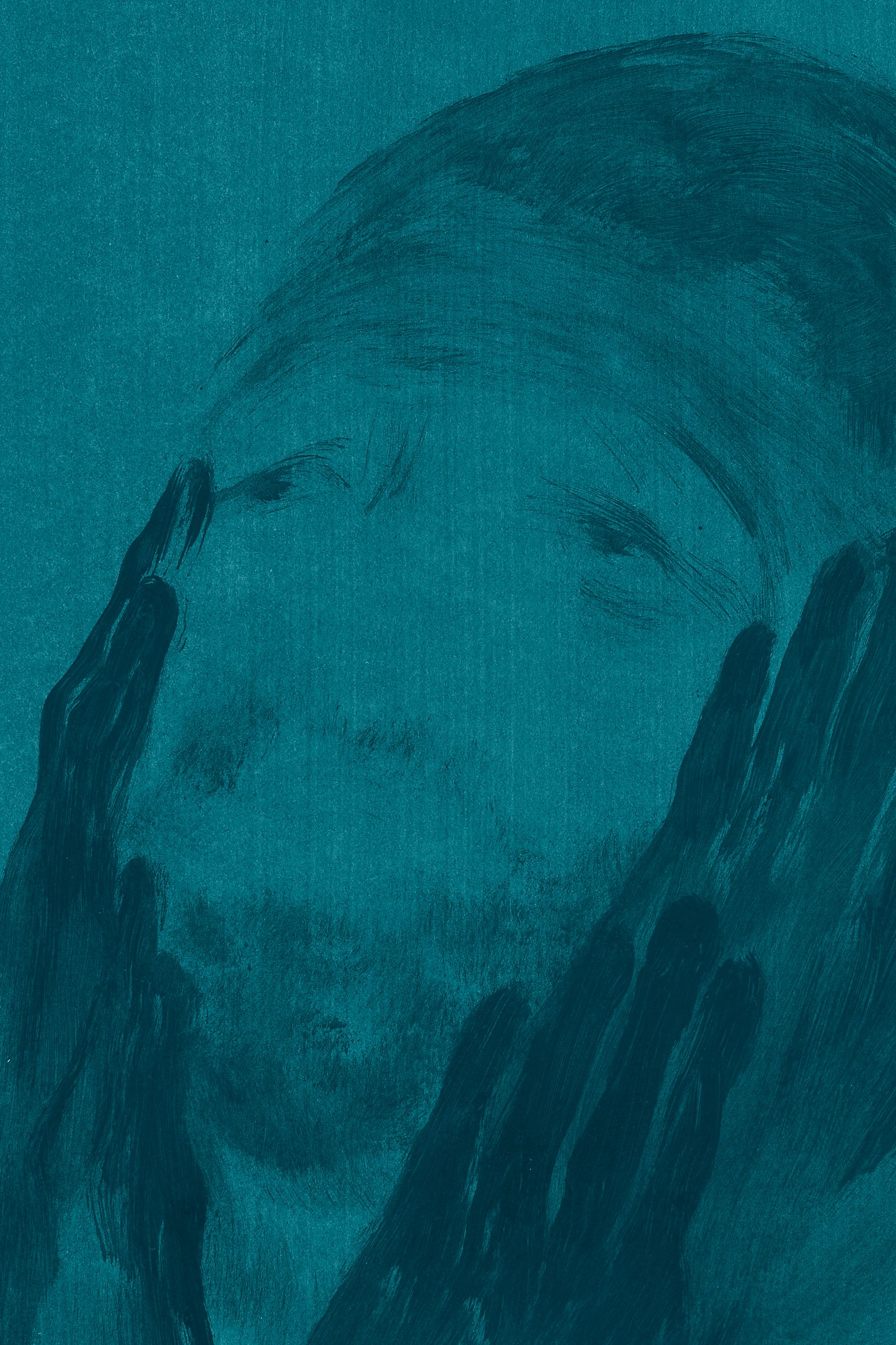
- Xie Lei
- Sans titre , 2024
- Oil on paper
-
- 42 ×
- 30 × cm
- 16 9/16 ×
- 11 13/16 × inches
- unframed
- 52.5 ×
- 40.2 ×
- 3.5 × cm
- 20 11/16 ×
- 15 13/16 ×
- 1 3/8 × in
- framed
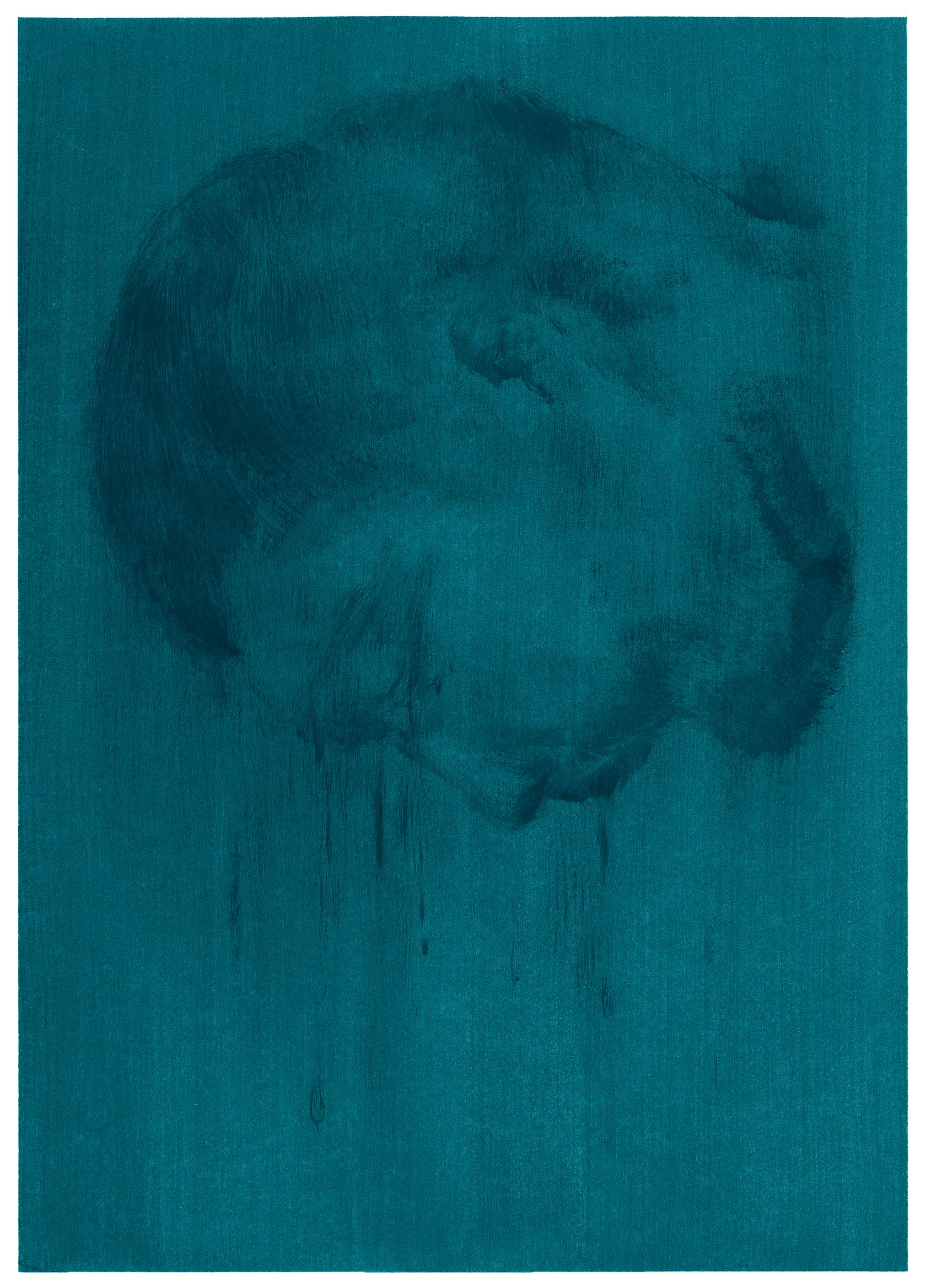
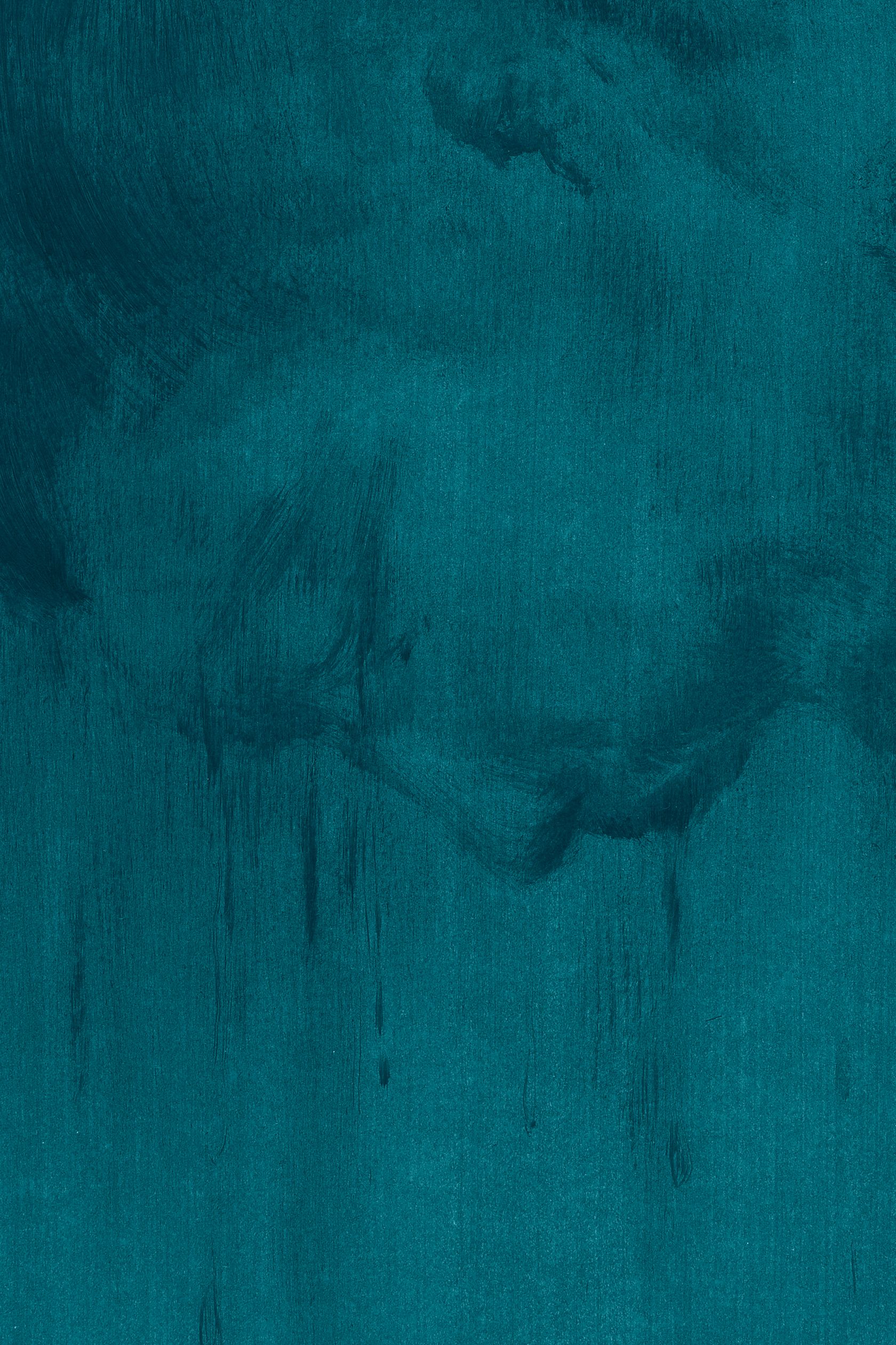
- Xie Lei
- Sans titre , 2024
- Oil on paper
-
- 42 ×
- 30 × cm
- 16 9/16 ×
- 11 13/16 × inches
- unframed
- 52.5 ×
- 40.2 ×
- 3.5 × cm
- 20 11/16 ×
- 15 13/16 ×
- 1 3/8 × in
- framed
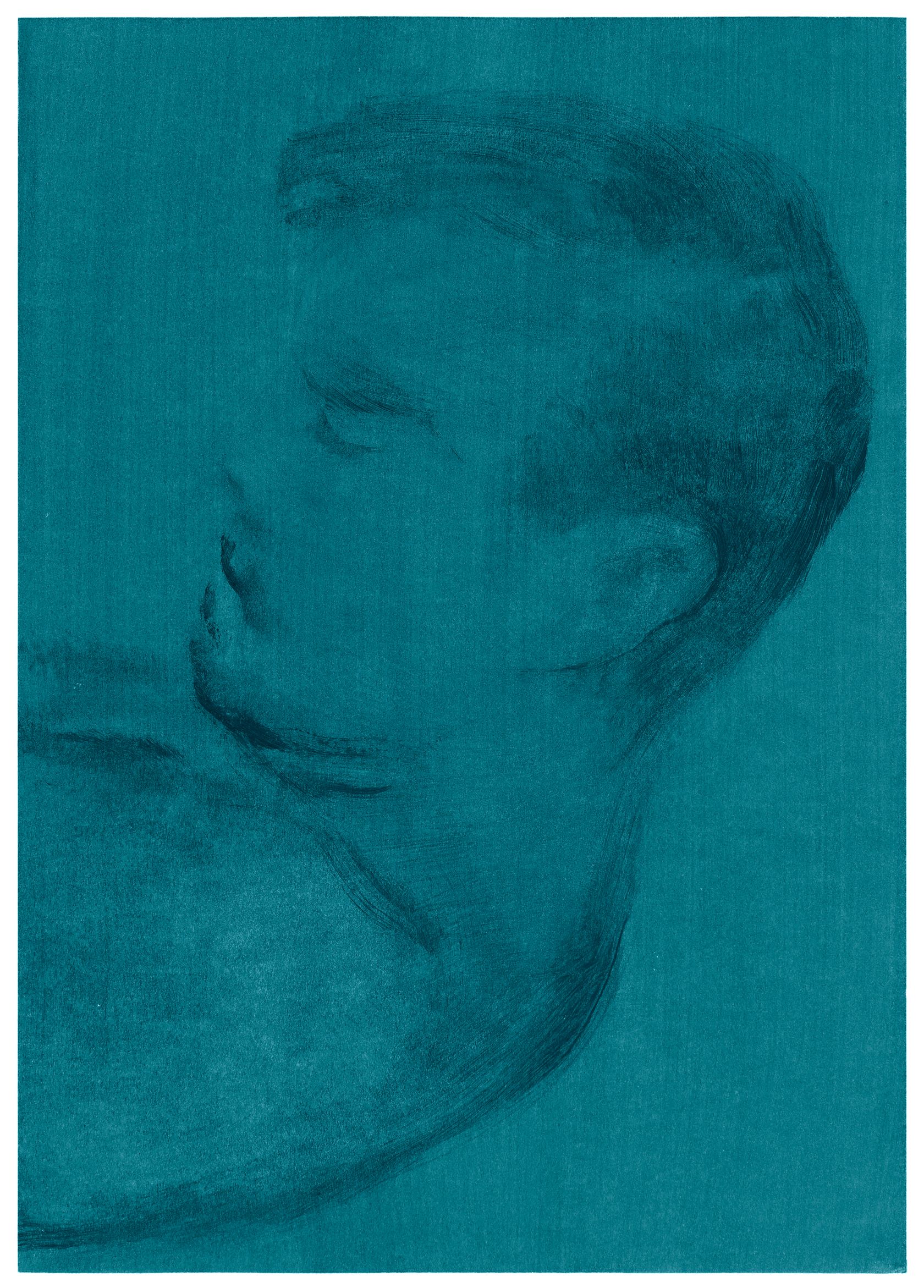
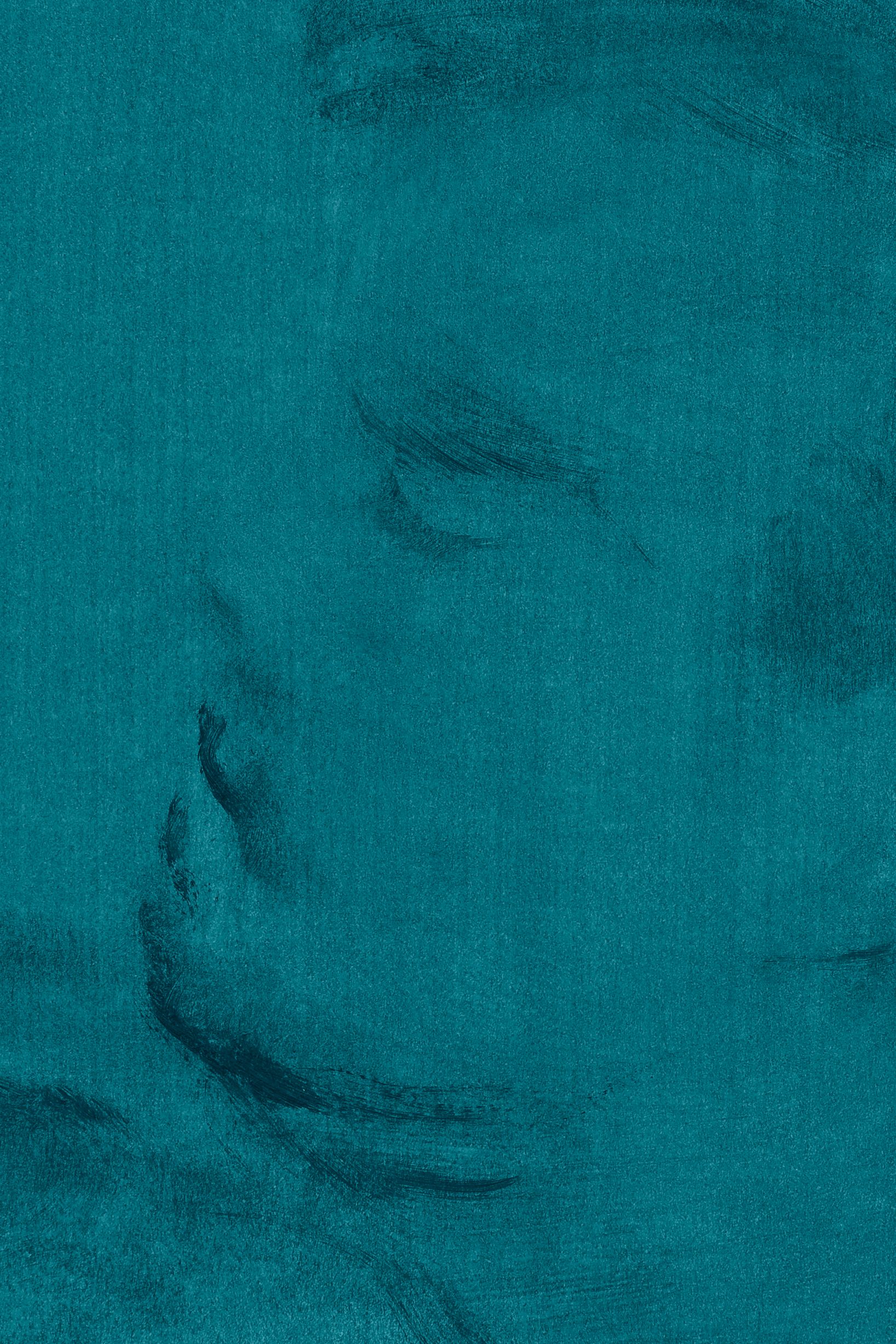
- Xie Lei
- Sans titre , 2024
- Oil on paper
-
- 42 ×
- 30 × cm
- 16 9/16 ×
- 11 13/16 × inches
- unframed
- 52.5 ×
- 40.2 ×
- 3.5 × cm
- 20 11/16 ×
- 15 13/16 ×
- 1 3/8 × in
- framed
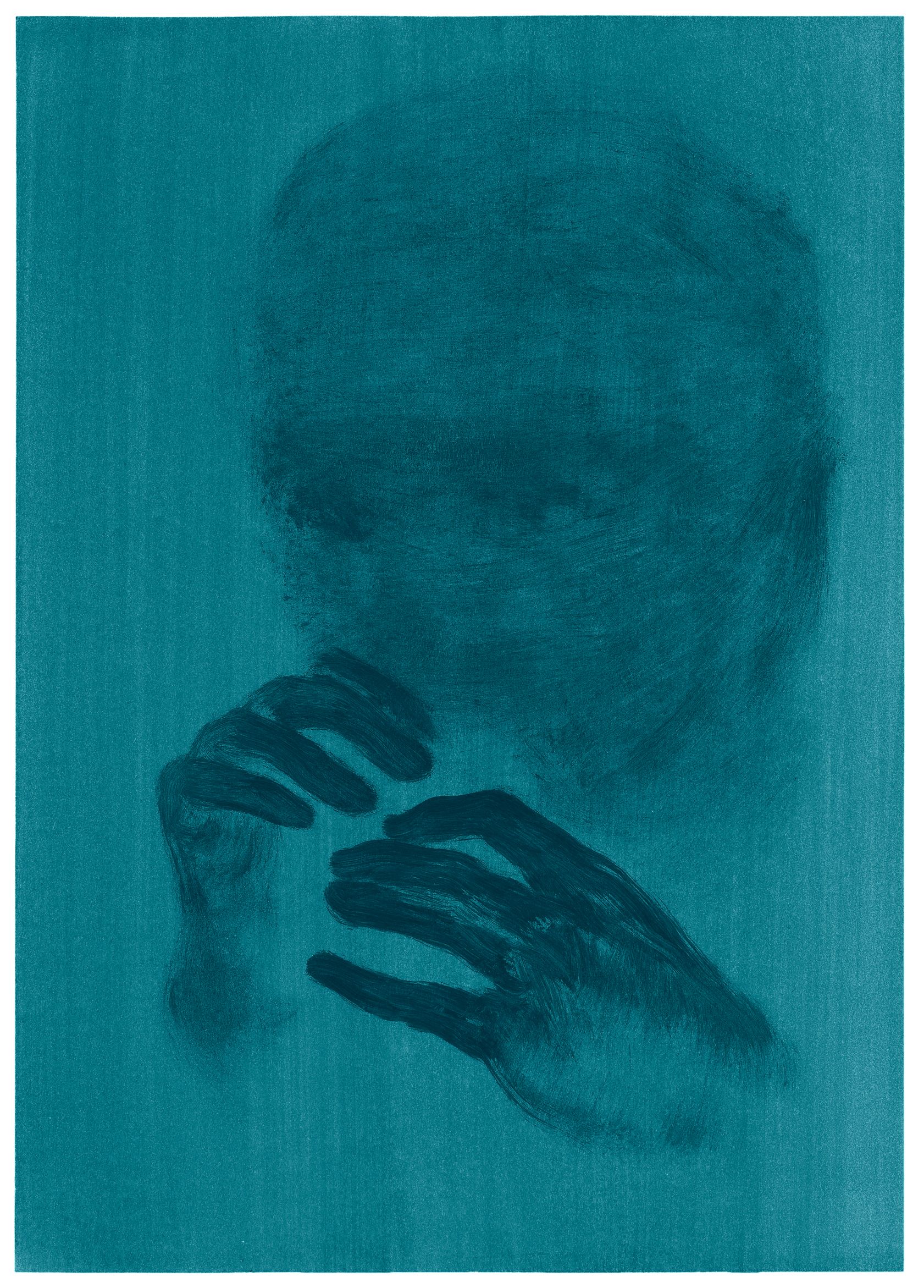
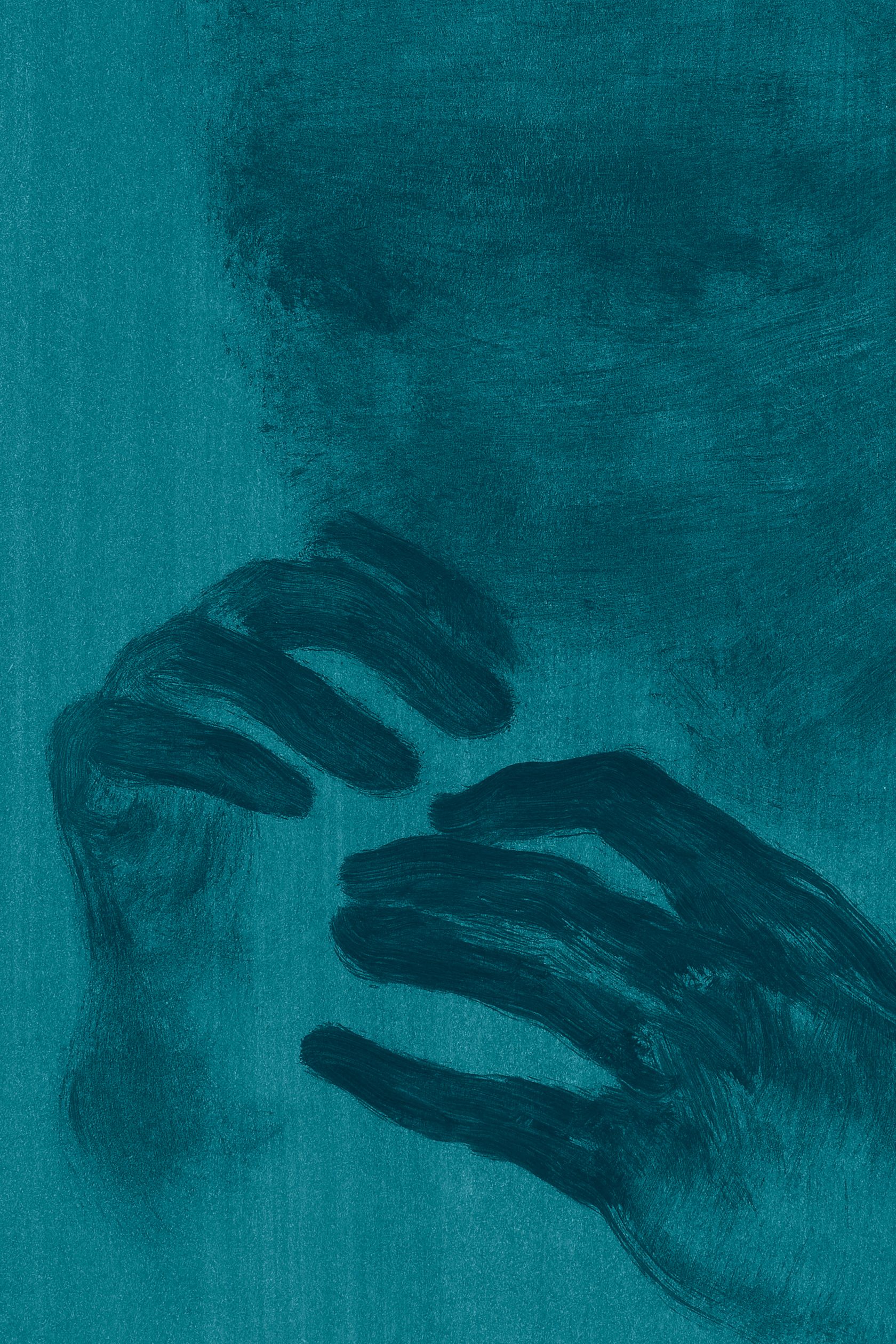
- Xie Lei
- Sans titre , 2024
- Oil on paper
-
- 42 ×
- 30 × cm
- 16 9/16 ×
- 11 13/16 × inches
- unframed
- 52.5 ×
- 40.2 ×
- 3.5 × cm
- 20 11/16 ×
- 15 13/16 ×
- 1 3/8 × in
- framed
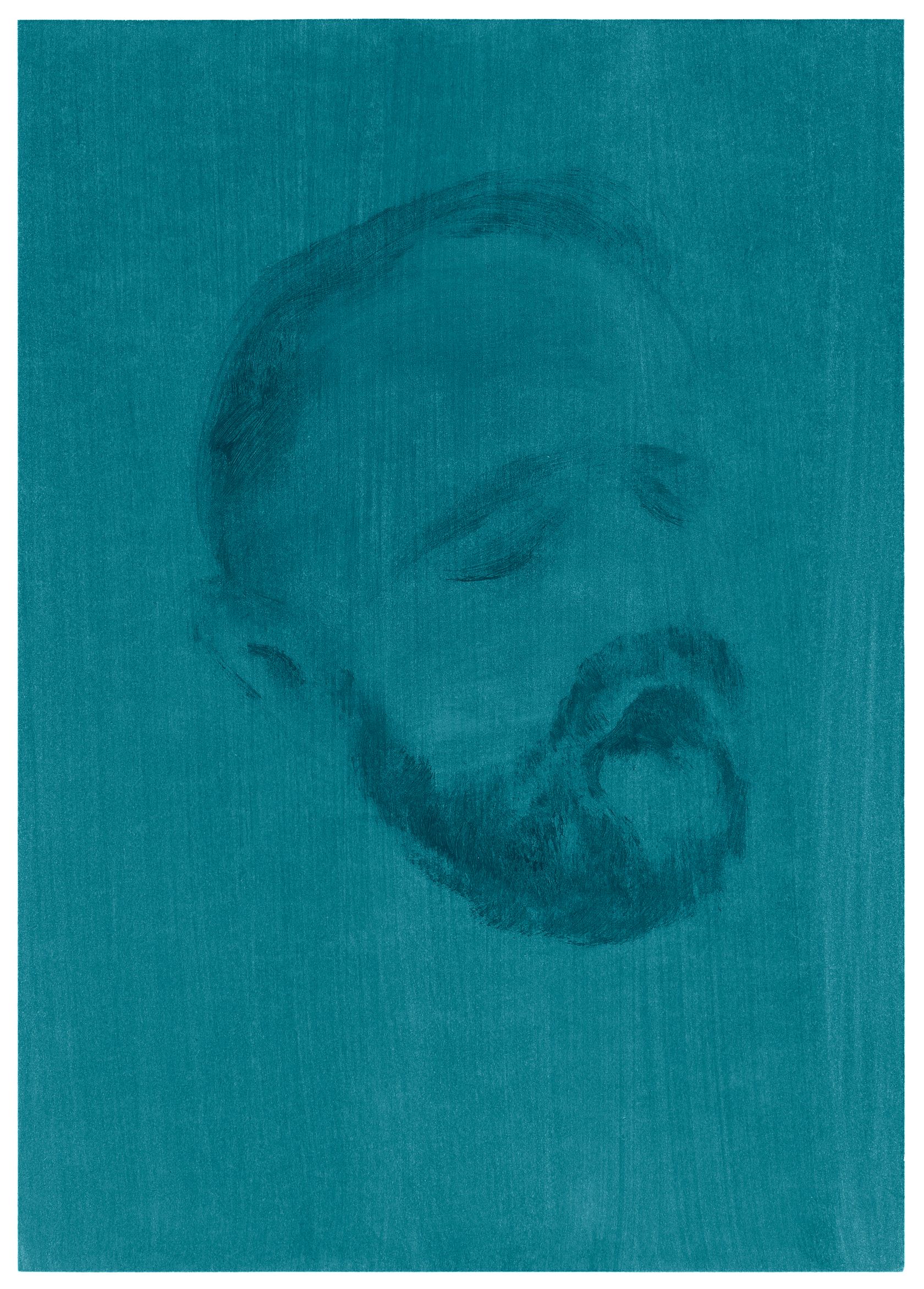
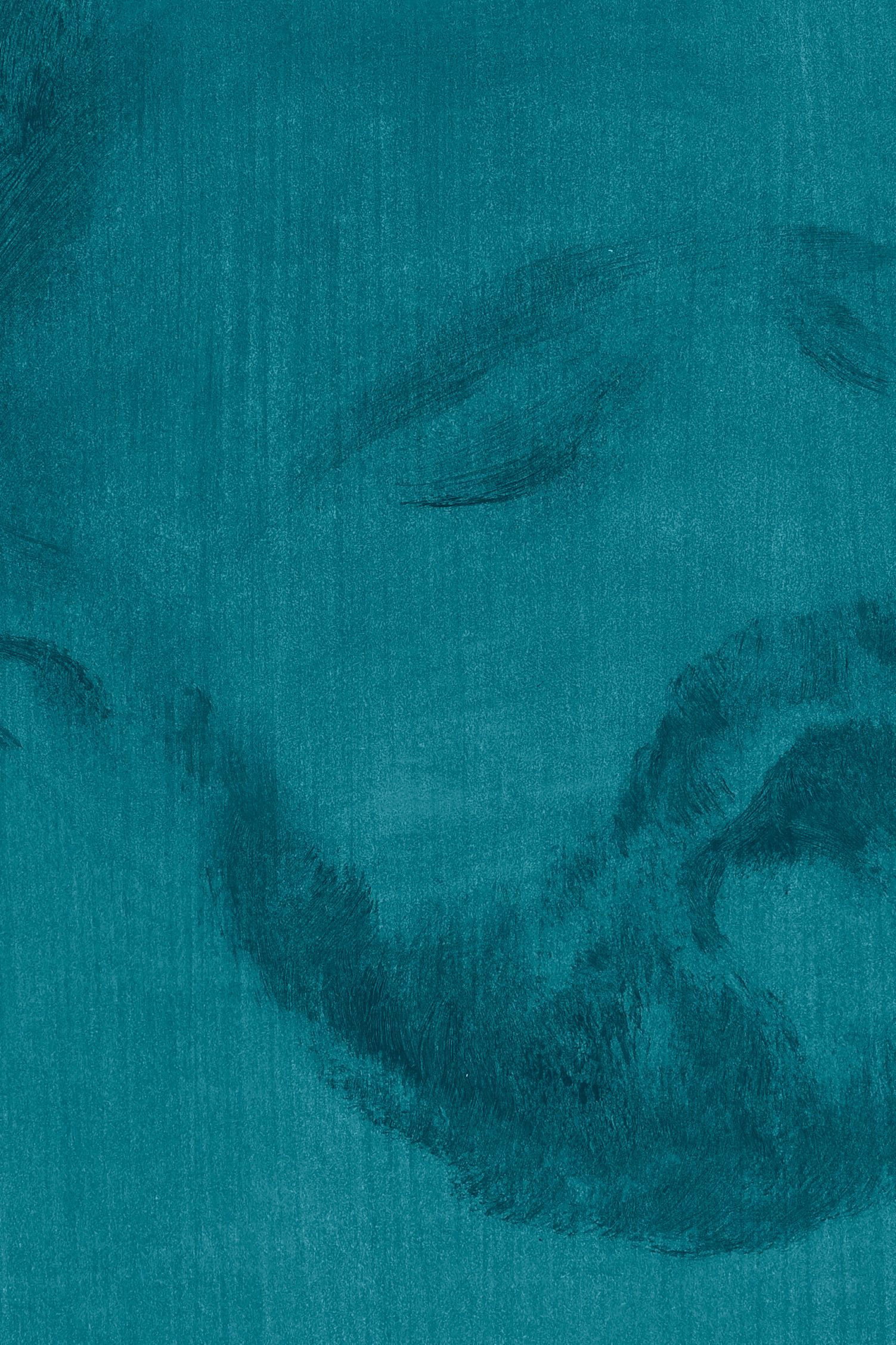
- Xie Lei
- Sans titre , 2024
- Oil on paper
-
- 42 ×
- 30 × cm
- 16 9/16 ×
- 11 13/16 × inches
- unframed
- 52.5 ×
- 40.2 ×
- 3.5 × cm
- 20 11/16 ×
- 15 13/16 ×
- 1 3/8 × in
- framed
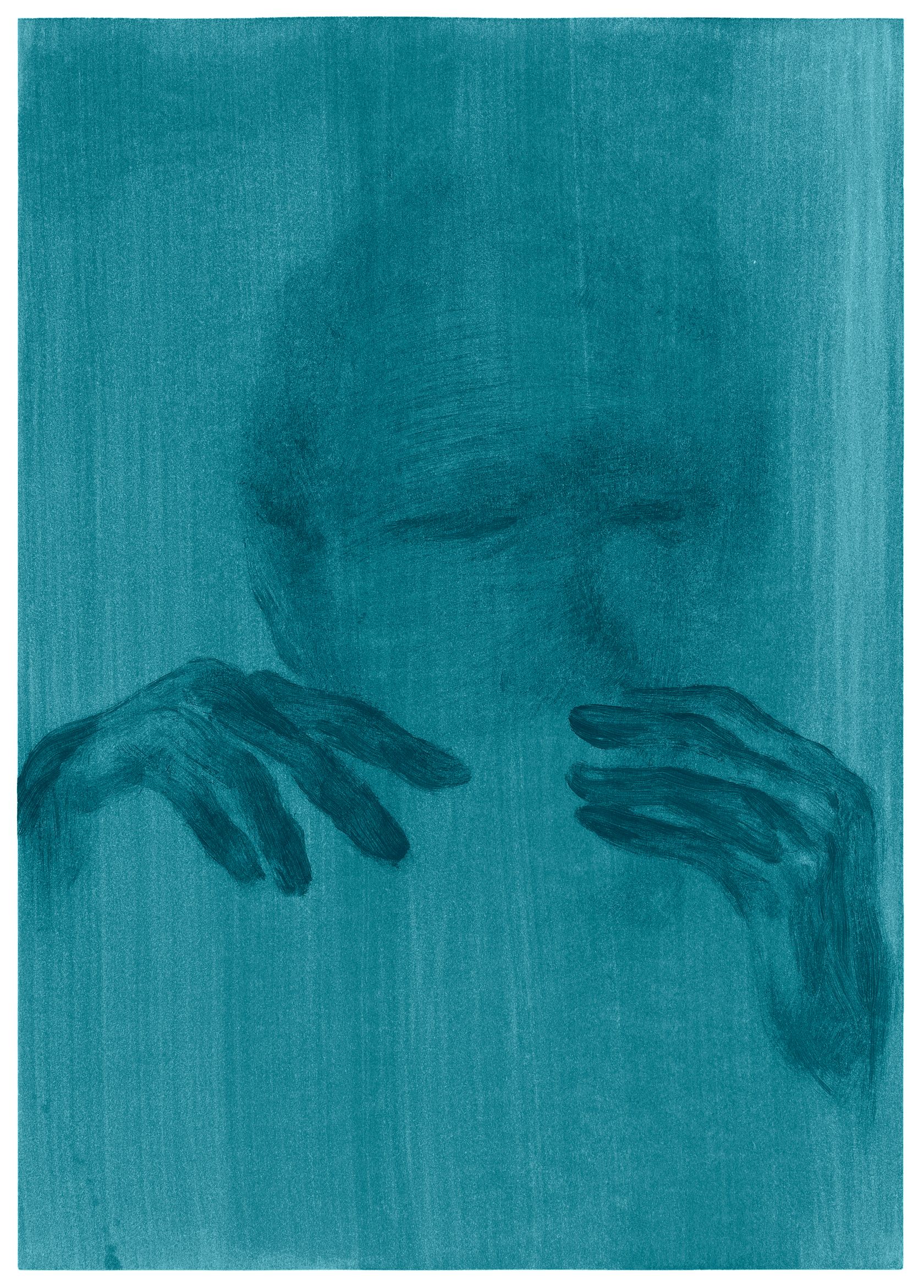
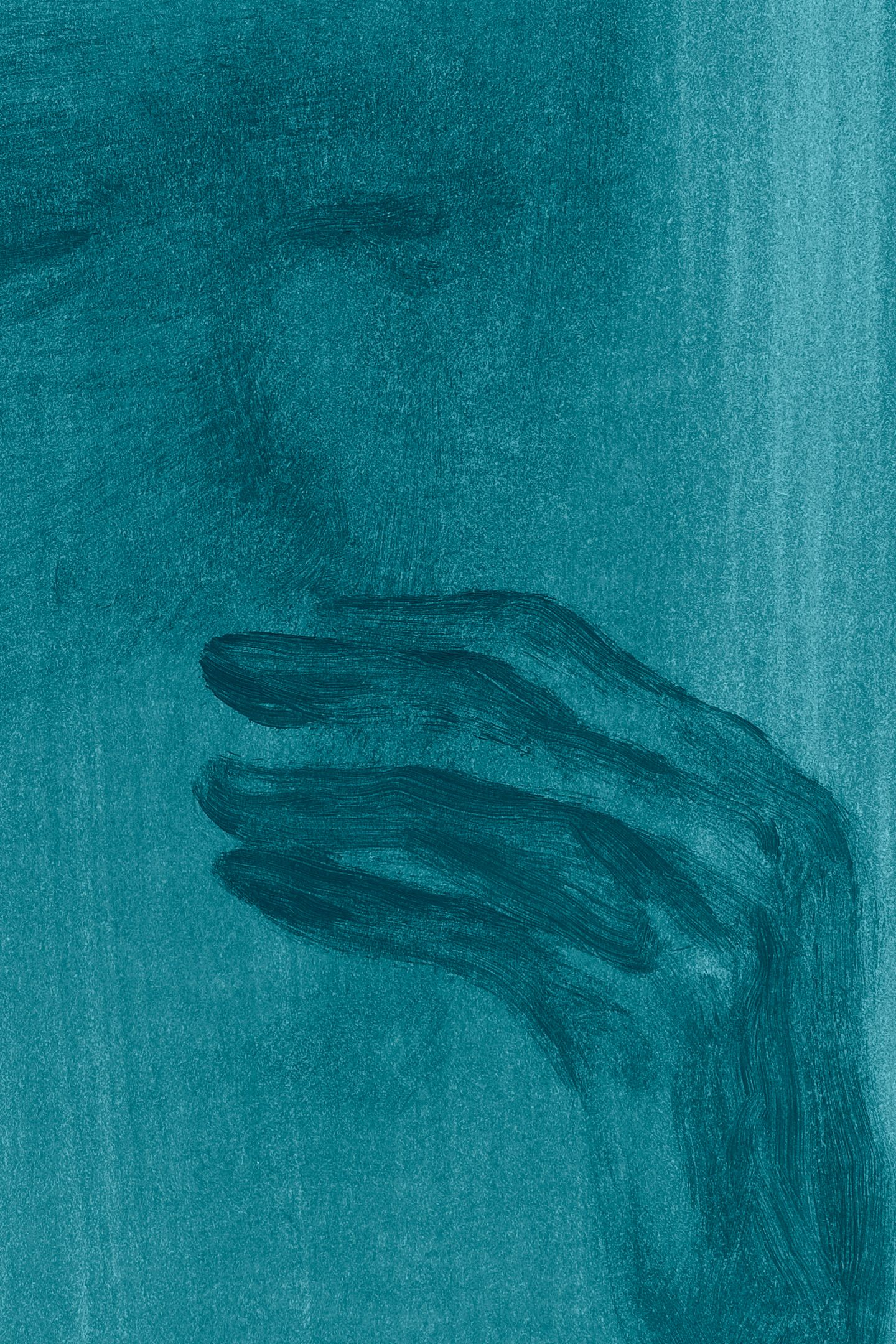
- Xie Lei
- Sans titre , 2024
- Oil on paper
-
- 42 ×
- 30 × cm
- 16 9/16 ×
- 11 13/16 × inches
- unframed
- 52.5 ×
- 40.2 ×
- 3.5 × cm
- 20 11/16 ×
- 15 13/16 ×
- 1 3/8 × in
- framed

